THEIR LOOK
*Juvéderm® offers a range of facial fillers to answer a variety of needs, each of which is administered at a different dermal layer.

We believe natural-looking, long lasting results are achieved by enhancing your client’s features, not changing them.
The Juvéderm® Vycross® range of fillers includes five tailored products designed for a specific area of the face at the optimum dermal level. Which means you can offer your clients a bespoke and tailored treatment to help suit their needs.

Dr Galyna Selezneva shares skincare do’s and don’ts for perinatal patients
Vanessa Bird outlines the process of selecting a
VOLUME 8/ISSUE 12 - NOVEMBER 2021
Device
Choosing a
and Skincare
new device for clinics Pregnancy
Recognising Dermatology Conditions Dermatologists identify important skin conditions CPD: Collagen Supplements Nurse prescriber Caroline
explores collagen supplements in aesthetics Adverse events should be reported. Reporting forms and information can be found at https://yellowcard.mhra.gov.uk Adverse events should also be reported to Allergan Ltd. UK_Medinfo@allergan.com or
494026. Produced and Funded by Juvéderm®. UK-JUV-2150259 May 2021 ©2021 Allergan. All rights reserved. Model treated with Juvéderm®. Individual patient results may vary.
Hill
01628
To find out why Juvéderm® could work for your clients and your clinic on every level, visit juvederm.co.uk
ENTRYAWARDSEXTENDED!
AESTHETICS

LIFT YOUR
THE EXCELLENCE OF SWISS SCIENCE
EXPRESSIONS
RHA 4 DYNAMIC
& SOFT VOLUMIZING
Manufactured to boast resilience and strength when placed within dynamic anatomical zones, this volumizer will provide soft volume within the superficial fat to naturally enhance and contour the mid cheek.
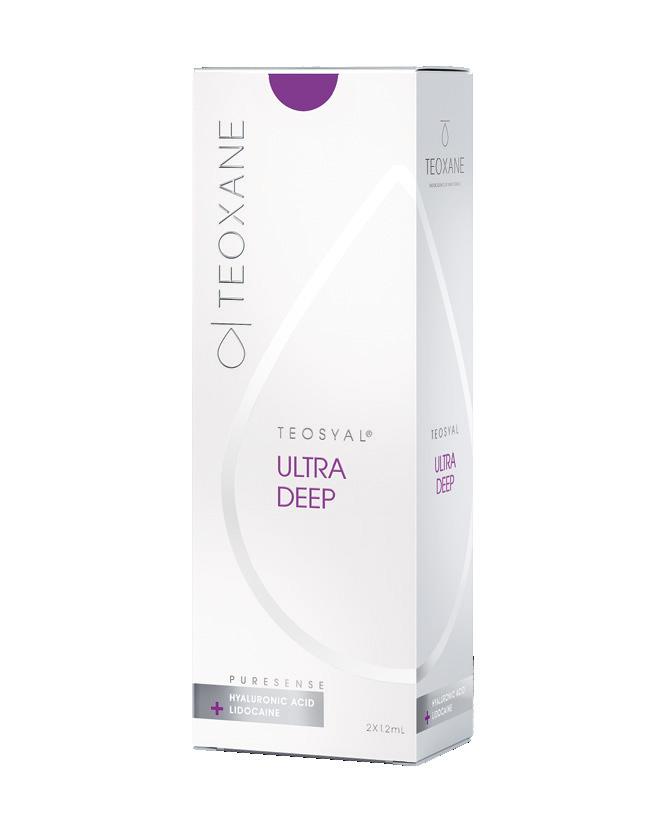

• High strength & stretch
• Low BDDE + High Molecular Weight
A MULTI-LAYERED TECHNIQUE
ULTRA DEEP
DEEP SUPPORT FOR LIFT & PROJECTION
Designed to provide support that has depleted from the deep fat layers during the ageing process. This static, projecting volumizer with high cohesivity offers structural support with optimal lift capacity to the mid-face.
• High cohesivity
• High resistance to compression
Using a combination of two volumizing HA fillers: RHA 4, a dynamic gel that offers soft volume enhancement, alongside Ultra Deep, a static, projecting HA filler that is specifically designed to provide deep structural support, Teoxane can provide a multi-layered approach to treating the mid and lower face.
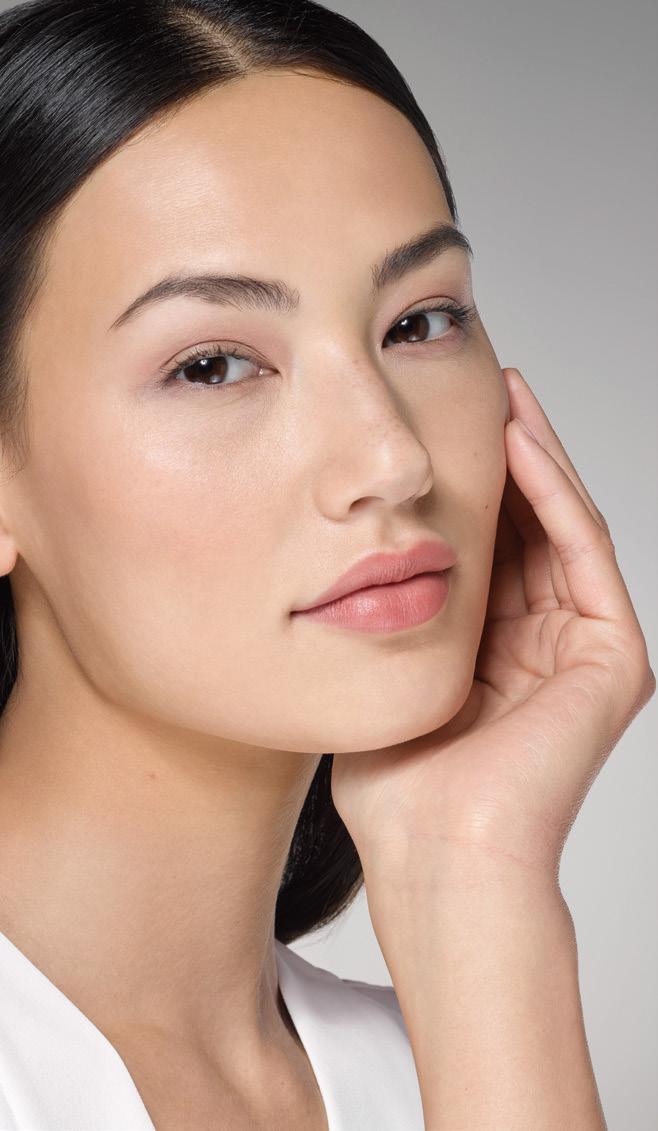
These complementary products are perfectly positioned to offer your patient optimal lifting and volume, whilst maintaining facial dynamism and natural expressions.
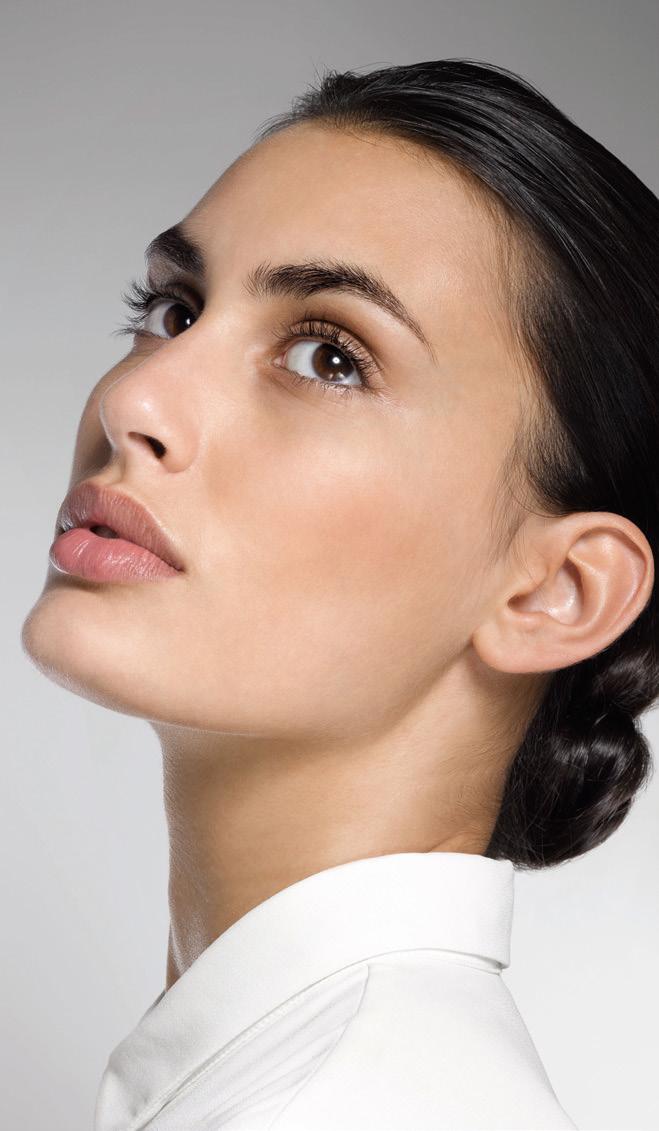


Gentle and hydrating alpha hydroxy acid solution to lighten, brighten and tighten. Hydrates, rejuvenates, and naturally moisturises the skin Effectively treats discolouration for a brighter and more even complexion Reduces redness with anti-inflammatory benefits Exclusively available at Church Pharmacy @PCASkinUK @PCASkin_UK www.ChurchPharmacy.co.uk/PCASkin 01509 357300 info@churchpharmacy.co.uk
Aesthetics
REVANESSE causes a stir within the industry after its launch at CCR

Aesthetics
Miss
Dr
Dr Galyna Selezneva shares her do’s and don’ts for perinatal patients
Dr Dev Patel outlines the role of peptides in skincare 46 Optimising Botulinum Toxin in the Upper Face
Dr Ahmed El-Houssieny presents botulinum toxin use in the upper face 49 Post-lockdown Body Contouring
Cynosure unveils its radiofrequency applicator FlexSure 51 Treating Rosacea with IPL


Dr Magdalena Bejma explains the benefits of using IPL for rosacea 54 Understanding Lip and Perioral Anatomy
Dr Harmony Ubhi outlines the necessity of understanding the lip anatomy 56 Treating Eyes with CO2 Laser
A gold-standard treatment for youthful looking eyes 57 Abstracts
A round-up and summary of useful clinical papers
Dave Baldwin explains his top tips for standing-out online
Miranda Pearce outlines her nine-step complaints management formula 66 Choosing a Device for Your Clinic
Vanessa Bird unveils the process of selecting a new device for your clinic 68 In Profile: Dr Max Malik
Dr Max Malik explains how psychology plays an important role in aesthetics 69 In the Life Of: Dr Stefanie Williams
The dermatologist outlines the development of her skincare range 71 The Last Word: Environmental Impact on Clinics
Dr Heather Muir discusses how clinics can become environmentally friendly
Clinical Contributors
Caroline Hall is an independent nurse prescriber and the owner of R&R Aesthetics in Leeds. She worked as a nurse and midwife within the NHS for 14 years before becoming a full-time aesthetic practitioner in 2016.
Dr Galyna Selezneva is an aesthetic practitioner currently practicing at the Dr Rita Rakus clinic, London. She is a specialist in non-invasive procedures for face and body and uses the latest technology including energy devices.


Dr Dev Patel is a KOL for InMode UK and a Merz Innovation Partner and educator for Merz UK. He has won more than seven awards, personally and on behalf of his clinic, Perfect Skin Solutions and recently launched his own skincare brand, CellDerma.

Dr Ahmed El-Houssieny is a trained anaesthetist with a passion for aesthetics. He is an honorary lecturer at the University of Chester and an education provider on cosmetic procedures. Dr El-Houssieny is also a member of the British College of Aesthetic Medicine.

Dr Magdalena Bejma is an aesthetic practitioner and general practitioner, and the founder of Dr Bejma Medical Clinic in Leeds. Dr Bejma specialises in natural enhancement and is focused on helping her patients obtain a balanced and refreshed look.

Dr Harmony Ubhi is an aesthetics practitioner and trainee in oral and maxillofacial surgery. She has studied medicine at University College London, is a member of the Royal College of Surgeons and is continuing her surgical training in London.

Contents • November 2021
News Special:
Complications
17
Special Feature: Dermatology Conditions Page 23
Toxin
Page
NEXT
08 News The
17
MONTH IN FOCUS: EVOLUTION • HA and Toxin • Black Skin Physiology
latest product and industry news
Reporting Botulinum Toxin Complications
18
looks at a study showing how complications are underreported
Shaking the Industry with REVANESSE
19
CCR 2021: Aesthetics Reunited!
23
Dermatology Conditions
29 Treating
reflects on the biggest CCR to date CLINICAL PRACTICE
Special Feature: Recognising
Dermatologists help identify potentially harmful skin conditions
the Periorbital Region
31 CPD:
Supplements
Rachna Murthy presents her approach to rejuvenation using Juvéderm
Reviewing Collagen
38
Nurse prescriber Caroline Hill explores collagen supplements in aesthetics
Pillars Not Fillers
40
Dev Patel discusses why he believes the term ‘filler’ is no longer relevant
Understanding Pregnancy and Skincare
43
Exploring Peptides in Skincare
IN PRACTICE 58 Improving Your Digital Presence
63 Tackling Patient Complaints






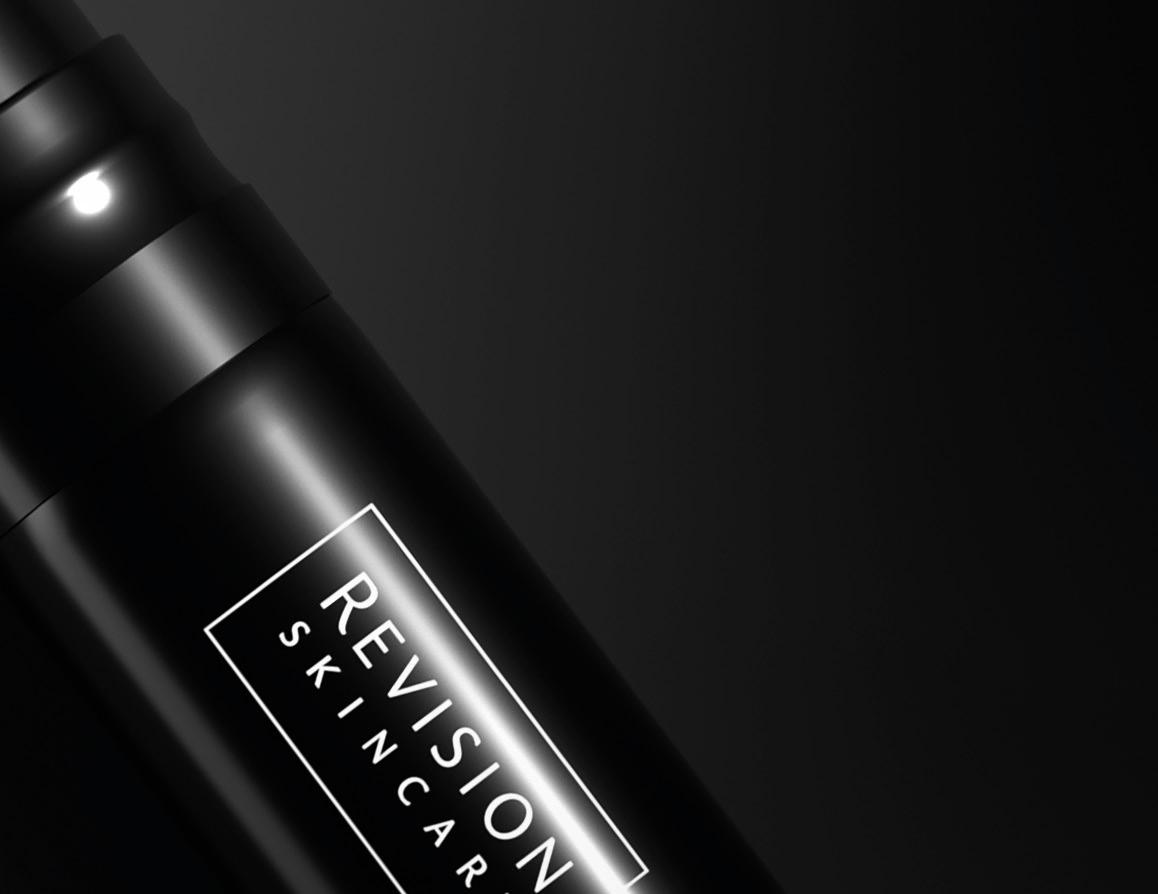



NEW revisionskincare.co.uk JOIN THE CONVERSATION • @revisionskincareUK • #revisionskincareUK • #healthybeautifulskin Distributed in the UK and Ireland by • 01234 313130 • info@aestheticsource.com • www.aestheticsource.com The Power of Synergy: Revox™ Line Relaxer + Neuromodulator When you want the best of both worlds for dramatic, yet natural-looking results
Shannon Kilgariff Acting Editor & Content Manager @shannonkilgariff

The aesthetics specialty united once again at CCR London last month, and it was by far my most memorable two days this year! It was an emotional event, reconnecting with those of you who we hadn’t seen since the start of the pandemic, and it was great to meet new and friendly faces. For many, our first conference since 2019 was the optimum learning opportunity, and for others it was a way to connect with industry suppliers and do some much-needed networking. You can read the CCR highlights on p.19, and pop the 2022 dates in your diary! Our next event is ACE 2022, followed by the long-awaited Aesthetics Awards on the same weekend! The Awards have a special place in my heart, being the longest-serving UK awards ceremony in medical aesthetics and a true way to congratulate the hard work and dedication of so many of you. Due to the excitement of CCR, many of you haven’t
Clinical Advisory Board
been able to finalise your entries, so we are extending the Aesthetics Awards October 30 submission date to November 12. I must stress that this is the last possible date for submissions, so get writing! Now onto this issue of the journal… this month we focus on skin health and have some fabulous content for you to update your knowledge on all things skin. Most notably, we have a CPD verified article on the impact of collagen supplements on the skin (p.31), an overview of skin conditions you mustn’t miss when doing a patient assessment (p.23), considerations for skincare and pregnancy (p.40), peptides as a skincare ingredient (p.43), treating rosacea with IPL (p.51) and much more! We also have some great business content this month in our In Practice section, where you can learn about increasing your digital presence, patient complaints and choosing a new device for your clinic. As always, we would love to hear from you about what you learnt in this month’s journal, what you want to read next and if you have anything interesting to contribute. Tag us on Instagram @aestheticsjournaluk or send us an email – editorial@aestheticsjournal.com
Leading figures from the medical aesthetic community have joined the Aesthetics Advisory Board to help steer the direction of our educational, clinical and business content
Dr Raj Acquilla has more than 12 years’ experience in facial aesthetic medicine. In 2015 he won the Aesthetics Award for Aesthetic Medical Practitioner of the Year and in 2012 he was named Speaker of the Year. Dr Acquilla is a UK ambassador, global KOL and masterclass trainer for botulinum toxin and dermal fillers.

Miss Elizabeth Hawkes is a consultant ophthalmologist and oculoplastic surgeon at the Cadogan Clinic in Chelsea. She specialises in blepharoplasty surgery and facial aesthetics. Miss Hawkes was clinical lead for the emergency eye care service for the Royal Berkshire NHS Foundation Trust. She is an examiner for the Royal College of Ophthalmologists.
Mr Adrian Richards is a plastic and cosmetic surgeon with 18 years’ experience. He is the clinical director of the aesthetic training provider Cosmetic Courses and surgeon at The Private Clinic. He is also a member of the British Association of Plastic and Reconstructive and Aesthetic Surgeons and the British Association of Aesthetic Plastic Surgeons.

EDITORIAL
DESIGN
Sharon Bennett is chair of the British Association of Cosmetic Nurses (BACN) and the UK lead on the BSI committee for aesthetic nonsurgical medical standards. She is a registered university mentor in cosmetic medicine and has completed the Northumbria University Master’s course in non-surgical cosmetic interventions.

Jackie Partridge is an aesthetic nurse prescriber with a BSc in Professional Practice (Dermatology). She has recently completed her Master’s in Aesthetic Medicine, for which she is also a course mentor. Partridge is a founding board member of the British Association of Cosmetic Nurses and has represented the association for Health Improvement Scotland.
Dr Souphiyeh Samizadeh is a dental surgeon with a Master’s degree in Aesthetic Medicine and a PGCert in Clinical Education. She is the clinical director of Revivify London, an honorary clinical teacher at King’s College London and a visiting associate professor at Shanghai Jiao Tong University.


Mr Dalvi Humzah is a consultant plastic, reconstructive and aesthetic surgeon with more than 20 years’ experience and is director of P&D Surgery. He is an international presenter, as well as the medical director and lead tutor of the multi-award-winning Dalvi Humzah Aesthetic Training courses. Mr Humzah is founding member of the Academy of Clinical Educators at the Royal College of Physicians and Surgeons of Glasgow. ARTICLE PDFs

ADVERTISING & SPONSORSHIP
Courtney Baldwin • Event Manager
T: 0203 196 4300 | M: 07818 118 741


courtney.baldwin@easyfairs.com
Judith Nowell • Business Development Manager T: 0203 196 4352 | M: 07494 179535
judith@aestheticsjournal.com
Chloe Carville • Sales Executive T: 0203 196 4367 | chloe.carville@aestheticsjournal.com
Emma Coyne • Sales Executive T: 020 3196 4372 | emma.coyne@easyfairs.com
MARKETING
Aleiya Lonsdale • Head of Marketing T: 0203 196 4375 | aleiya.lonsdale@easyfairs.com
Aimee Moore • Marketing Manager

T: 020 3196 4370 | aimee.moore@easyfairs.com
Abigail Larkin • Marketing Executive T: 020 3196 4306 | abigail.larkin@easyfairs.com
Dr Tapan Patel is the founder and medical director of PHI Clinic. He has more than 16 years’ clinical experience and has been performing aesthetic treatments for more than 14 years. Recently, he was listed in Tatler’s Top 30 AntiAgeing Experts. Dr Patel is passionate about standards in aesthetic medicine.

Dr Stefanie Williams is a dermatologist with special interest in aesthetic medicine. She is the founder and medical director of the multi-award winning EUDELO Dermatology & Skin Wellbeing in London. She lectures in the Division of Cosmetic Science and has published more than 100 scientific articles, book chapters and abstracts.

AND REPRO
Material may not be reproduced in any form without the publisher’s written permission. For PDF file support please contact Chloe Carville, contact@aestheticsjournal.com
© Copyright 2021 Aesthetics. All rights reserved. Aesthetics is published by Aesthetics Media Ltd, which is registered as a limited company in England; No 9887184
Editor’s letter
DISCLAIMER: The editor and the publishers do not necessarily agree with the views expressed by contributors and advertisers nor do they accept responsibility for any errors in the transmission of the subject matter in this publication. In all matters the editor’s decision is final. PUBLISHED BY Aesthetics Journal @aestheticsgroup Aesthetics @aestheticsjournaluk
you have any techniques to share, case studies to showcase or knowledge to impart?
WE WANT TO HEAR FROM YOU! Aesthetics Media PORTFOLIO MANAGEMENT
Willis Director
761198 |
Mr Dalvi Humzah, Clinical Lead Do
Email editorial@aestheticsjournal.com
Alison
T: 07747
alison.willis@easyfairs.com
Shannon Kilgariff Acting Editor & Content Manager T: 0203 196 4351 | M: 07557 359 257 shannon@aestheticsjournal.com
Leonie Helm Acting Deputy Editor T: 0203 196 4268 leonie.helm@easyfairs.com Holly Carver Journalist | T: 0203 196 4427 holly.carver@easyfairs.com Ellie Holden Content Writer | T: 0203 196 4427 ellie.holden@easyfairs.com
Peter Johnson • Senior Designer T: 0203 196 4359 | peter@aestheticsjournal.com
Talk #Aesthetics
Regulation Cosmetic injections become illegal to under-18s
#CCR
Sharon Bennett
@sharonbennettskin
A wonderful time at CCRbrimming with excitement and amazing content delivered by Dr Arthur Swift on stage (and many others)!
#Aestheticsjournal
Dr Emmaline Ashley @doctor.emmaline
I’m so proud of this CPD article I wrote for the October issue. I hope this article will serve as a useful reference to healthcare professionals in this field #education
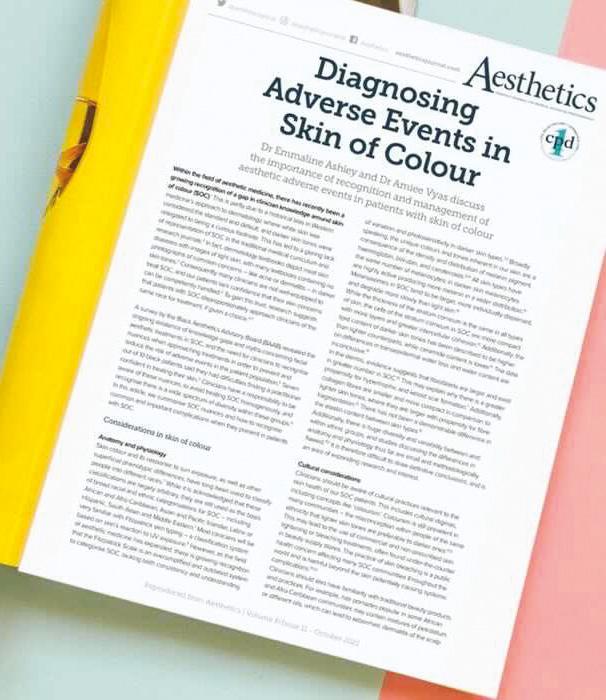
The Botulinum Toxin and Cosmetic Fillers (Children) Act has now come into force. The new law means it will be a criminal offence to administer botulinum toxin or filler by way of an injection for a cosmetic purpose, to a person under the age of 18 in England. It will also be an offence to make arrangements for, or to book an appointment for an under-18 to receive these treatments.
The new law applies to everyone in England, including providers of clinical healthcare services and regulated healthcare professionals working in these services, individuals performing the procedures on an informal basis, and commercial providers of cosmetic procedures, for example beauty therapists and mobile aesthetic practitioners.
The law still applies even if the person under-18 does not live in England, is visiting, and if they have the permission from someone over 18. Under the new law, the treatments can still be approved for use on under-18s by a registered medical practitioner for medical reasons. Failure to comply with the new law could result in a criminal prosecution and an unlimited fine.
#Complications
Dr Beatriz Molina @medikas.medispa
Great to be back on stage presenting on complications at @crrlondon
#Conference
Professor Firas Al-Niaimi @drfirasalniaimi_
A great honour and privilege to be invited to speak at the GEDET conference in Spain and catching up with great colleagues and friends

Professor David Sines, chair of the Joint Council for Cosmetic Practitioners (JCCP), commented, “The JCCP is delighted to support the implementation of the new law and has been campaigning for several years for such a change. This new legislative change will now service to protect younger people from undue media incitement, encouraging them access to non-medical related aesthetic treatments in the form of injectable toxins and dermal fillers.”
Safety
BCAM launches new industry collaboration
The British College of Aesthetic Medicine (BCAM) has released a new initiative to engage with other organisations and associations in the sector.

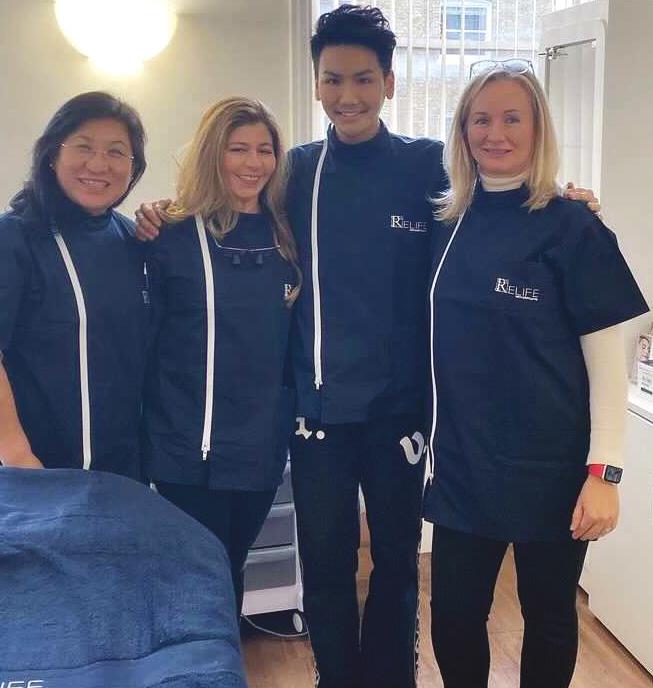


The BCAM Stakeholder Engagement Initiative brings together fellow organisations in aesthetic medicine in the UK to share practice, promote patient safety and lobby for better regulation to treatments.
#Threads
Dr Vincent Wong @drvincentwong
I had such an amazing day teaching the Definesse threads techniques to a wonderful group of delegates. Thank you @relife_company for having me!
BCAM already work closely with the Department of Health and Social Care (DHSC), sharing data that informs government decision-making, and is involved in consultations with the Medicines and Healthcare products Regulatory Agency (MHRA).
BCAM president Dr Uliana Gout said, “Over the past few months, we have worked closely with partners including the MHRA, Joint Council of Cosmetic Practitioners and the British Association of Cosmetic Nurses. We have decided to launch an initiative to bring together stakeholders for regular meetings where we can share information and work together on improving standards, increasing public safety and raising awareness of the importance of consulting healthcare professionals for aesthetic treatments.”
Follow us on Twitter @aestheticsgroup and Instagram @aestheticsjournaluk
@aestheticsgroup @aestheticsjournaluk Aesthetics aestheticsjournal.com Reproduced from Aesthetics | Volume 8/Issue 12 - November 2021
Filler Galderma announces agreement with Sofregen
Pharmaceutical company Galderma has entered an agreement with Sofregen Medical to develop a new bio-stimulating filler based on silk technology. Sofregen’s silk technology combines silk protein with a hyaluronic acid carrier. Under the agreement, both companies will perform specified co-development activities related to a portfolio of novel silk-based biostimulator fillers. Galderma will also have an exclusive option to acquire Sofregen’s Silk Voice, a silk-based bio-stimulating injectable implant, as well as assets associated with its aesthetics business, Galderma explains. This would grant Galderma all rights to the products being co-developed by the parties, as well as ownership of Sofregen’s platform in the aesthetic and dermatological field. Galderma and Sofregen plan to launch the development programmes for all products imminently, with both companies looking to get the collaboration underway and bring the products to market as soon as possible, Galderma notes.
Baldo Sforzolini, global head of research and development at Galderma, commented, “Combining Galderma’s capabilities and scale with Sofregen’s novel silk platform represents a watershed moment for the aesthetics market through the development of a new category of biostimulator fillers designed to make an impact for healthcare professionals and their patients.” Chief executive officer of Sofregen Jonathan Hartmann said, “Galderma is a world leader in dermatology, with decades of experience in delivering cutting edge innovation in facial aesthetics and we are thrilled to have them as a partner. This agreement highlights Sofregen’s dedication to advancing the science of silk and will accelerate our ability to develop the next generation of biostimulator fillers with a recognised leader in this space.”
Regulation
ATPA responds to APPG report
The Aesthetics Training Provider Association (ATPA) has addressed in a letter to its faculty its views on the recent report outlined by the All-Party Parliamentary Group on Beauty, Aesthetics and Wellbeing (APPG). The report, which was published in July, detailed 17 recommendations to the Government to aid the regulatory gap. The ATPA is made of UK training providers Acquisition Aesthetics, Cosmetic Courses, Derma Medical and SkinViva Training. The ATPA expressed frustrations over the failure to implement a standardised qualification, which had been outlined in the previous report. The Health Education England, commissioned by the Department of Health developed a standardised qualification in aesthetic medicine named the ‘Level 7 Diploma or certificate’. This received support by fellow professionals of the industry who were instructed to expect the qualification to become mandatory for any practitioner wanting to perform injectable cosmetic treatments including botulinum toxin and dermal fillers. However, this has not happened. Members of the ATPA have sought to provide the Level 7 qualification on the instruction that it would become a legal requirement to practice aesthetics. As well as this, the ATPA has ensured its training is conductive to the production of safe aesthetic practitioners. Co-director of Acquisition Aesthetics, Miss Lara Watson, said, “This letter represents a plea to governmental organisations and regulators to engage with and support responsible training providers in aesthetic medicine who are battling on the frontline of the issue. Only through this sort of collaboration and mutual commitment to action can we hope to have a meaningful impact on the standards of aesthetic practice in the UK.”
Vital Statistics
46% of 2,000 adults agree that skincare products have evolved with more items aimed at men (centre:mk, 2021)
In a survey of 1,000 adults, the top five treatments researched online were botulinum toxin, weight loss injections, dermaplaning, lip filler and other fillers for the face (Primed Pharmacy, 2021)
Data shows that 500 million Instagram users look on Stories every day (Hootsuite, 2021)
‘Lip filler’ is the most popular non-surgical procedure on TikTok in 2021 with more than 1.8 billion views (Express Dentist, 2021)
In a survey of 5,065 consumers, 58% said they had rejected a brand because of its environmental, corporate or political values (Cheetah Digital, 2021)
74% of 4,700 US female consumers use retinol to treat fine lines and wrinkles (The Benchmarking Company, 2021)
@aestheticsgroup @aestheticsjournaluk Aesthetics aestheticsjournal.com Reproduced from Aesthetics | Volume 8/Issue 12 - November 2021
Events Diary
13th November 2021
The British Association of Sclerotherapy virtual workshop bassclerotherapy.com
20th November 2021
Aesthetics United Charity Conference 2021 aucc.co.uk
11th-12th March 2022
Aesthetics Conference and Exhibition 2022 aestheticsconference.com
12th March 2022
Aesthetics Awards 2022 aestheticsawards.com
5 Squirrels unveils new cleanser
Skin
VIVACY launches skincare range for men

Aesthetic product manufacturer VIVACY Laboratories has introduced its first skincare line for men. The Monsieur skincare range includes the Refreshing Skincare Water which aims to boost skin hydration, whilst providing freshness to the skin. The Instant Soothing Gel is designed to reduce razor burn, relieve irritation, and repair the skin after shaving; the Expert Moisturising Care aims to nourish the skin; the Smoothing Anti-Wrinkle serum is created to smooth wrinkles and fine lines; and the Global Antiageing Care aims to moisturise the skin. Ingredients within the range include hyaluronic acid with treignac mineral water, which contains silica for sensitive and weakened skin, the company explains. VIVACY will also be hosting skincare training days where the company will showcase its latest products whilst providing retailing and digital marketing tips. The next training day will be on November 3 at the company’s head offices in Mayfair, London.
Digital
Private label cosmeceutical supplier 5 Squirrels has released a new cleanser to its Your Signature Range.
According to the company, the Clear cleanser is suitable for oily and acne prone skin. Ingredients include 10% glycolic acid which aims to reduce pore size and fine lines, 2% salicylic acid for anti-inflammatory properties, reducing flare-ups and breakouts and 2% lactic acid to exfoliate the skin, lighten dark spots and improve cell turnover.
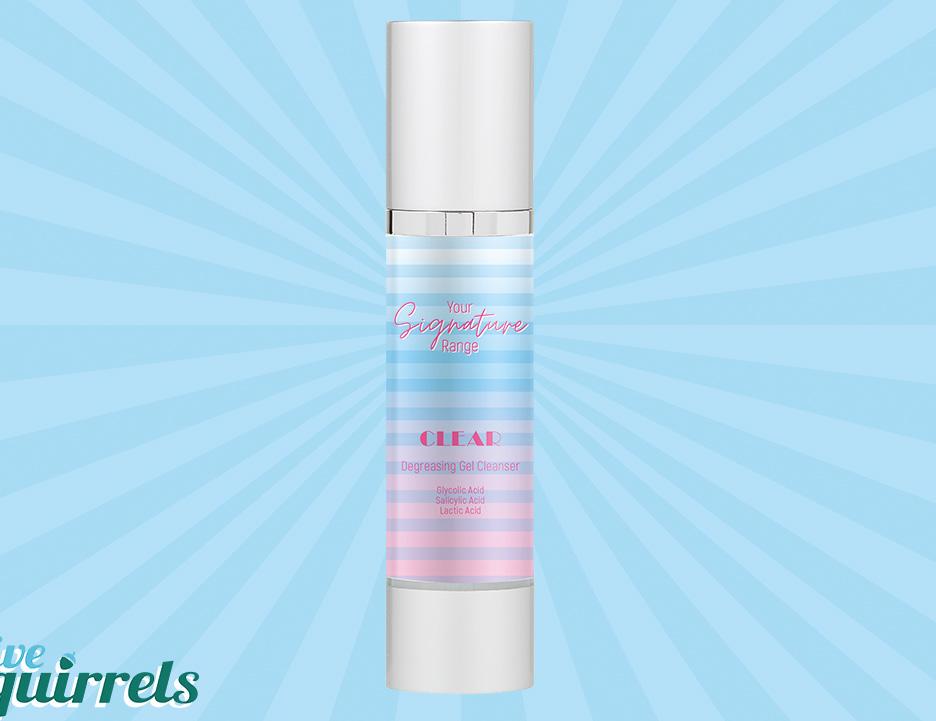
Gary Conroy, co-founder of 5 Squirrels, said, “Over the past year our loyal clients have challenged us to formulate a high strength product for oily skin. Yet again, we have risen to the challenge, Clear has been tested in many clinics, producing fantastic results. Many of these clinics are now on a waiting list to purchase this product so we’re delighted to be bringing it to the market.”
Dr Askari Townshend
creates new practice management software

International trainer and aesthetic practitioner Dr Askari Townshend has launched a new practice management software called Collums. The cloud-based software partnered with Square payments, a software to accept contactless and online payments quickly. Card details are saved at the time of booking to protect from no-shows and enable patients to pay without having their card present with them. The software also has electronic notes and consent forms, as well as online booking available. Dr Townshend commented, “I’ve designed Collums with a focus on simplicity – user journeys should be quick and intuitive whilst reducing the cost and time of training and user errors. It means that practitioners can get back to doing what they do best – looking after their patients.”
Safety
ACE Group World releases Official Emergency Kit
The Aesthetics Complications Expert (ACE) Group World has produced an Official Emergency Kit for aesthetic complications. The group explains that the kit contains everything required in the event of a dermal filler complication which needs immediate management, along with guidelines and recommendations for how to use it.
Inside, the kit has prescription items, such as adrenaline and hyaluronidase, but does not include items that should be prescribed later, such as antibiotics. The products are presented in a hard plastic case and are safely stored in laser-cut foam, explains the ACE Group World.
Dr Martyn King, medical director of the ACE Group World, said, “The ACE Group World appreciates the stress and anxieties that practitioners experience when an urgent complication occurs, and having the reassurance that they have the right tools at hand to manage these should help to reduce some of these anxieties. It is essential to have appropriate medicines and consumables at hand to deal with an urgent and immediate complication and to demonstrate ongoing CPD in complications management.”
The Official Emergency Kit is exclusively available via Cosmedic Pharmacy and can be obtained by prescribing practitioners.
Skincare
@aestheticsgroup @aestheticsjournaluk Aesthetics aestheticsjournal.com Reproduced from Aesthetics | Volume 8/Issue 12 - November 2021
Teoxane unveiled as Headline Sponsor at ACE
Aesthetic manufacturer Teoxane UK will be the Headline Sponsor at the Aesthetics Conference & Exhibition (ACE) in March.
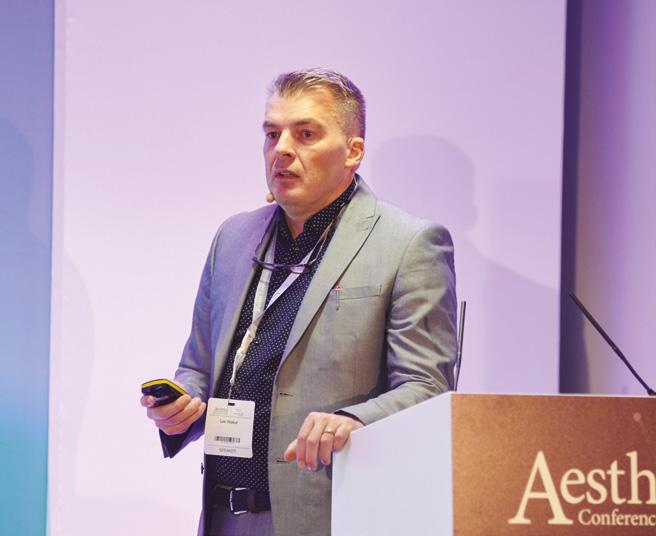
The company will host two full days of free talks, reinforcing the company’s dedication to providing exceptional world-class clinical education to aesthetic practitioners, Teoxane explains. Speakers confirmed are aesthetic practitioners Dr Lee Walker, Dr Raul Cetto and Dr Kam Lally, aesthetic surgeon Mr Benji Dhillon and consultant aesthetic oculoplastic surgeon Mrs Sabrina Shah-Desai. Jordan Sheals, deputy country manager, commented, “The entire Teoxane team are excited to return to ACE as Headline Sponsor in 2022, and see practitioners across the UK gather together to further their knowledge – after a two-year hiatus, the buzz of this live, educational exhibition cannot be beaten! During our time at ACE, Teoxane will host educational symposiums in the auditorium space, whereby we will be discussing the fundamentals of assessment, anatomy, technique and product selection with the support of five of our International Teoxane Faculty.” ACE will be taking place at the Business Design Centre in London on March 11-12, 2022. The Aesthetics Awards will follow the second evening of the event on March 12 and entry is open until November 12 this year.
Skin
SkinCeuticals releases new anti-scarring product
Professional skincare and antioxidant company SkinCeuticals has added the Advanced Scar Control to its portfolio.

According to the company, the product prevents new scar formation and improves the visible appearance of recent scars. The product aims to protect the skin with a high concentration of silicone gels which play a role in wound healing. The Advanced Scar Control also contains soline which improves barrier function, aiclicium which provides a matte texture, and allantoin which protects the skin, explains SkinCeuticals.
SkinCeuticals clinical research featuring 30 participants with new and recent scars, showed that when used for 12 consecutive weeks, Advanced Scar Control improves the scar’s appearance by up to 29%, reduces visible redness by up to 89%, softens and smooths scars by 23% and reduces the intensity of discolouration by 33%.
Maïk Lepatey, brand business director, noted, “We are very happy to be introducing the Advanced Scar Control to our range. From a psychological point of view, scars can be very debilitating, and SkinCeuticals is thrilled to have brought our wealth of skincare knowledge, backed by outstanding clinical research to contend with this skincare issue.”
BACN UPDATES
A round-up of the latest news and events from the British Association of Cosmetic Nurses

CCR
What an amazing treat it was to see so many members at CCR last month! It was great to catch up with longstanding members and put faces to the many new names that have joined the BACN over the last two years. Thanks to everyone that came over to the BACN Networking Hub and said hello – it was really appreciated.
OCTOBER ROUND-UP
PCA Skin delivered some fantastic events last month through the BACN InFocus programme. Nurse prescriber Susan Young discussed how members could enhance their patients’ results by combining injectable treatments with topical neuropeptides and demonstrated her trusted methods to create this.
The webinar recording can be accessed via the BACN resources section.
NOVEMBER EVENTS
The BACN is proud to be working with Merz Aesthetics throughout November! A full agenda can be found on the BACN events page, where you can now book all of the events taking place throughout the month.
• In Conversation with… via Instagram Live – 11th November
• Networking session and social via Zoom –23rd November
• InFocus Webinar via Zoom – 25th November
REGIONAL LEADERS
The BACN got together its wide network of regional leaders for a formal induction and a welcome to many new leaders along with some familiar faces who have remained. These leaders serve as ambassadors for the BACN within their region and are crucial to the BACN mission to prevent nurses from being isolated no matter where they are. The leaders will be contacting all members in their areas to offer local networking sessions and will be on hand for any advice or support that members may need on a regional capacity.
The BACN website also has a list of its regional leader structure and where each leader is based.
This column is written and supported by the BACN
ACE 2022
@aestheticsgroup @aestheticsjournaluk Aesthetics aestheticsjournal.com Reproduced from Aesthetics | Volume 8/Issue 12 - November 2021
Business GetHarley introduces new support programme



Skincare platform GetHarley has launched an In-Clinic Business Support Programme. The programme aims to support new clinics joining the aesthetic business to help with its new partnership and start selling from the beginning. A trained GetHarley business consultant will visit the clinic to help practitioners integrate skincare sales into their clinic. The consultant will advise practitioners before and after appointments on how to educate patients on the importance of skincare, and how to bring up skincare strategically. The consultant will also help practitioners upload skincare plans for each patient. The programme lasts for half a day while the clinic operates normally.
Charmaine Chow, CEO and founder of GetHarley, said, “GetHarley is about empowering practitioners to run their business efficiently. This programme is another initiative to help practitioners maximise income through repeat skincare sales while freeing up their time.”
Skin iS Clinical unveils at-home peel system

Skincare brand iS Clinical has launched a new active peel system to its portfolio. The two-step home-use peel system is designed to resurface the skin while providing hydration, and antioxidant protection. The first step is designed to provide exfoliation, featuring a combination of powerful but gentle botanical acids combined with botanical extracts. The second step provides hydration and rejuvenation, featuring botanical extremozyme technology and copper tripeptide-1 combined with active botanicals. Alana Marie Chalmers, company director of iS Clinical distributor Harpar Grace, said, “The new Peel System is an exciting launch for us. It offers a safe home-use exfoliation system that extends from the iS Clinical Active family.”
Holiday season
Medik8 launches festive gift sets
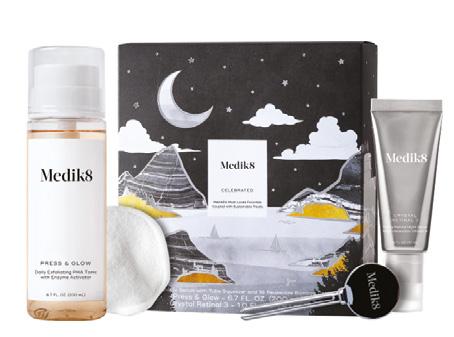
Skincare company Medik8 has released five festive gift sets for the holiday season. The limited-edition gift sets include a variety of skincare products in recyclable paper-based packaging. The Celebrated set includes products to enhance your patients evening skincare routine, featuring Press & Glow, an exfoliating toner; and a vitamin A Crystal Retinal 3. The Reflection set aims for a brighter, and decongested complexion with an exfoliating cleanser, a full-size serum, and a full-size Sleep Glycolic peel. The Nurture set contains a full-size Illuminating Eye Balm and a full-size Mutiny to nourish lips. The Escape set contains miniature products which are travel-friendly and includes a combination of cleansers. The r-Retinoate Luxe Collection comprises of a washbag, as well as products to reduce the appearance of fine lines and wrinkles.
Getting The Best Headshot
Getting polished, professional shots that highlight your personality isn’t always easy, so ensure that you:

1. Find the right photographer Choose someone that is experienced at taking headshots and has a style that you like. You need to find someone that will make you feel relaxed and be able to direct you into flattering poses.
2. Invest in yourself Preparations ahead of a shoot, the talent and experience during the session and the post-production work make photography expensive. However, if you want to look the best you can as the face of your business, it is a worthwhile expense.
3. Plan out the session Take your time to brief the photographer fully and have the session planned out, from locations to outfits – being prepared will help you relax on the day. Share pictures that you like with your photographer, as well as ones you’ve had taken before. This helps us understand your favourite angles.
4. Organise a pamper morning Booking to have your hair and makeup done on the morning of the shoot will make you feel more confident as well as looking the best version of you. Put some music on, relax and let someone else get you photo ready!
5. Choose an outfit that you love Pick something that not only looks stylish and is on brand, but that you also feel comfortable in. Choose several to have a selection to wear for variety on the day.
This column is written and supported by Hannah McClune, owner of brand photography company Visible by Hannah www.visiblebyhannah.com
Photographer Hannah McClune’s monthly tips on how to strengthen your business through branding
@aestheticsgroup @aestheticsjournaluk Aesthetics aestheticsjournal.com Reproduced from Aesthetics | Volume 8/Issue 12 - November 2021
Aesthetics Awards entry extended to November 12
Entry for the Aesthetics Awards 2022 has been extended to November 12 for all categories. Taking place on the evening of March 12, 2022, at the Royal Lancaster Hotel in London, the Aesthetics Awards will be the perfect place to socialise and celebrate the wonderful achievements over the past year. Private label cosmeceutical supplier 5 Squirrels will be sponsoring the Award for Injectable Product of the Year, which will celebrate products that support a range of indications and can show evidence of good safety and efficacy.
To enter the Aesthetics Awards for free, head to www.aestheticsawards.com and press submit by November 12.
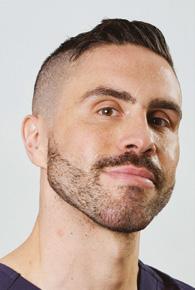

Education
New members of the Allergan Faculty revealed
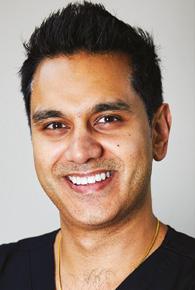
Oral and maxillofacial surgery registrar Mr James Olding has been appointed as an Allergan Faculty member, whilst aesthetic practitioner Dr Manav Bawa has joined the Allergan Medical Institute Faculty UK. In their new roles, both members will train fellow healthcare professionals in injectables. They will also work closely on project development and delivery whilst educating and training registered doctors, nurses and dentists. Mr Olding said, “I am excited to expand my role with Allergan. I am looking forward to working on projects and resources that will cut across the key professions, with a focus on engaging with dental surgeons in innovative ways.” Dr Bawa commented, “I am extremely delighted to have been selected as a member of the Allergan Medical Institute UK, and I am looking forward to bringing my ideas and experience to the role.”
Statistics
New report details an increase in skincare popularity
Aesthetic and wellness clinic Dr Yusra Clinic has released a report on UK consumers and their skin habits after the pandemic.
The Beautified Beauty: The Skin Report has analysed data from Google search, Google trends, news stories, professional industry bodies, consumer surveys and social media trends. The report focused on the growing popularity of skincare in the UK, showing a 309% increase in online searches for ‘skincare’, a 50% increase in searches for ‘tweakments’ and ‘aesthetic treatments’, and an 89% increase in searches for ‘best skincare’.
Aesthetic practitioner Dr Yusra Al-Mukhtar commented, “The findings of the report show that 2021 really has been ‘The Year of Skin,’ with an enormous increase in people searching for and engaging with skin influencers, skincare brands, ingredients, products and new technologies. With the stresses imposed by months of lockdown, it is no surprise that more people have been prompted to look to restore their glow.”
YOUR NEXT EVENT
The Aesthetics Conference & Exhibition, the UK’s leading event in non-surgical medical aesthetics, returns to unite the specialty for two days of discovery, business and networking. On March 11-12, 2022, around 2,000 aesthetic professionals will gather at the Business Design Centre, London, to learn from leading experts about injectables, clinical practice, laser, skin rejuvenation, peels, complications, energy devices, business support and more. All sessions are CPD approved and free to attend. This year we are honoured to announce Teoxane as our Headline Sponsor, along with Galderma, Enhance Insurance, AestheticSource, Church Pharmacy, Endosphéres Therapy and many more associated partners. With the support of the industry’s leading brands, as well as sessions led by respected practitioners, this is the best place to learn about the latest technologies and clinical advancements in medical aesthetics, bringing world-class education right to your doorstep.
REGISTER NOW USING THE QR CODE TO SECURE YOUR PASS.
Enjoy a night of celebrations
On the evening of March 12, following the second day of ACE 2022, the prestigious Aesthetics Awards will be held at the dazzling Royal Lancaster Hotel, London. Known as the ‘Oscars of Aesthetics’ the incredible achievements of our fantastic specialty will be commemorated with an evening of glitz and glamour, including a three course meal, entertainment, and a celebrity host. Supported by our sponsors, SkinCeuticals, SpringPharm, DigitRx by Church Pharmacy, 5 Squirrels, Beyond Beauty, CCR and ACE, this glamorous event will be attended by anyone who’s anyone in the aesthetics specialty and will be a night you simply cannot miss. Plus, as our winners are revealed, it will give you the chance to hear first-hand who the new leaders in the industry are, those who represent the highest standards in clinical excellence, product innovation and practice achievement. The entry date has been extended to November 12, and tickets are on sale now at our exclusive Early Bird price. Book yours to celebrate the achievements of our industry alongside colleagues and peers, as we finally come together for an evening like no other. Scan the QR code below. Early Bird available until December 31.
SCAN THE QR CODE TO BOOK YOUR AWARDS TICKETS.
ACE 2022 –
Awards
@aestheticsgroup @aestheticsjournaluk Aesthetics aestheticsjournal.com Reproduced from Aesthetics | Volume 8/Issue 12 - November 2021
CUCF 2021, Windsor
On September 27, the Cutera University Clinical Forum (CUCF) took place at the Castle Hotel in Windsor. The event opened with an introduction from Cutera’s UK and Ireland country manager Tim Taylor. Aesthetic practitioner Dr Tatiana Lapa began with a discussion on to skin rejuvenation which included a live demonstration of the SecretPro device. A talk on capitalising patient demand with radiofrequency microneedling by aesthetic practitioner Dr David Eccleston took place next, followed by aesthetic practitioner Dr Julia Sevi who discussed energybased skincare combinations. The afternoon began with Dr Tapan Patel speaking on filling the gap with injectables. Business coach Alan Adams shared his commercial tips for building a million-pound clinic, whilst aesthetic practitioner Dr Nestor Demosthenous spoke on full body transformation using the truSculpt iD. The final talk was by aesthetic practitioner Dr Anna Hemming who outlined her considerations when introducing aesthetic devices into your clinic.

On the Scene
Cynosure partners with the Katie Piper Foundation, London
Aesthetic device manufacturer Cynosure has partnered with the Katie Piper Foundation to help the rehabilitation journey of burns and scars survivors. The partnership was announced at the recently opened Cynosure Experience Centre in Chiswick on October 5. The Katie Piper Foundation is run by author and presenter Katie Piper who set up the charity to help fellow survivors. Cynosure Global CEO Todd Tillemans opened the event, providing an overview of the company, and explaining that the company is on a journey to grow, develop and innovate. Tillemans said, “The Katie Piper Foundation is a brilliant cause that helps those with scars and burns to live a fulfilled life. Scars and burns can cause a lot of emotional trauma, and we are constantly looking for ways to help combat these effects, so we partnered to give technology, support and training so that victims can find relief and joy.” The event closed with a ribbon cutting ceremony to officially launch the new partnership.
On the Scene
The AlumierMD double product launch in Shoreditch, London
On October 6, skincare brand AlumierMD invited industry experts to its Shoreditch headquarters for a double product launch. Guests enjoyed microbiome friendly refreshments and bespoke treatments using the new products, with aesthetic practitioner Mr Benji Dhillon on hand to answer any questions. HydraRich is a postbiotic moisturiser designed to help nurture the skin’s microbiome and help defend the skin against the effects of UV rays and free radicals incorporating hyaluronic acid, squalene, and poly glutamic acid. Second was the Let It Glow holiday kit containing the Enzymatic Peel, with lactic acid and papaya extract, and the oil free Aqua Infusion Mask with hyaluronic acid. The company explains that the two products combined target the three layers of the skin with exfoliation and hydration, resulting in healthy skin throughout winter.
News in Brief
Lynton teams up with new distributor
Laser and IPL manufacturer Lynton has teamed up with New Zealand based company House of Camille to distribute its devices. House of Camille supply professional skincare products, such as Medik8 and Katherine Daniels, in New Zealand. Steven Newell, export manager for Lynton, said, “I’m extremely proud to be leading the global expansion for the UK’s number one laser and IPL manufacturer. House of Camille is a great fit as a distributor as they share similar values for clinical excellence, safety and quality.”


Cutera appoints two new members
Aesthetic technology manufacturer Cutera has appointed two members to its team. Samantha Strydom has joined as a practice development manager with more than 10 years’ experience, whilst Mat Lane has been appointed territory manager with experience in business development. Regional sales manager in Europe, Tim Taylor, commented, “I am delighted to be working with two professionals who have such a firm grasp of the aesthetics industry. I am confident that Sam and Mat’s backgrounds will bring dedication and passion to continue to expand our well-established brand.”
CCR releases first industry trend report CCR unveiled its first ever trend report on the aesthetic specialty at an exclusive press event on October 14 focusing on future trends and innovations in aesthetics. Sponsored by medical aesthetics company Neauvia, the Surgical & Non-Surgical Trend Report explored the next generation of injectables, skincare, radiofrequency microneedling, energy delivery systems for fat loss, non-surgical solutions to enhancing the buttock as well as surgical trends including periocular surgery and mental health. You can view the full report on the CCR website now.
4T Medical certified as carbon neutral for third year
Aesthetic product supplier 4T Medical has been certified as a Carbon Neutral Plus organisation for the third consecutive year. Certification follows an analysis of the company’s carbon footprint by independent body, Carbon Footprint Ltd, explains 4T Medical. Through the purchase of carbon offsets, the company will offset 153 tonnes of CO2 produced by the company’s dealings, as well as an additional 15 tonnes. This year, the contribution will help fund the REDD project aiming to reduce deforestation in the Amazonian rainforest, as well as planting trees in the UK and Kenya.
On the Scene
@aestheticsgroup @aestheticsjournaluk Aesthetics aestheticsjournal.com Reproduced from Aesthetics | Volume 8/Issue 12 - November 2021




A NATURAL LOOK IS AN EXACT SCIENCE
is designed to add volume
the lip and
your
Merz
supplier. Adverse events should be reported. Reporting forms and information for United Kingdom can be found at www.mhra.gov.uk/yellowcard. Reporting forms and information for Republic of Ireland can be found at https://www.hpra.ie/homepage/about-us/report-an-issue/mdiur. Adverse events should also be reported to Merz Pharma UK Ltd at the address above or by email to UKdrugsafety@merz.com or on +44 (0) 333 200 4143. References 1. Tran C. et al., In vivo bio-integration of three hyaluronic acid fillers in human skin: a histological study – Dermatology, 2014, 228:47-54. 2. Micheels P et al; Two Crosslinking Technologies for Superficial Reticular Dermis Injection: A Comparative Ultrasound and Histologic study; J Clin Aestheti Dermatol 2017; 10(1) 29-36. 3. Sundaram & Fagien 2015 Cohesive Polydensified Matirs Hyaluronic Acid for Fine Lines. Plast Recon Surg. 136:149S, 2015. M-BEL-UKI-1251 Date of Preparation October 2021 ® • Natural Movement 3 • Your Own Artistry • Natural Integration 1,2 Merz Pharma UK Ltd, Ground Floor Suite B, Breakspear Park, Breakspear Way, Hemel Hempstead, Hertfordshire HP2 4TZ MERZ AESTHETICS is a registered trademark of Merz Pharma GmbH & Co. KGaA. @merzaesthetics.uki merz-aesthetics.co.uk Merz Aesthetics UK & Ireland
Take artistry to the next level with BELOTERO® Lips Shape and Contour, the first combination approach to lip enhancement.
BELOTERO® Lips Shape
to the body of
BELOTERO® Lips Contour definition in the vermilion border. AVAILABLE in 0.6ml from
chosen
Aesthetics
Reduce inflammation and redness Speed post-procedure recovery











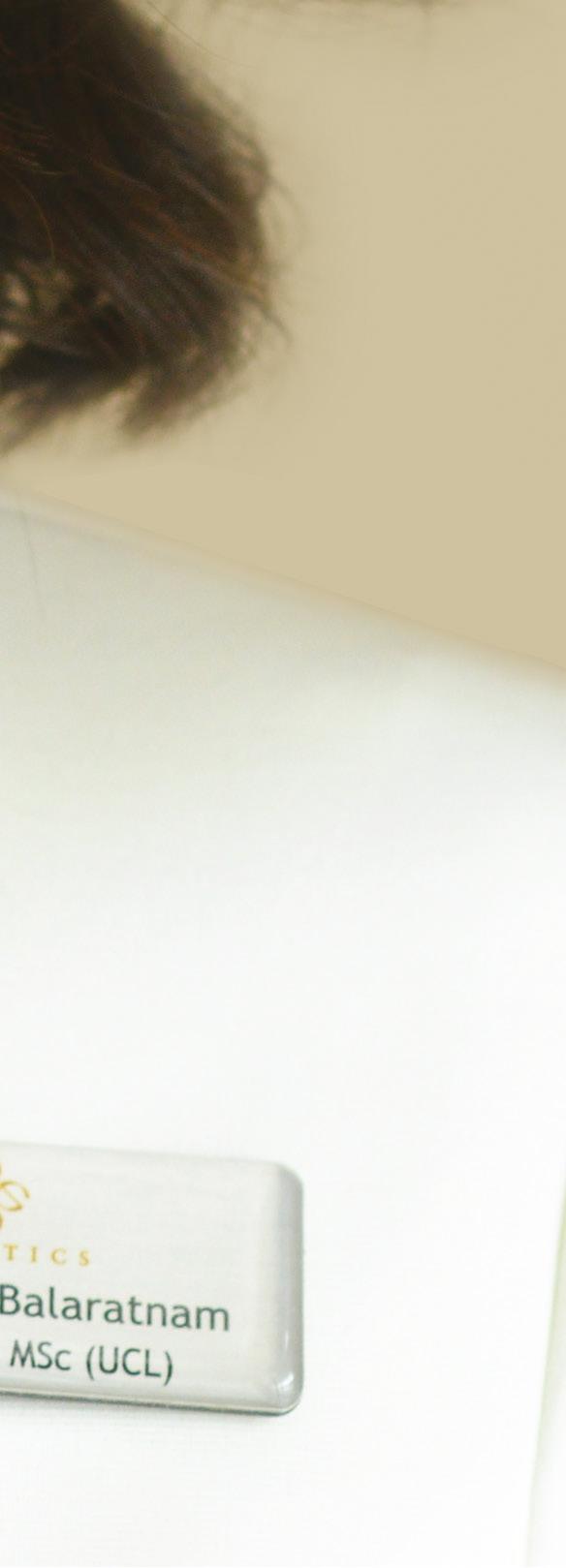



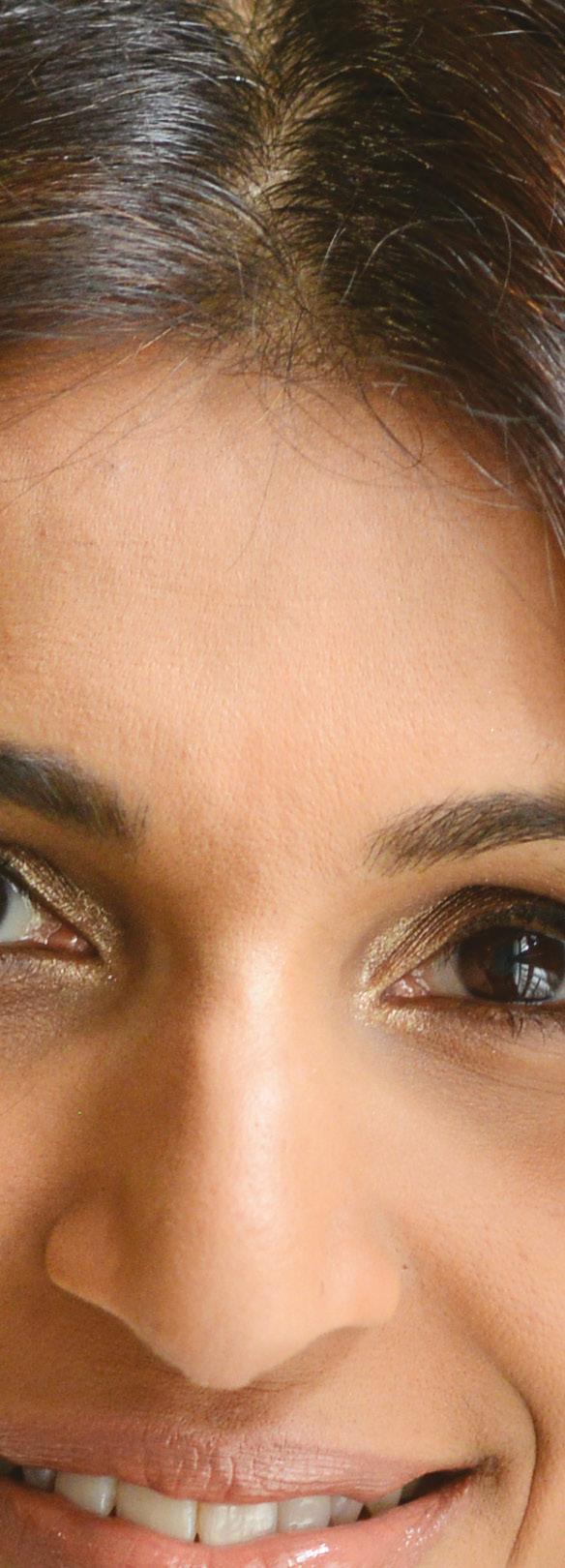

Increase patient comfort levels

Reduce patient downtime



Enhance results




“Being able to treat inflammatory skin conditions, revitalise tired and ageing skin, as well as to deliver results for pain management and wound healing has broadened both my in-clinic and at-home treatment offering. Most importantly, my Celluma devices have taken our patients’ results and satisfaction to the next level.”

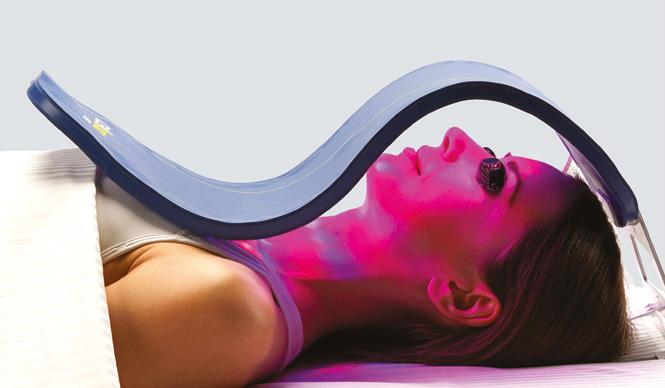

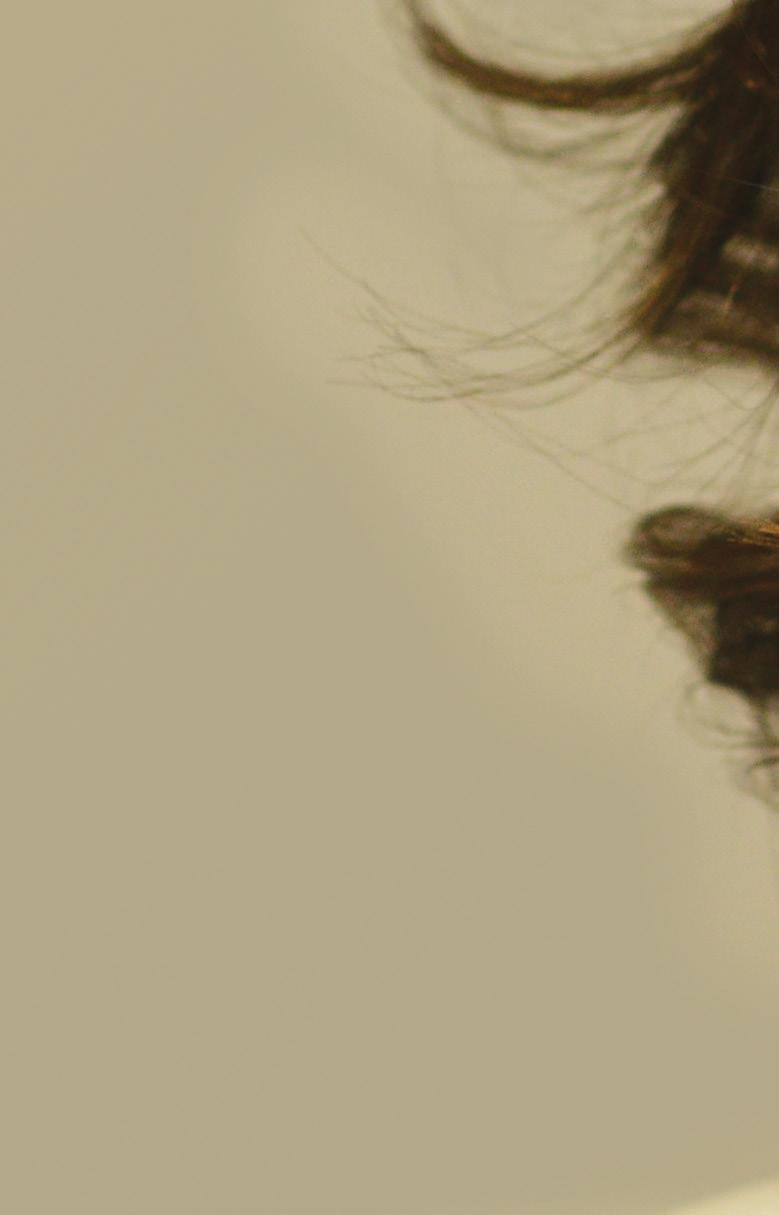

CERTIFIED LIGHT THERAPY TRAINING BY WYNYARD AESTHETICS ACADEMY 2021 Classes: 29th November, 6th December Contact: helen@WynyardAestheticsAcademy.com
Miss Sherina Balaratnam MBBS, MRCS, MSc (UCL) Surgeon and Cosmetic Doctor Medical Director, S-Thetics Clinic Beaconsfield, Buckinghamshire (UK)
+44 (0) 203 981 3993 www.international.celluma.com infoUK@biophotas.com
Reporting Botulinum Toxin Complications
Aesthetics looks at a recent study which indicates botulinum toxin complications are being underreported
Botulinum toxin is the bread and butter of aesthetics and has always been considered a generally safe procedure. However, new research has revealed that one in six patients suffer complications after having botulinum toxin injections.1 The research was undertaken by four doctors at the Royal Free and St Thomas’ hospitals in London; three were plastic surgeons and all were academic researchers. Dr David Zargaran, the lead author of the study, and his team found an overall complication rate of 16% when they analysed 30 studies involving 17,352 injections of botulinum toxin into the face. The most common complications involved localised skin reactions such as bruising (5%), headaches (3%) and facial paresis (2%) in which parts of the face such as the eyelid or eyebrow are paralysed.1 Problems with complication reporting have been highlighted previously, with a survey of 461 aesthetic practitioners conducted by insurance provider Hamilton Fraser Cosmetic Insurance revealing more than half of aesthetic practitioners did not report their complications in 2019.2
Dr Zargaran’s research team found that only 188 adverse reactions were reported to the Medicines and Healthcare products Regulatory Agency (MHRA) over the past 29 years, equating to less than 10 adverse events a year across the UK. This suggests that complications are being heavily underreported to the regulatory agency, with the study calling the current data a ‘significant underestimate’.1
We spoke to aesthetic nurse prescriber and trustee at the Joint Council for Cosmetic Practitioners (JCCP), Andrew Rankin, and consultant plastic, reconstructive and aesthetic surgeon Mr Dalvi Humzah, to find out on why this might be the case.
Prescribing to non-medics
While the study indicates non-medic injectors as being the main cause for concern, Mr Humzah believes that the focus should instead be put on those who are prescribing the medicine to them. He says, “Botulinum toxin is a prescription-only medicine, so
non-medics can only get their hands on it if someone with a medical background is prescribing it for them. If you, as an a healthcare professional, are making the decision to do this, then you have to understand that all of the issues relating to that prescription come back to you, and it’s your responsibility to report the complications. In this instance, rather than a greater regulation for non-medics or on toxin itself, what we really need is a greater regulation on the relationship between prescribers and non-prescribers.”
Rankin agrees, noting, “Non-medically trained injectors aren’t regulated and have no obligation to report complications to anyone, such as the MHRA, the product manufacturer, or a regulatory body. What is worrying is that the person who prescribed them the botulinum toxin has an obligation to followup on the treatment and identify a problem and report it, and they obviously didn’t.
The law states that non-medics can inject prescription medicines under the supervision of a regulated professional and, until the law changes, what I would like to see wider adoption of the standards of oversight that the public and professional regulators expect, and greater enforcement where it is lacking.”
Know your anatomy
Rankin notes that many of the side effects reported in the study can probably be put down to practitioner error, rather than a problem with the substance itself assuming appropriately regulated products are being used. He adds, “Given the lack of reporting, it’s very difficult to understand exactly what the incidence of complications are, but I’m sure they vary from one practitioner to another.”
Mr Humzah emphasises the importance of all practitioners knowing facial anatomy in order to minimise the risk of complications occurring. “A lot of it is knowing where you’re injecting – the standard three-point injection model doesn’t follow the anatomy carefully,” he says, adding, “you have to learn how to tailor your injections, and to do that you really have to understand the face or area of injection. Hands-on training courses can be really useful
for teaching you how deep you should be injecting, and letting you practice this.”
The importance of reporting
Mr Humzah explains that it’s extremely important for all practitioners to report botulinum toxin complications, or all aesthetic complications for that matter, to the MHRA using the yellow card reporting scheme, the medical device manufacturer, their regulatory body, or to the JCCP if they are a member.
“The MHRA needs to be able to track all complications/side effects, so that they can see if there are any that might be becoming more common than expected, and they can look into why this might be,” he says.
Rankin adds that this is important for ensuring public safety, noting, “It’s only by the MHRA understanding what is going on with any particular medicine or medical device that it can intervene. This may mean taking products off the market, providing more regulation for its use, or changing its instructions, but if people don’t report complications the MHRA may only have part of the picture, hampering effective action and increasing public risk.”
Rankin also emphasises that the lack of reporting makes it difficult to push for regulatory change. He comments, “Because complications in aesthetics are heavily underreported, as evidenced by this study, we currently have very little evidence to support any question about a risk to public safety. Any authority will request evidence from us to make changes to the law and to the regulation of our industry. We need substantive rather than anecdotal evidence and if practitioners don’t report complications, we have nothing meaningful to present.”
Mr Humzah believes that training providers have a responsibility to ensure practitioners are reminded of the importance of reporting complications to the MHRA, product manufacturers, or their regulatory bodies. He concludes, “I’ve noticed that a lot of the time, when complications are discussed, the only thing that’s spoken about is how to rectify it or how to prevent it. While this is of course extremely important, providers also need to press upon delegates that they should be notifying the relevant people should any complications arise. All too often this gets forgotten about, and I think this needs to be specifically mentioned every single time.”
REFERENCES
1. D Zargaran et al., Complications of facial cosmetic botulinum toxin A injection: Analysis of the UK Medicines & Healthcare Products Regulatory Agency registry and literature review, Journal of Plastic Reconstructive & Aesthetic Surgery, 2021
2. Holly Carver, Survey Highlights Issues with Reporting of Complications, 2020, <https://aestheticsjournal.com/news/ survey-highlights-issues-with-reporting-of-complications>
@aestheticsgroup @aestheticsjournaluk Aesthetics aestheticsjournal.com Reproduced from Aesthetics | Volume 8/Issue 12 - November 2021
As a world-renowned plastic surgeon and champion of the avant-garde, who better to lead the launch of the industrydisrupting dermal filler than Dr Arthur Swift?
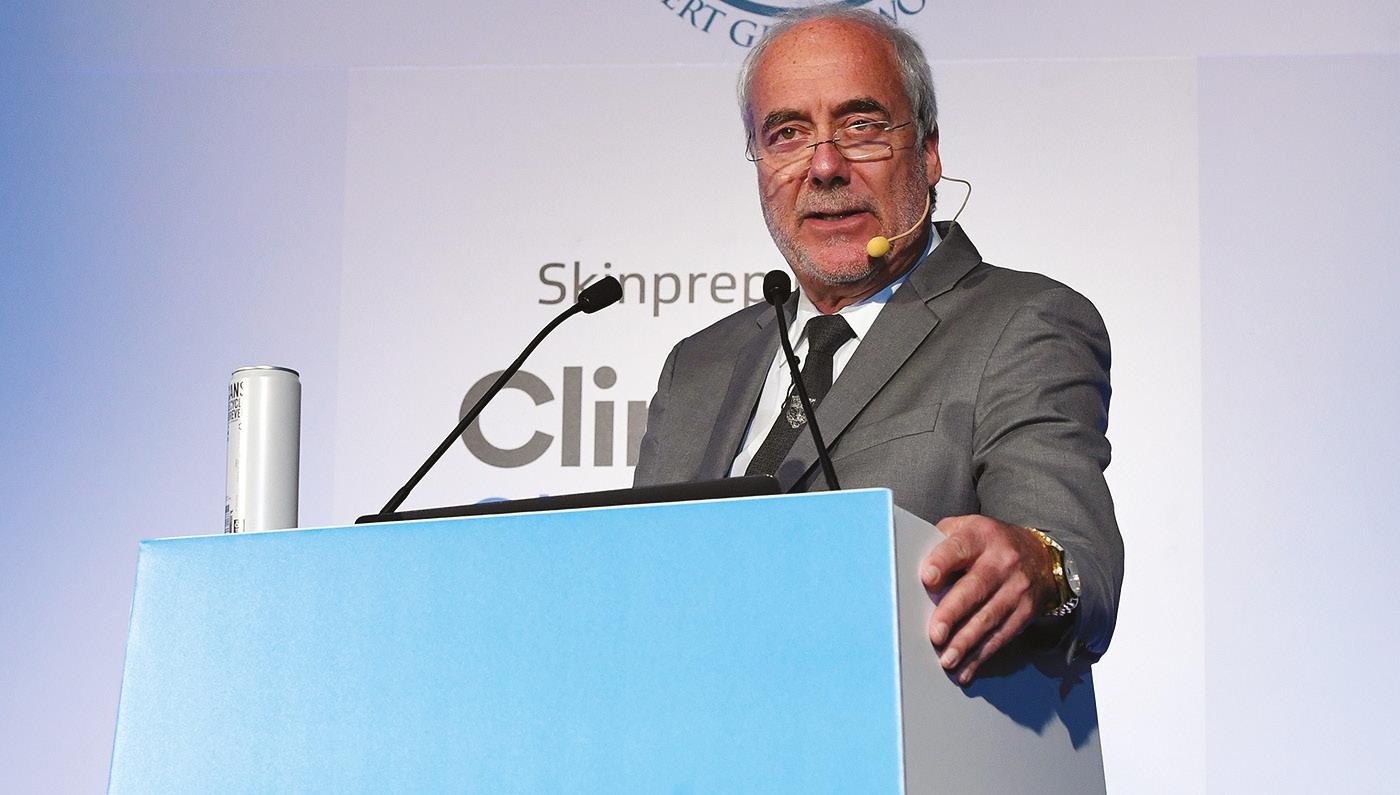

REVANESSE® was the word on everyone’s lips as the aesthetics heavyweight took to the CCR stage in London on October 14 and 15 as the brand’s keynote speaker.
Presenting a symposium on OMGEE Curve: Mastering of the Midface with REVANESSE®, Swift unveiled his world-renowned injection techniques to an attentive crowd. He explained how he uses SHAPETM deep in a periosteal plane to project and lift, followed by CONTOURTM deftly layered with a cannula to create the soft, S shape curves he’s famous for.
Dr Swift’s iconic facial assessment techniques came to the fore in a second symposium on Lips & Tweaks, sharing his tips to analyse the face and achieve facial harmony. Using
ULTRATM in the lips, Swift explained how he uses the 1.2ml syringe to tweak extra areas on the face, allowing him to achieve natural looking, beautiful results.
An intimate Q&A session followed with accompanying clips, uncovering insights into the life of the leading plastic surgeon, while a lucky 10 had the chance to pick Dr Swift’s brains over the course of an exclusive lunch.
One of only five companies to receive US FDA approval, REVANESSE® has already become a big player in the US and Canada, where it has revolutionised the aesthetics market with its unique formula, commitment to high-quality ingredients, and innovative manufacturing technique.
The state-of-the-art dermal filler has spherical particles which give it its key selling points of safety and performance. The gels smooth integration can be linked to their particle shape and low levels of modification, which can reduce immune responses and inflammation.1,2 The spherical shape is
designed to be accepted by the body and provide smooth, beautiful results that perform throughout the lifecycle of the skin.
Smooth Spheres, Less Inflammation, More Volume2,3,4
The REVANESSE® range includes four products with different sphere sizes to address multiple indications.
1. REVANESSE® KISSTM
25mg/ml cross-linked HA with a low lift capacity and small particle size to enhance the vermilion lip and submucosal tissue. To be injected into the superficial to the mid dermis.
Key indications: Lips and perioral lines.
2. REVANESSE® ULTRATM
25mg/ml cross-linked HA with a moderate lift capacity to fill and lift in the mid-to-deep dermis.
Key indications: Lips, nasolabial folds, marionette and temples.
3. REVANESSE® CONTOURTM
25mg/ml cross-linked HA with a moderate/ high lift capacity to lift and volumise in the deep dermis-to-subcutaneous layers.
Key indications: Cheeks, chin, jawline and temples.
4. REVANESSE® SHAPETM
25mg/ml cross-linked HA with a very high lift capacity to volumise and give projection in the supra-periosteum. Key indications: Cheeks, chin and jawline.
REVANESSE® has several training dates scheduled in central London, Tamworth, Cambridge, Harrogate and Glasgow. Training sessions will be conducted by Sharon Bennett, Lisa Feliz, Frances Turner Traill, Lou Sommereux, and Sharon King.
REFERENCES
1. Edsman K, Nord LI, Ohrlund A, et al. Gel properties of hyaluronic acid dermal fillers. Dermatol Surg. 2012;38:1170–1179.
2. Laeschke K. Biocompatibility of microparticles into soft tissue fillers. Semin Cutan Med Surg. 2004 Dec;23(4):214-7. doi: 10.1016/j.sder.2004.09.005.
3. FDA Premarket Approval (PMA) Database (P040024/S072). Approval OrderStatement for Restylane® Silk™, 2014. Restylane® is a registered trademark of Nestlé Skin Health SA. 4. Revanesse 1.2ml EU IFU.

Have you tried REVANESSE™ in clinic yet? Try one of each product Kiss, Ultra, Contour & Shape for a special CCR offer price of £532. At just £66 per 1.2ml syringe, this equates to £55/1ml… that’s more fill for your ML! Redeem with code: REVCCR21 It’s simple, type the code into the search bar and your basket will load with the special offer! Offer valid for a limited time only at Healthxchange This advertorial was written and supplied by For more information, please contact info@prollenium.co.uk @prolleniumuk Prollenium UK Shaking the Industry with REVANESSE® REVANESSE® causes a stir within the aesthetics industry following its official launch at CCR Aesthetics | November 2021 18 @aestheticsgroup @aestheticsjournaluk Aesthetics aestheticsjournal.com Advertorial Prollenium
The long-awaited return of the biggest UK aesthetics event finally took place on October 14 and 15 at the ExCeL London for CCR. Over the two days, 120 speakers, 150 exhibitors and 1,000’s of delegates gathered to learn, showcase innovations, and speak about the surgical and non-surgical world of aesthetics. With live demonstrations, symposiums, new product launches, and plenty of learning and networking opportunities, CCR was one of the biggest and jam-packed events to date. Event manager for CCR and Aesthetics Courtney Baldwin commented, “CCR was an absolute hit! It was an honour to be able to reunite an industry that has had such a turbulent 18 months. We had CPD certified content, expert speakers, brand new start-ups as well as many products, brands, devices and companies showcasing their portfolios at the show. Thank you to everyone who came along to CCR, and we hope you loved the show as much as we did. We can’t wait to welcome you back to the Aesthetics Conference and Exhibition (ACE) in March 2022!”
such a monumental milestone for the group – the 25th anniversary of Restylane. We can’t wait to come back to CCR next year as it’s another opportunity to come together as one community, share ideas and knowledge and advance our practice even further.” The launch of the poly-L-lactic acid filler Sculptra also took place, which was hosted by Dr Munir Somji.

The Networking Hub, which was also sponsored by Galderma, was buzzing with industry professionals, delegates and exhibitors reuniting over drinks, sponsored by Med-FX. If the drinks weren’t for you, then Galderma had customisable coffees at their stand which allowed delegates to have their picture taken and transferred onto their coffee!
Show bags were given out upon arrival sponsored by AestheticSource with a Prep and Procedure cleanser by Clinisept+ Skin inside, as well as red visitor lanyards which were provided by Neauvia, whilst RELIFE sponsored the registration and visitor badges for the event.

This year, the VIP and Press Lounge was the go-to hub to learn about the upcoming trends in aesthetics. Sponsored by Neauvia, the session detailed the first ever CCR Trend Report which was hosted by CCR’s Press Ambassador and Tatler’s health and beauty editor-at-large Francesca Ogiermann-White. The session discussed the latest trends in aesthetics, from incorporating skincare into treatment protocols to the psychological wellbeing of patients. You can read the full Trend Report on the CCR website now!

Highlights from CCR
There were numerous highlights across the two days at CCR. A huge thank you to the CCR Advisory Board for helping to assist with the show, participating as speakers, or supporting CCR to be the best one yet!
Headline sponsor Galderma celebrated 25 years of Restylane with its symposium led by Galderma key opinion leaders Miss Priyanka Chadha and Miss Lara Watson, who noted that, “It was a privilege to once again represent Galderma on stage, especially in celebration of

Symposiums

Complementing the scientific agenda curated by the advisory board, CCR played host to exclusive takeovers from the world’s biggest brands and their key opinion leaders.
World-renowned Canadian plastic surgeon Dr Arthur Swift was the face of the Prollenium Symposium on Mastering of the Midface with REVANESSE, and Lips and Tweaks. His packed-out talks were a firm highlight of the event and captivated a wide audience. Catching up with Dr Swift on the morning of day two, he said, “It was a great opening
2021:
Reunited! Celebrating our first in-person event since 2020, Aesthetics reflects on the biggest CCR to date! @aestheticsgroup @aestheticsjournaluk Aesthetics aestheticsjournal.com Reproduced from Aesthetics | Volume 8/Issue 12 - November 2021
CCR
Aesthetics
day! I opened the conference with the first talk with Prollenium on Lips and Tweaks and it kept getting better from then on. It was a really full day yesterday and I met a lot of colleagues, friends and different specialities and it’s been absolutely awesome.” Other symposiums included a sponsored RELIFE talk on Beauty Beyond Boundaries with Dr Vincent Wong, BTL Aesthetics discussed the Emsculpt NEO device, a SkinCeuticals presentation on whether your vitamin C is delivering potential with Dr Emma Craythorne, an AestheticSource symposium with Miss Rachna Murthy discussing the new Revox Line Relaxer and a Lumenis talk with Dr John Quinn, Dr Tapan Patel and Natali Kelly who discussed increasing patient intake and return on investment with devices. At midday, Allergan Lunchtime Takeovers on the Live Demo stage featured Mr Taimur Shoaib and Miss Murthy speaking about their experiences using Juvéderm.
Non-Surgical Arena
At the Non-Surgical Arena, there was journey of injectable techniques and innovation on the face and body from a world-class faculty, as well as a dive into injectable complications and how to manage them. Highlights in the Non-Surgical Arena included a profile correction masterclass with Professor Bob Khanna, non-surgical rhinoplasty with Mr Ash Labib, tear trough fillers with Dr Marwa Ali, non-surgical body sculpting with Dr Nestor Demosthenous, and facial structure assessment and treatment with Dr Raj Acquilla. Speaking about his time at CCR, Dr Demosthenous said, “This year’s CCR was fantastic for many reasons. It was one of the first times since March 2020 that the aesthetic community came together, learning, teaching and sharing so much knowledge, and stories gathered over the last 18 months. There was a buzz and energy at CCR over the two days which made for a very full 48 hours. Next year will no doubt be even better as the community grows, as does our hunger to be reunited once again!”
ISAPS UK & Surgical Arena
Catering to the surgical world, the Surgical Arena was a packed programme of content focused on cutting-edge, innovative surgical procedures tailored to the body, breast and eyes. The International Society of Aesthetic Plastic Surgery (ISAPS) Symposium took place on both mornings with a specific focus on the body, which delegates paid to attend. The symposium was led by Mr Naveen Cavale and Mr Mo Akhavani. Mr Pouria Moradi gave talks on extended corset abdominoplasty and discussed whether anatomical
implants are better for patients. Mr Akhavani detailed gynecomastia correction in weight loss patients and non-weight loss patients, and Mr Mark Soldin discussed optimising the thigh lift in a decade of weight loss patients.
Mr Cavale said, “It has been a pleasure to hold ISAPS at this year’s CCR. It was the perfect opportunity to discuss surgical innovations and techniques with fellow colleagues whilst enhancing education among delegates. CCR was a great opportunity to reunite both the surgical and non-surgical specialities together under one roof and open it up to registered healthcare professionals, whilst the relationship between ISAPS and CCR went from strength to strength. We hope that everyone who attended enhanced their learning over the two-day event and we can’t wait to be reunited next year!”
As well as the paid for content, we also had an exciting agenda for delegates to attend for free. A breast augmentation session on day one included talks from Mr Adrian Richards, Mr Garrick Georgeu and Mr Reza Nassab. Day two held a discussion on combining surgical and non-surgical approaches to eye rejuvenation with interesting and innovative talks from Miss Elizabeth Hawkes, Mrs Sabrina Shah-Desai, Mr Sotirios Foutsizoglou and Miss Murthy.
In Practice Theatre
At CCR, we cater to all your aesthetic needs, right down to your business. Our In Practice Theatre helped give you the best tips, advice and insights from experts on enhancing your business and ensuring it can be the best it can. From social media, marketing, and diversifying your patient base, to launching new devices, and the latest on tax and VAT, there was something for everyone to learn.

Sponsored by SkinCeuticals, we had some great discussions including Dr Tahera Bhojani-Lynch speaking on male patients in aesthetic practice, Dr Bhavjit Kaur on taking care of your mental health, Julia Kendrick on tips for entering award ceremonies, Dr MJ RowlandWarmann discussed managing patient expectations and increasing sales, Dr Anna Hemming on tips for opening a new clinic, and Dr Raul Cetto on before and after imagery, as well as panel discussions on the future of aesthetic complications, building your Instagram and becoming a company key opinion leader.
ACE Group World
For the first time at CCR, the Aesthetics Complication Expert (ACE) Group World conference took place with an informative agenda on
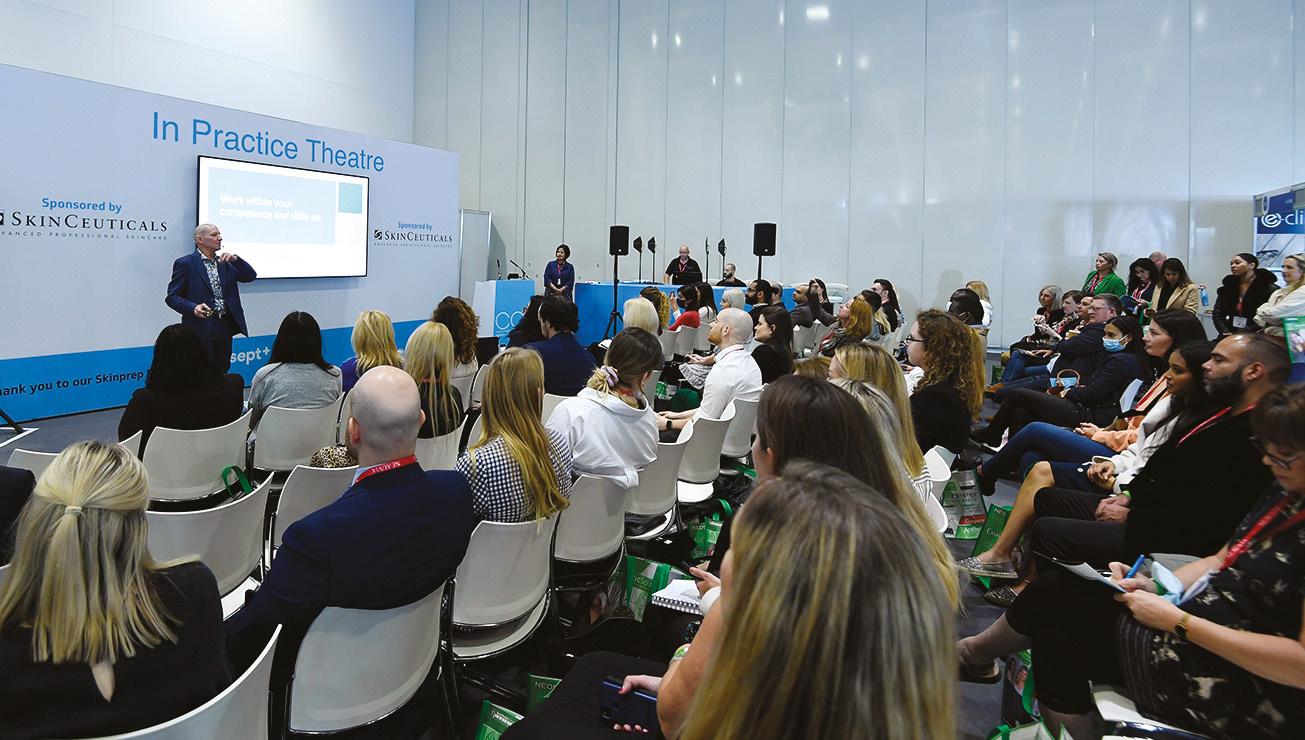
@aestheticsgroup @aestheticsjournaluk Aesthetics aestheticsjournal.com Reproduced from Aesthetics | Volume 8/Issue 12 - November 2021
aesthetic complications. Delegates paid to attend the conference which had a stellar line-up of experts which included Dr Xavier Goodarzian who spoke on chemical peel complications, Dr Martyn King who detailed the management of delayed onset nodules, Dr David Eccleston who highlighted botulinum toxin complications, Dr

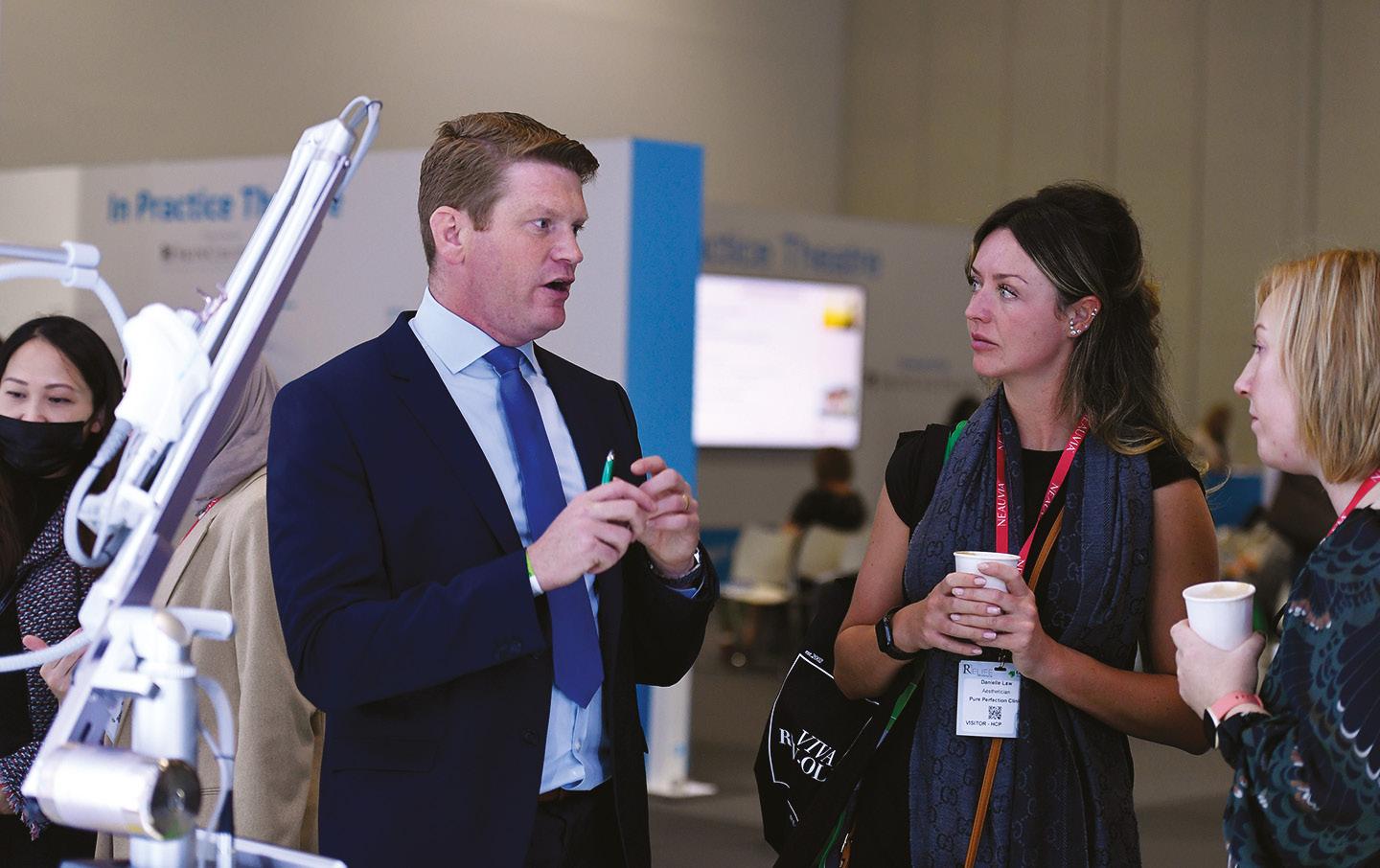
for the various sections of the face, from the forehead and temple to the chin and jawline.
Dr Patel noted, “Hosting a cadaver course at CCR was a great experience and I believe that it was an essential educational resource for delegates to listen to and learn from. Practising on cadavers can help us increase our knowledge of the anatomy of the face and to learn injection points. I believe they are a great training and teaching tool and hope that everyone who attended learnt something from the masterclass.”
CCR Exhibition featuring new product launches
As well as our jam-packed agendas, CCR was also home to a wide variety of exhibitors who showcased their devices, products, injectables, and apps. Delegates could learn more about the different aesthetic products on the market, speak to company experts about incorporating the products in their clinics, see demonstrations on how to use the products, as well as discover new launches to the UK.
Harryono Judodihardjo who discussed what to look out for before treating the skin and Dr Beatriz Molina who looked at lip complications and vascular occlusions.
Chair of the ACE Group World, Dr King, commented, “The ACE Group World conference at CCR this year was a huge success! Featuring some amazing, well-known and highly respected speakers, the conference was packed out and provided educational content and guidance for the management of complications for a multitude of aesthetic problems. We are really looking forward to our next national ACE Group World conference which will be co-located with CCR!”
Getting Started in Aesthetics
Whether you have been in aesthetics for one year or 10 years, or are even looking to start your career, CCR is tailored to everyone regardless of their aesthetic journey. During day one, the Harley Academy held a two-hour workshop on ‘Getting Started in Aesthetics’. Within the talk, founders Dr Tristan Mehta and Dr Emily MacGregor detailed numerous topics for beginners, such as the fundamentals of injectables, the career paths practitioners can take, different training courses to start your aesthetics career and video demonstrations of full-face treatments.
Dr Tapan Patel’s Cadaver Masterclass
Taking place on day two, Dr Tapan Patel conducted an anatomy and cadaver masterclass to a packed-out audience. The paid-for session begun with an overview of the anatomy and proceeded to detail the injection techniques
UK distributor Prollenium entered the UK market with the launch of the Canadian dermal filler REVANESSE and medical aesthetics company Neauvia also launched in the UK with their #NLIFT and #NROSE concepts. Other new product launches seen at CCR included Dr Dev Patel’s skincare brand CellDerma, the Erchonia Emerald Laser, Lynton’s Focus Dual device, skincare brand Joddor London, Croma- Pharma’s juvenus injectable, LABthetics’ microneedling device LABpen, Secret Pro by Cutera, Revox Line Relaxer by Revision Skincare, VIVACY Stylage Lips injectable, SkinCeuticals Advanced Scar Control, plus many more. Founder of Joddor London, Soumia El-Bouziani, commented, “CCR has been a super amazing experience – it was our first time here. Meeting so many professionals and people has been great! People should definitely come next year and check it out for themselves!”
See you next year!
That’s a wrap for CCR 2021! To come to our next event, pop October 13 and 14 in your diary and stay tuned for registration in 2022. Our next event will be the Aesthetics Conference and Exhibition (ACE) in London on 11 and 12 March 2022 for two days of learning. This will be followed by the prestigious Aesthetics Awards ceremony on the evening of March 12, 2022, to celebrate all the achievements within the aesthetics specialty.
OUR NEXT EVENT IS ACE! REGISTER FREE NOW HEADLINE SPONSOR @aestheticsgroup @aestheticsjournaluk Aesthetics aestheticsjournal.com Reproduced from Aesthetics | Volume 8/Issue 12 - November 2021
Uncompromised Versatility


Exclusive PSD technology allows professionals to choose the right pulse for any skin type, condition, and treatment area.
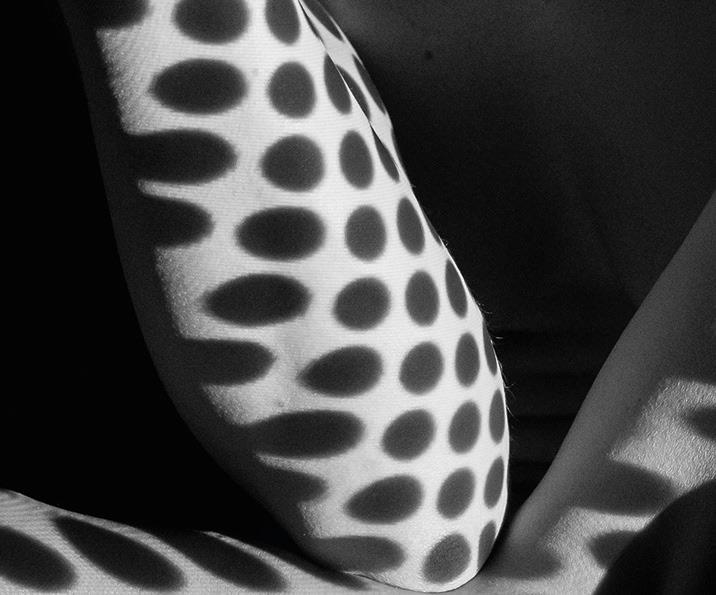


Perfect Match Between Downtime and Results









SmartXide Punto minimises downtime through the flexibility to be able to choose the right pulse, the right scanning mode, and the SmartStack function.






Trust In Expertise

SmartXide Punto is the result of decades of DEKA experience as the pioneers in CO2 lasers.












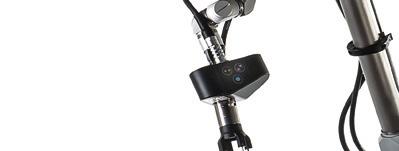





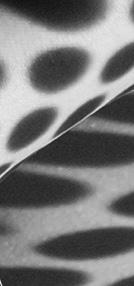




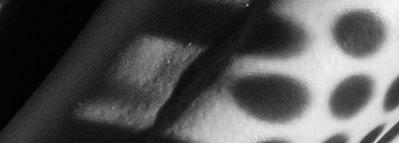
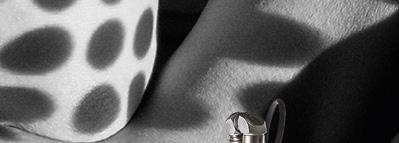
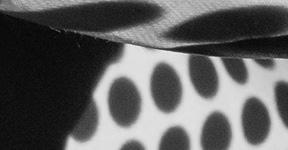


Visit Lynton.co.uk to find out more @dekalaseruk The new CO2 on the block!
Supported in the UK by Lynton
… but Cooler! Deliver impressive skin-rejuvenatio n with little to no downtime
and see SMARTXIDE PUNTO in action
CO2
Scan
Recognising Skin Conditions
Since the lockdown began in March 2020 to help curb the spread of COVID-19, we have seen a noticeable rise in patients presenting to aesthetic clinics. Save Face, a national register of accredited practitioners, has seen a 40% increase in traffic to its website, with the public researching aesthetic treatments and going on to source local practitioners. One of the most common reasons patients present
Basal cell carcinoma (BCC) with consultant dermatologist and laser specialist Dr Sajjad Rajpar

Characteristics: Appearance of an open sore that does not heal, a reddish or irritated area, a shiny bump or nodule, a small pink growth or a scar-like area. Can be confused with: Sebaceous gland hyperplasia, psoriasis, dermatitis, eczema, lichenoid keratosis, other skin cancers like melanoma, and precancers like actinic keratosis.
BCC is the most common skin malignancy in the UK, with more than 100,000 cases per year.1 BCC is seen more with advancing age, though the condition is observed increasingly in those in their late 20s and 30s.2 Those with fair skin, a tendency to burn in the sun, and a history of excessive sun exposure are more at risk. The lag period between sun exposure and developing BCC can be several decades, so a recent history of sun exposure is not relevant. BCC is usually a condition affecting white ethnic populations though 0.4% of lesions are reported to have occurred in mixed race individuals and those from Indian, African and Chinese backgrounds2 so it is important to be aware of this diagnosis even in skin of colour. Virtually every aesthetic practitioner is likely to encounter BCC in their career. In diagnosing a BCC, the history of a new or growing lesion that intermittently scabs or bleeds is very helpful. Any aesthetic practitioner should also be familiar with the range of appearances of a BCC and various free online atlases are easily accessible.3 While BCC does not cause mortality, it is important for practitioners to recognise BCCs as early treatment can significantly reduce morbidity. Mistreatment can delay diagnosis and increase morbidity. Unlike inflammatory lesions, a BCC is persistent and never comes and goes. A BCC grows slowly with time, doubling every six to 12 months.4 Early lesions are symptomless. Eventually, lesions ulcerate, bleed, and form a scab. Ulceration and scabbing may occur in cycles, and the lesion appears to apparently ‘heal’ in the intervening periods when the scab clears – only to break down again a few weeks or months later. This can give a false sense that the lesion has improved. The three main types of BCC have distinct clinical appearances: superficial BCCs, nodular BCCs and morphoeic BCCs.

to clinics are concerns around the physical signs of ageing on the skin. Practitioners then, are in a prime position to spot more serious skin concerns, and advise and refer them accordingly, sometimes catching them earlier than they might otherwise have. In this article, six dermatologists discuss common skin concerns and how to recognise and diagnose them.
Superficial BCCs: present as a circular eczema like patch and develop a rolled, raised edge that can be seen with a side light. Unlike eczema, a superficial BCC is usually a non-itchy single patch impervious to moisturisers or steroid creams. Superficial BCC can also mimic fungal rashes and psoriasis, and very occasionally pink seborrheic keratoses can also look like a superficial BCC.5,6
Nodular BCCs: are translucent papules which become nodules as they grow. A rolled edge develops if the centre ulcerates. Linear and arborising telangiectasias are seen under the dermatoscope, sometimes looking like benign moles, particularly skin-coloured mature moles. Nodular BCC can also look like benign cysts or a fibrous papule, a benign red or skin coloured dome like spot that most commonly occurs on the nose.5,6
Morphoeic BCCs: are much more subtle and can look like an ivory white area of skin thickening, much like a scar or localised area of morphoea. The presence of a ‘scar’ without the history of trauma or surgery ought to raise suspicion that the lesion could be a BCC. Induration is a helpful sign in detecting BCCs, especially for nodular and morphoeic BCC, where the skin surrounding a lesion feels thickened when it is palpated or pinched. Induration occurs as roots from the BCC are extending beyond a lesion.5,6
Sebaceous gland hyperplasia can also look like a nodular BCC. Sebaceous gland hyperplasia are common on the forehead and cheeks of middle-aged people. They can usually be diagnosed with a dermatoscope where a yellow spot is seen, that has multiple yellow globules and a central crater. Telangiectasias usually do not branch much and do not cross the centre.7 Mature moles, also known as intradermal naevi, and fibrous papules, which are both benign lesions, can also be confused with nodular BCC. In patients with a history of BCC, it is important to note that inflamed spots due to acne or rosacea will usually clear within six to eight weeks, whereas BCC will persist. Any practitioner treating moles, seborrheic keratoses, skin tags and cysts with destructive methods for cosmetic reasons, such as advanced electrolysis or laser shouldn’t hesitate to refer to a dermatologist if the lesions do not look absolutely typical. Only treat benign lesions with destructive methods if you are clinically sure of the diagnosis, and if there is any doubt refer.
Six dermatologists discuss how to identify common but important skin conditions in patients presenting for aesthetic procedures
Figure 1: A shiny nodulelike example of basal cell carcinoma
@aestheticsgroup @aestheticsjournaluk Aesthetics aestheticsjournal.com Reproduced from Aesthetics | Volume 8/Issue 12 - November 2021
Dr Sajjad Rajpar is a consultant dermatologist, laser specialist and Mohs surgeon at Belgravia Dermatology and Midland Skin Clinic.


Psoriasis with dermatology registrar Dr Mia Steyn and consultant dermatologists Dr Rakesh Anand and Dr Emma
Craythorne
Characteristics: Erythematous, scaly skin lesions, can involve nails and joints, is associated with several comorbidities, including cardiovascular disease and has significant psychosocial morbidity. Can be confused with: Seborrheic dermatitis, fungal skin infection, fungal nail infection, secondary syphilis.

Psoriasis is a chronic inflammatory multisystem disorder which predominantly affects the skin but can be associated with nail and joint involvement and an increased risk of cardiovascular disease affecting 2% of the population. Age of onset occurs in two peaks: 20-30 years of age and 50-60 years of age. Men and women are affected equally.8 Due to the potential negative impact on patients’ mental health,9-13 aesthetic practitioners may well be consulted and correct diagnosis and onward referral to appropriate specialists is essential. The aetiology of psoriasis is multifactorial. It occurs due to a combination of genetic, immunological and environmental factors. Known exacerbating factors for psoriasis include stress, skin trauma, obesity, alcohol, medications, and sudden withdrawal of systemic steroids.8 There are several different types of psoriasis, amongst others:8,13
1. Chronic plaque: symmetrical well-demarcated erythematous plaques topped with thick silvery scale on the scalp and extensor surfaces (elbows, knees). Approximately 90% of affected patients have plaque psoriasis (Figure 2).
2. Inverse (flexural): well demarcated erythematous plaques. Scaling is less prominent due to sweating and maceration. Can be complicated by secondary infection. Affected areas include the flexural areas.
3. Guttate psoriasis: characteristically seen following a streptococcal throat infection. It presents with multiple salmonpink teardrop lesions with fine scale, often on the trunk of the body. More common in younger patients.

4. Palmar plantar pustular psoriasis: appears as sterile pustules on a background of erythema and scaling of the palms and soles.
Melanoma with consultant dermatologist Dr
 Daron Seukeran
Daron Seukeran
Characteristics: Asymmetry, rough edges, mottled colouring with shades of brown, black grey, red or white, a diameter greater than 6mm.
Can be confused with: Benign moles, seborrheic keratosis, solar lentigines.
The incidence of melanoma in the Caucasian population in the UK is doubling every 10 years and occurs in roughly 10 per 100,000
Extracutaneous features:13
The prevalence of psoriatic arthritis increases with age and appears to be higher amongst patients with more severe psoriasis and those with nail involvement. Nail involvement is very common and includes pitting, distal onycholysis (separation of the nail from the nail bed), oil spots and subungual and proximal hyperkeratosis (thickened skin). There may also be proximal nail fold inflammation with loss of the cuticle. Fingernails are more likely to be affected than toenails.
Management of psoriasis should include a review of associated lifestyle factors and triggers. The choice of treatment depends on disease severity, treatment history and level of compliance.11
Appropriate first-line treatment for patients with limited psoriasis is centred on emollients in combination with active topical treatments.10 Emollients help soften scale, relieve itch, and reduce discomfort. The choice of emollient should be directed by patient preference and should be prescribed in large quantities. Active topical treatments include topical steroids, topical vitamin D3 analogues, salicylic acid and coal tar preparations. Topical corticosteroids should be used in caution due to risk of adverse effects such as skin thinning, purpura and secondary skin infection.10
For patients with more extensive disease, phototherapy, oral retinoids, methotrexate and biologics12,13 are all recommended as systemic treatments. A referral to secondary care will be required to discuss systemic therapy.
Mia Steyn is a final year dermatology registrar and Dr Rakesh Anand and Dr Emma Craythorne are both consultant dermatologists, all at St John’s Institute of Dermatology, Guy’s and St Thomas’ Hospital.

people per year.14 Approximately 10% of all cutaneous malignant melanomas are familial where two or more first degree relatives have a melanoma.14 Intermittent exposure of fair skinned individuals to intense sunlight is thought to be the main cause of the steadily increasing incidence of melanoma. Early diagnosis of melanoma is critical and there is evidence that melanoma publicity campaigns, regular self-examination and education of healthcare works have reduced mortality. This incidence remains very low amongst darkly pigmented populations of
Figure 4: classic melanoma showing abnormal shape and variation in colour

African, Asian and Hispanic origin; however, one can still get melanoma in unusual sites such as the nail bed or the sole of the feet and can be associated with a worse prognosis as often recognised late.14,15 Aesthetic practitioners come from a range of backgrounds and do not always deal with
 Figure 2: Classical plaque psoriasis
Figure 3: Classical nail changes as seen in psoriasis
Figure 2: Classical plaque psoriasis
Figure 3: Classical nail changes as seen in psoriasis
@aestheticsgroup @aestheticsjournaluk Aesthetics aestheticsjournal.com Reproduced from Aesthetics | Volume 8/Issue 12 - November 2021
Dr
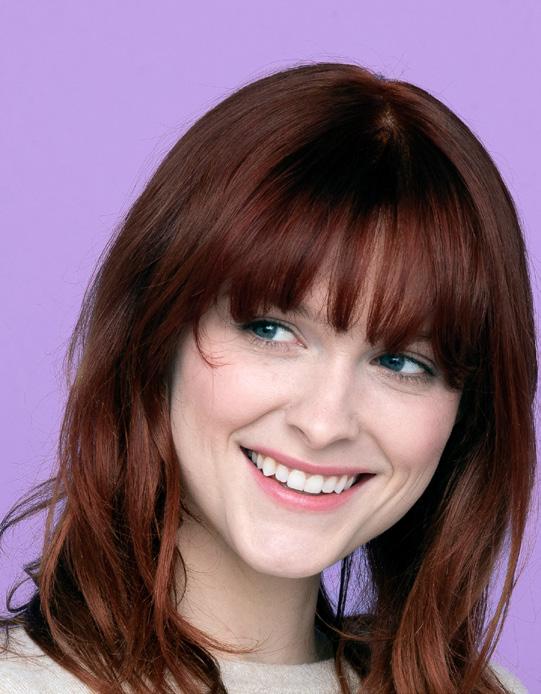


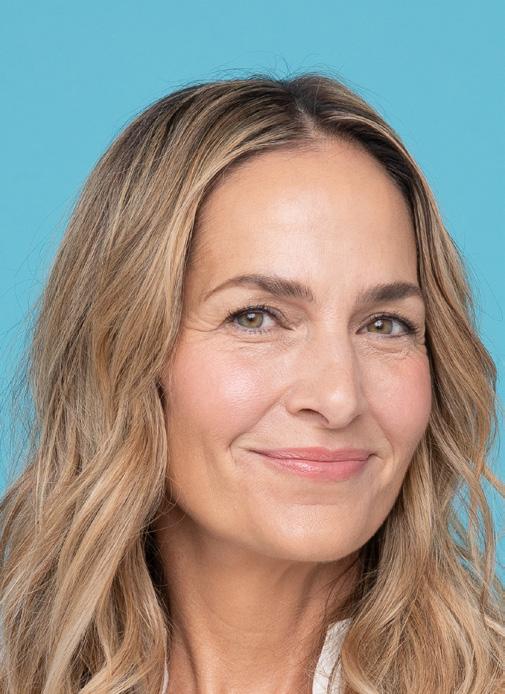




One Treatment. Endless Options. HydraFacial is for everyone. It’s suitable for all skin types and addresses all skincare needs. The HydraFacial delivers immediate, noticeable results, with no downtime, that keep your customers returning regularly. HydraFacial is your connection to millions of believers that know that beauty is more than a physical attribute – it’s a feeling. HydraFacial is scored as a ‘99% Worth It’ rating by www.realself.com and on average, somewhere in the world, a HydraFacial treatment is now carried out every 10 seconds! 1 EddieWouldGrow Facial Research 2018, n=2000; 2 Mintel Trends 2017 Consumers want to be pro-actively offered personalised solutions for skin health and provide them with education on their ideal, easy-to-follow skin health regimen1. And your client's needs are as individual as they are, which is why HydraFacial has partnered with the best brands in aesthetics to bring you advanced booster options that meet the emerging consumer trends that are influencing our industry more than ever before. Simplification Multi-benefit solutions that save time1 Personalisation Treatments tailored to specific skin concerns2 Recommendation Skin health technology and regimen education1 give your customers what they want! W: hydrafacial.co.uk E: infoUK@hydrafacial.com T: 01788 572 007 @hydrafacialuk To see how one powerful device provides everything you need to power your business, contact us today:
melanoma or skin cancer. However, their patient will be seeing them with a desire to improve their skin and it is not uncommon for a patient to ask about a mole they may be considering removing cosmetically. Equally, a practitioner may notice an unusual mole that the patient has not paid attention to, and it is important to know what to do if this occurs. Other pigmented lesions can be confused with melanoma. Many patients over the age of 50 may have superficial scaly pigmented lesions called seborrheic keratoses. Others may have uniformly pigmented lesions on the face known as solar lentigines which are harmless but a marker of photoageing. Dermoscopy can be helpful in differentiating these, but this requires training in its use.16
The appearance of a pigmented lesion is important. It may be there is an unusual shape to a lesion, or there may be a variation in colour that immediately is obvious. A practitioner should then ask the patient
whether there has there been a change in shape, size or colour? Is there a family history of skin cancer?
Sun and UV exposure should be a key question in any consultation as photoageing is a major factor in the ageing face. Excessive use of sun beds, frequency of sunny holidays, occupation which may be related to the outdoors, or having lived or worked abroad should be explored.
Does the individual have other moles that are not immediately obvious or are not regularly seen, such as on the back? We, as aesthetic practitioners, are in an excellent position to discuss the monitoring of moles with patients. If a practitioner notices an abnormal mole I would recommend referring the patient to their GP, who would consider a referral via the two-week rule skin cancer pathway.
The key element with melanoma is early diagnosis and treatment. If one can identify a
Frontal fibrosing alopecia with consultant dermatologist Dr Kristina Semkova
Characteristics: Receding hairline, small red lumps, loss of eyebrows.

Can be confused with: traction alopecia, normal hairline, androgenic alopecia, alopecia areata.
Frontal fibrosing alopecia (FFA) is a type of permanent hair loss that affects predominantly the frontal hairline. It develops because of inflammation and destruction of the hair follicles but it is unclear why this particular area is affected more often than other areas. It may be insidious and progress without any symptoms but occasionally the skin may be itchy and painful. The hairline recedes slowly with or without redness and flaking and the skin will become pale and thinner. Occasionally other areas of the body may lose hair as well and small skin-coloured lumps may develop on the face.18-20 Recognising FFA regardless of the treatment the patient has come in for is important as early treatment prevents further permanent hair loss. Thorough history and clinical examination usually suffice to suspect the diagnosis, as well as surmising if a woman is of perimenopausal age. Often patients may not be aware that their hairline is receding early, and treatment
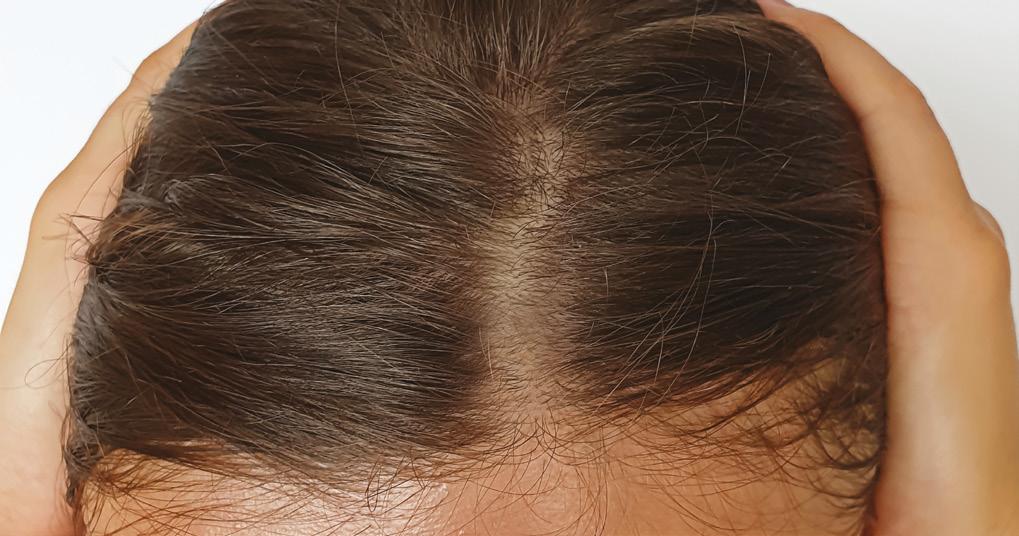
melanoma with a depth of less than 0.75mm, the 10-year survival rate is greater than 95%, whereas if the depth is greater than 4mm, the percentage 10-year survival falls to approximately 50%. This emphasises the importance and impact of delayed or missed diagnosis.17
Aesthetic practitioners are in the ideal position to provide advice about using adequate sun protection methods, which not only help with photoageing, but can reduce the cumulative sun exposure and risk of sunburn, and thereby the risk of melanoma. It is not an exaggeration that by simply being observant and aware of the above issues as part of your role as an aesthetic practitioner, you may save someone’s life.
Dr Daron Seukeran is a consultant dermatologist at James Cook University Hospital Teesside and group medical director at sk:n

delays usually lead to significant negative cosmetic outcome. FFA is usually diagnosed with clinical examination and often with the help of a dermatoscope. The best way to confirm the diagnosis is by taking a small sample (biopsy) from the edge of an active area to be examined.
Once the diagnosis is confirmed there are a variety of treatments that may stop the progression of the condition and the hair loss. The treatments may be topical: steroid creams and non-steroidal creams, injections, and tablets. Short courses of steroid tablets, hydroxychloroquine, a type of antibiotics or some hormonal treatments have been reported as effective. Unfortunately, there are no cures for FFA and the hair that has been lost will not grow back. Hair transplantation is an option after several years of inactivity of the condition, but the overall survival of the transplanted hair follicles is usually low even in the setting of burnt-out disease. Some patients with more extensive hair loss will prefer to wear wigs. Without treatment, the receding of the hairline progresses with about 2mm to 2cm per year, but the condition usually stabilises after several years.18
Dr Kristina Semkova is a consultant dermatologist at the St John’s Institute of Dermatology Guy’s and St Thomas’ Hospital.

THE REFERENCES ONLINE!
VIEW
WWW.AESTHETICSJOURNAL.COM
@aestheticsgroup @aestheticsjournaluk Aesthetics aestheticsjournal.com Reproduced from Aesthetics | Volume 8/Issue 12 - November 2021
Figure 5: Frontal fibrosing alopecia in a female

Treating the Periorbital Region
The eyes are the most important part of the face when it comes to expressed emotion, communication and recognition. Gaze tracking studies from the 60s show that this is the area we focus on when communicating with others.1 Even subtle changes to skin tone or wrinkles in this area can change the look of our entire face and age us prematurely.
Respecting the anatomy
With the thinnest skin on the body at less that 1mm thick, the periocular area is often the first facial area to show visible signs of ageing.2 Consequently, there is a high patient demand for periocular rejuvenation. Adding to this is seven muscle groups acting on each side simultaneously with every expression and blink, bone resorption around the orbital rim, collagen loss in the skin, laxity in the ligaments, thinning of the orbital septum, prolapse of fat in various places and hollowing in others.3 Practitioners should be aware, most importantly, of the purpose of the eyelids and periorbita. These serve the most important function of protecting the eyes, and any treatments should consider maintaining the function of the eyelids, the eyes, the eye surface, and the vision as well as improving cosmesis, without risking complications.4 When considering restoration of the ageing changes or rejuvenation/alteration of anatomy, it is important to be aware of the gender differences in normal anatomy, and the changes with ageing as patients should not be treated in the same way. A masculine brow tends to be flatter, while a more feminine brow will tend to be arched and higher above the orbital rim, for example.5 Normal ageing occurs in all layers of the periocular area from the bone up and these considerations are important when deciding upon a treatment approach.6 Prior to any treatment, whether surgical or nonsurgical, an in-depth consultation is essential.7 It’s my approach to cover the treatment details, post-treatment outcomes, and full medical history including any underlying autoimmune conditions that might contribute to periorbital swelling. In my view, examination should include looking at skin laxity, muscle function, eyelid laxity, position of the eyelids (if there is a pre-existing ptosis), positions of hollowing and of fat prolapse (suggestive of a deficient septum), and pre-existing oedema. Your treatments should aim to improve the anatomical integrity of the periorbital area and maintain function as well as improve cosmetic outcome.8
Treating successfully
With good patient selection for dermal filler treatment – excluding patients that have preexisting malar oedema and managing expectations in those that would profit more from surgery – there can be improvement in skin hydration, volume loss and integrity.9
The majority of problems occur with the use of the wrong products in the wrong area or excessive volume.10 This area is also extremely vascular, the skin is thin, and there are vessels supplying the vision from the internal carotid as well as anastomoses with branches of the external carotid, that all can risk emboli with intra vascular injection.11 Also disrupting normal anatomy, like the septum, can result in fat prolapse and worsening cosmesis later, as well as intraorbital filler placement.12
Much of tear trough improvement can be achieved by starting with treatment to the midface to improve the lid-cheek junction and support to the eyelid. In my experience, starting
treatments laterally over the zygomatic arch, which is part of the lateral line of fixed ligaments, can improve lift and support and reduce the volume required in the medial cheek.13 My personal practice protocol for the cheek is Juvéderm Voluma14 (0.5ml per side laterally and 0.3-0.5ml medially to the deep cheek fat pad and SOOF). For the tear trough, tiny micro-aliquots of Juvéderm Volbella can be placed, aiming to underfill (no more than 0.3ml per side in total).15
Repeat treatment to the tear trough can be performed after three weeks, allowing time for the initial treatment to integrate and review the residual contour abnormality and volume deficiency.
REFERENCES
1. Yarbus, eye movements and vision. I-Perception 2010; 1(1):7-27.
2. Michael A C Kane, Nonsurgical Periorbital and Brow Rejuvenation, Plast Reconstr Surg. 2015 Jan;135(1):63-71.
3. CL. Shumway; et al. Anatomy, Head and Neck, Eye Extraocular Muscles. 2021. Statpearls.
4. Christoph Hintschich. Periocular Plastic Surgery. Deutsches Ärzteblatt International, Dtsch Arztebl Int 2010; 107(9): 141–6.
5. MH. Hohman, et al. Transgender, Surgery of the Head and Neck. 2021.Statpearls.
6. Kapoor et al (2021). Treating Aging Changes of Facial Anatomical Layers with Hyaluronic Acid Fillers Clinical, Cosmetic and Investigational, Dermatology 2021:14 1105–1118.
7. Kashkouli et al (2017). Periorbital facial rejuvenation; applied anatomy and pre-operative assessment Journal of Current Ophthalmology 29 (2017) 154e168.
8. Bruna Souza Felix Bravo et al., Comprehensive Treatment of Periorbital Region with Hyaluronic Acid, J Clin Aesthet Dermatol. 2015 Jun; 8(6): 30–35.
9. Jonathan Hoenig and Danya Hoenig (2013). Minimally Invasive Periorbital Rejuvenation. Facial Plast Surg 2013;29:295–309.
10. Eckart Haneke (2015). Managing Complications of Fillers: Rare and Not-So- Rare. Journal Cutan Aesthet Surg. 8(4), pp. 198–210.
11. Jaishree Sharad, ‘Dermal Fillers for the Treatment of Tear Trough Deformity: A Review of Anatomy, Treatment Techniques, and their Outcomes’, Journal of Cutaneous and Aesthetic Surgery, 2012, V5, I4.
12. Kasra Ziai et al., Periocular rejuvenation using hyaluronic acid fillers, The Role of Hyaluronic Acid in Modern Plastic and Aesthetic Surgery, Oct 2020.
13. Myomodulation with Injectable Fillers: An Innovative Approach to Addressing Facial Muscle Movement (v1.0).

14. Karina Colossi Furlan, Hyaluronic Acid for Malar Area and Zygomatic Arch, A. Da Costa (ed.), Minimally Invasive Aesthetic Procedures, Springer Nature Switzerland AG 2020.
15. Mr Dalvi Humzah & Dr Raj Acquilla, Peri-orbital rejuvenation using HA fillers, pmfa news, 201 5,VOL 2 NO 4.
Miss Rachna Murthy is a consultant oculoplastic and aesthetic surgeon and co-owns FaceRestoration. She is regarded as an authority on aesthetic eyelid surgery, skin cancer and thyroid eye disease and is a consultant to Allergan.

Qual: BSc(Hons), MB, BS, FRCOphth
This article is produced and funded by Allergan Aesthetics, an AbbVie Company
For more information go to: www.juvederm.co.uk UK-JUV-210649 October 2021

Miss Rachna Murthy presents her approach to rejuvenation using the Juvéderm range following her presentation at CCR
Aesthetics | November 2021 29 @aestheticsgroup @aestheticsjournaluk Aesthetics aestheticsjournal.com Advertorial Allergan
52-year-old patient before and after treatment using 1ml of Juvéderm Voluma into the mid-face and 0.5ml of Volbella into the tear trough
Before After




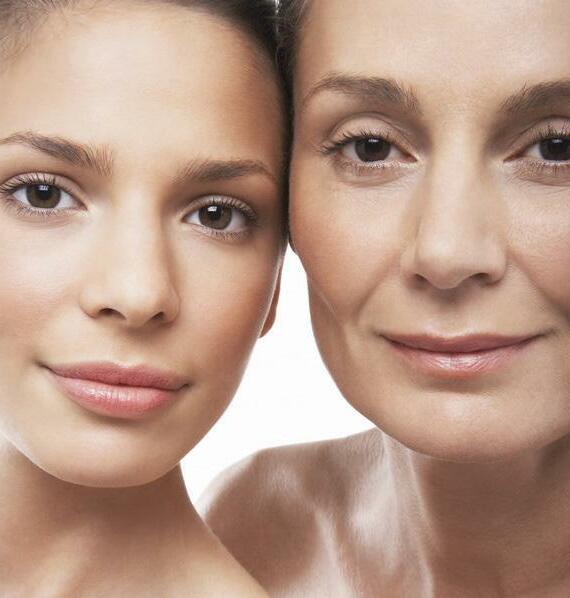
ARE YOU READY TO #WOW ? Discover your WOW at: www.wowfacial.co.uk WOW facial® are the experts in hyper-personalised skin solutions bringing you the ultimate 6 stage facial. A versatile, results driven treatment and a high profit margin business partner. Stage 1 Cleanse and Prep Stage 2 Choice of 4 Peel and Treat solutions Stage 3 WOW fusion® microneedling with bespoke solutions Stage 4 LED light therapy Stage 5 The Mask by WOW facial® Stage 6 Finish and Protect. Performed by professionals, loved by all. #areyoureadytoWOW FOLLOW US ON FACEBOOK AND INSTAGRAM @ WOWFACIAL MINI WOW | EXPRESS WOW | WOW I’M PREGNANT | WOW fusion ® ACNE TO WOW | WOW HYDRATE AND BRIGHTEN | WOW HEAL AND REPAIR
Reviewing Collagen Supplements
Independent nurse prescriber Caroline Hall explores the literature around collagen supplementation in aesthetics
There has been a huge rise in the use of nutraceuticals over the last five years.1 Collagen supplementation has been particularly popular,2 and we are seeing an increase in patient interest due to media and raised awareness and usage of lifestyle supplements. The use of supplements remains somewhat controversial given the lack of regulation regarding over-the-counter supplements and the quantity and quality of ingredients.2 There’s also the question: do they actually work?
As more evidence begins to emerge supporting the use of supplementation, more practitioners are using a holistic approach and combining non-surgical treatments with cosmeceutical skincare products and nutraceutical supplements to give optimum results for patients.
At the time of writing this article I did not use, nor recommend, any collagen supplements in my practice. Despite being asked by my patients on a regular basis if I recommend collagen supplementation and if so, what brands could I recommend, I felt that my lack of knowledge surrounding the products and any associated evidence prevented me from feeling confident in doing so. As medical professionals, an evidence-based approach should be at the core of our practice and I feel it is important we look at the evidence base of a product before we recommend it to our patients. I have therefore decided to write this CPD article to look at the evidence surrounding collagen supplementation, to understand its mechanism of action and what evidence there is to support its use in skin rejuvenation.
Nutraceuticals
It is widely accepted and supported within the literature that diet has a profound effect on the skin and so does good nutrition.3,4 Nutrition is needed for all biological processes of the skin and the quality of nutrition will have an impact of overall skin health and ageing.4 With this in mind, I will be exploring the evidence to see if supplementing the diet with collagen has a proven effect on skin health/ageing. So, what exactly is a nutraceutical? The Cambridge dictionary defines a nutraceutical as a ‘functional food’ and a food to which vitamins, minerals, or drugs have been added to make it healthier. For this article I will be specifically focusing on collagen supplements. These are most commonly seen either in capsule, powder or ready mixed liquid form.5
The global nutraceutical market is rapidly growing and is projected to reach US $722.49 billion by 2027,2 so as more and more products are developed, and more consumers take interest, it is more important than ever to understand the best, most effective types to offer types to offer in clinic.
Collagen and ageing
Collagen is a major protein that is found in the extracellular matrix and it accounts for approximately 80% of the dry weight of skin composition.6 Within the skin you will find as many as 14 different collagens, the most common are Type I (80%) and Type III (15%). Collagen degradation starts in our mid-20s and we lose around 1% per year from this point.7 It is expected that women will lose up to 30% of their collagen in the first five years following the menopause, and the rate at which collagen degrades in the years after menopause raises to 2% per year.8-10 The reduction in collagen due to the menopause is linked to the reduction of oestrogen in the body.11 Ageing of the skin is caused by intrinsic and extrinsic factors. Young skin is smooth and supple, often radiant, given its regular cell renewal process. As we age, changes occur within the structure of the dermis and epidermis and the density of the collagen decreases, and in turn the thickness of the dermis also decreases.7 Collagen fibres begin to fragment, become shorter, irregular and less organised. As a result, the collagen fibres lose their ability to retain moisture and the skin loses elasticity and becomes more wrinkled6 (Figure 1). Alongside this, an increase in the production of matrix metalloproteinase (MMP) causes accelerated collagen degradation. In addition, the synthesis of new extracellular matrix components by dermal fibroblasts slows, thus failing to adequately replace the degraded matrix.11-14
Collagen in nutraceuticals
There are four main types of collagen used in the production of nutraceutical supplements: bovine, porcine, poultry and marine.15 Although bovine collagen is often cheaper to produce, there are limitations due to dietary requirements or religious constraints and carbon footprint.15 Marine collagen, although more expensive to produce has fewer dietary restrictions, and a high rate of absorption due to its low molecular weight, typically 3-5KDa, although seafood allergies need to be taken in to account. Collagen is mainly formed by the amino acids glycine (33%), proline and hydroxyproline (22% combined)15– see Figure 2
Figure 1: Decreased collagen and broken elastin in older skin compared to younger skin Hyaluronic acid Cuticle Epidermis Dermis Hypodermis Muscles Elastic fibre (broken) Collagen (atrophy) Fat cells @aestheticsgroup @aestheticsjournaluk Aesthetics aestheticsjournal.com Reproduced from Aesthetics | Volume 8/Issue 12 - November 2021
Vegan collagen doesn’t exist in nature, the precise mix of amino acids found in animal collagen cannot be found in plants. Most vegan collagen supplements contain some amino acids such as leucine and contain collagen precursors such as vitamin C, which helps the body to synthesis its own collagen. Native collagen refers to collagen in its purest form, i.e. tendons, cartilage, bones and other animal tissue. It consists of a triple helix structure of the amino acids glycine, proline and hydroxyproline, and has a high molecular weight of 300kDa.16 This makes it very difficult for the body to absorb, meaning any collagen used in supplementation must first be degraded into hydrolysed collagen which consists of smaller segmented proteins of around 1kDa to 10kDa. This lower molecular weight gives a higher bioavailability as it is more easily absorbed by the body (Figure 3).16
It was previously thought that collagen, when ingested, was hydrolysed into amino acids in the gastrointestinal tract (GI) prior to being absorbed. However, increasing evidence suggests that collagen peptides are absorbed directly into the blood stream.17 A 2018 study included five female volunteers in good health who fasted for 12 hours and were then given 5g of porcine collagen hydrolysate mixed with 200ml of water. 10ml venous blood samples were taken at 30, 60, 120, 240, 360, and 480 minutes. The results indicated that the dipeptide prolyl-hydroxyproline was found in the blood stream following ingestion of collagen peptide supplements and was noted to peak at two hours and decrease after four hours.18
A further study in 2010 where a sample size of 48 rats were given
poultry collagen, indicated that orally-administered hydrolysed collagen is absorbed into the blood stream via the small intestine, both in the form of free amino acids and small collagen peptides. Through the network of blood vessels, these collagen peptides and free amino acids are then distributed throughout the body, in particular to the dermis, where it has been proven they can remain up to 14 days.19
Once in the dermis, hydrolysed collagen has a dual action mechanism; firstly, free amino acids provide building blocks for the formation of collagen and elastin fibres. Secondly, hydrolysed collagen has been shown to increase growth and the overall number of fibroblasts produced. Collagen peptides also work as chemoattractants for fibroblasts which is thought to play a role in stimulating the cells that synthesise new collagen fibres, hyaluronic acid and elastin.18
Studies linking collagen supplementation and skin changes
Now we have seen there is evidence that collagen is absorbed into the blood stream and the positive effect it has on the cells that produce collagen, we must look if there is evidence that the collagen supplementation has a visible effect or shows structural changes within the skin.
A 2008 study of 66 women aged 40-59 were involved in a randomised, placebo controlled clinical trial. They were randomly split into three groups – a placebo group, a group given porcine collagen peptides 10g, and a group given 10g of marine collagen for 56 consecutive days. Facial assessment was carried out at baseline, four weeks and eight weeks in a controlled environment. Assessment was done by using a Corneometer device to assess skin moisture levels at three different points per subject. Transepidermal water loss (TEWL) was recorded using a Tewameter 3cm from the earlobe on the line between the ear and mouth. At eight weeks the results showed an increase of 12% in the skin’s moisture level in the group using marine collagen and an increase of almost 28% in the group using porcine collagen in comparison to the placebo group. No increased TEWL was noted in any of the groups, so therefore it was established that using a collagen supplement could effectively increase the levels of hydration in the skin without increasing the moisture lost.20
In a randomised, blind, placebo-controlled study in 2019, 72 healthy women aged 35-73 were given either a food supplement containing 2.5g of collagen peptides, acerola fruit extract, vitamin C, zinc, biotin, and a native vitamin E complex or a placebo for 12 weeks.21 The study used objective skin assessment tools for testing such as, cutometry (elasticity), the use of silicone skin replicas with optical 3D phaseshift rapid in-vivo measurements (roughness), corneometry (skin
Figure
The process of hydrolysis. The higher the dalton weight, the harder it is for the molecules to be absorbed into the body16 Native collagen Hyrdrolysed collagen peptides Regular molecular weight (300,000 dalton) Low molecular weight (2,000 dalton) Difficult to absorb Excellent absorption Collagen fibre Collagen fibrils A-chains Proline Glycine Hydroxyproline Amino acid sequence Collagen molecule @aestheticsgroup @aestheticsjournaluk Aesthetics aestheticsjournal.com Reproduced from Aesthetics | Volume 8/Issue 12 - November 2021
Figure 2: The structure of collagen fibres15
3:
hydration) and skin sonography (density). The subjects were tested at day zero, day 84 and day 112. No significant differences were found in skin hydration at day zero, but by week 12 there was noted to be a significant difference in skin hydration when compared to the placebo group. Skin elasticity was also found to be increased and this increase was statistically significant at week 12 when compared to the placebo group. Alongside a significant difference in skin hydration and skin elasticity, a significant change in skin roughness was noted in the supplemented group, both groups started at similar levels and reduction in wrinkle depth was noted in the verum group and the maximum improvement of skin roughness was 41%. Skin density was sonographically measured and, interestingly, an increase in skin density was found in both the test group and the placebo group at week 12. The thickness of the dermis and corresponding skin density showed an increase of 34.8% in the test group, and 6.8% in the placebo group. The increase in the placebo group was attributed to the ‘placebo effect’ of unconscious lifestyle changes by the subjects during the study.
The same assessment tools were used four weeks after stopping the supplements and skin hydration levels were still increased significantly when compared to the initial hydration levels at day zero. Although skin hydration levels decreased by 48% between week 12 and 16, skin hydration levels still remained 15% higher than the baseline levels taken at week zero. Skin density continued to show a significant increase four weeks later when compared to day zero levels and the study revealed a significant improvement to the collagen structure of the skin in response to the test product.21 Skin density showed a decline of 31.3% at week 16 when compared to week 12, however this was still an increase of 18% above baseline. For all skin parameters, the improvement percentage remained higher at four months than at the beginning of the study.
A further randomised, placebo-controlled, triple-blind trial in January 2020 of 60 females between 40 and 70, confirmed the positive cosmetic effects of the collagen-containing food supplement on the quality and appearance of the skin.22 The study randomly split the participants into two equal groups and they were either given the placebo drink or the supplement containing 2.5g of specific short-chain collagen oligopeptides, 666mg acerola fruit extract, 80mg vitamin C, 3mg zinc citrate, 2.3mg vitamin E, and 50μg biotin. Each participant had one drink per day for 84 days. The study used objective, blinded, and validated image analyses using confocal laser scanning microscopy and showed a significant improvement of the collagen structure of facial skin after intake of the collagen supplement, while no improvements were found after intake of the placebo. A visual analogue scale was used to assess the images
from the VIVASCOPE showing the collagen structure of the subcutis. The images were taken before and after 85 days of the test product. The expert grader assessed the after image as clearly better with a score of +27, with zero equaling no difference. The results of the study confirmed a positive effect on condition and appearance of the skin following collagen peptide supplementation.22
In 2019, a review of the literature was carried out on 11 studies, totaling 805 patients. Of these studies, two used collagen peptides 3g per day for four to 12 weeks and saw notable improvements in skin elasticity and hydration. Eight studies used between 2.5g-10g for eight to 24 weeks for the treatment of skin ageing, pressure ulcers and cellulite and those studies found promising results for wound healing and ageing when using oral collagen supplementation. The review also showed no adverse effects from collagen supplementation in any of the studies.23
There doesn’t appear, from the studies, to be a recommended dosage for optimum results or even a minimum recommended amount, although most studies appear to have used a minimum of 2.5g and a maximum of 10g of hydrolysed collagen per day.
A study in 2016 of 56 women compared two groups of patients given two types of collagen hydrolysates, which were made up of different amounts of the bioactive dipeptides Pro-Hyp and HypGll.24 The group with the higher concentration of collagen peptides showed significantly more improvement in skin elasticity, moisture and wrinkles than those in the lower concentration and the placebo group. This trial suggests that a higher concentration of hydrolysed collagen gives greater effect, and although the trial measured safety of the supplementation by carrying out blood tests, and reported no adverse events, there appears to be no published data on a safe upper amount.
A study in 2019 set out to determine the maximum level of dietary collagen peptides that can be incorporated in the Western pattern diet while maintaining its indispensable amino acid balance.25 Calculations based on the protein digestibility-corrected amino acid score, a method for assessing the indispensable amino acids within a food by comparing its amino acids to what our bodies can use,26 showed that a level as high as 36% of collagen peptides can be used as protein substitution in the daily diet while ensuring indispensable amino acid requirements are met. This study suggests that the effective amounts of functional collagen peptides (2.5-10g per day) observed in the literature are below the maximum level of collagen that may be incorporated in the standard US diet. This shows a dosage of between 2.5-15g of hydrolysed collagen per day may be safe and effective. Although there are no published recommended upper limits, most preparations do not exceed a recommended dose of 15g per
Collagen is a major protein that is found in the extracellular matrix and it accounts for approximately 80% of the dry weight of skin composition
@aestheticsgroup @aestheticsjournaluk Aesthetics aestheticsjournal.com Reproduced from Aesthetics | Volume 8/Issue 12 - November 2021
Given that there is limited evidence for a safe upper dose, there is scope to research this further
day and as with any supplement we can guide our patients to follow the recommended instruction on the particular supplement given.
Conclusion
From the literature we can see that there is now growing evidence to support improvements in skin elasticity, texture and improvement in collagen structure when using a daily collagen supplement. This evidence may give practitioners confidence to offer collagen supplementation within their clinics and expect evidence-based results for their patients. A range of collagens were used in the studies, but liquid based marine collagen was shown to be superior in terms of bioavailability and absorption and is overall accepted to have fewer dietary limitations for patients when compared to bovine/porcine.24
In terms of dosage, it was difficult to find any recommended minimum or maximum dose as the dosage of supplementation varied between the studies. It was suggested in one study that higher doses of hydrolysed collagen led to increased improvement in the skin when compared to lower dose and a placebo. Improvement in skin health, elasticity and hydration was shown in three studies when 2.5g per day of hydrolysed collagen was ingested which gives a good baseline of a minimum amount a supplement should contain, and one study showed that up to 15g per day was considered safe and effective.24 Given that there is limited evidence of a safe upper dose, there is scope to research this further. Some studies included other ingredients such as vitamins or fruit extracts in the test drinks but not in the placebo. This should be taken into consideration as it wasn’t clear when reading the studies if this could have an impact on the absorption of the supplements or results of the studies. I would like to research this area further to establish the link between efficacy of results and the addition of other ingredients. Collagen supplements come in different flavours and forms; powders or ready mixed liquids. It may be down to personal taste which is preferred by patients. To conclude, I believe it appears there is enough evidence in which to support using collagen supplements in practice. Based on what I have found, I will be recommending a marine collagen-based supplement in dissolvable powder/liquid form however, this area would benefit from further research.
Aesthetics Clinical Advisory Board
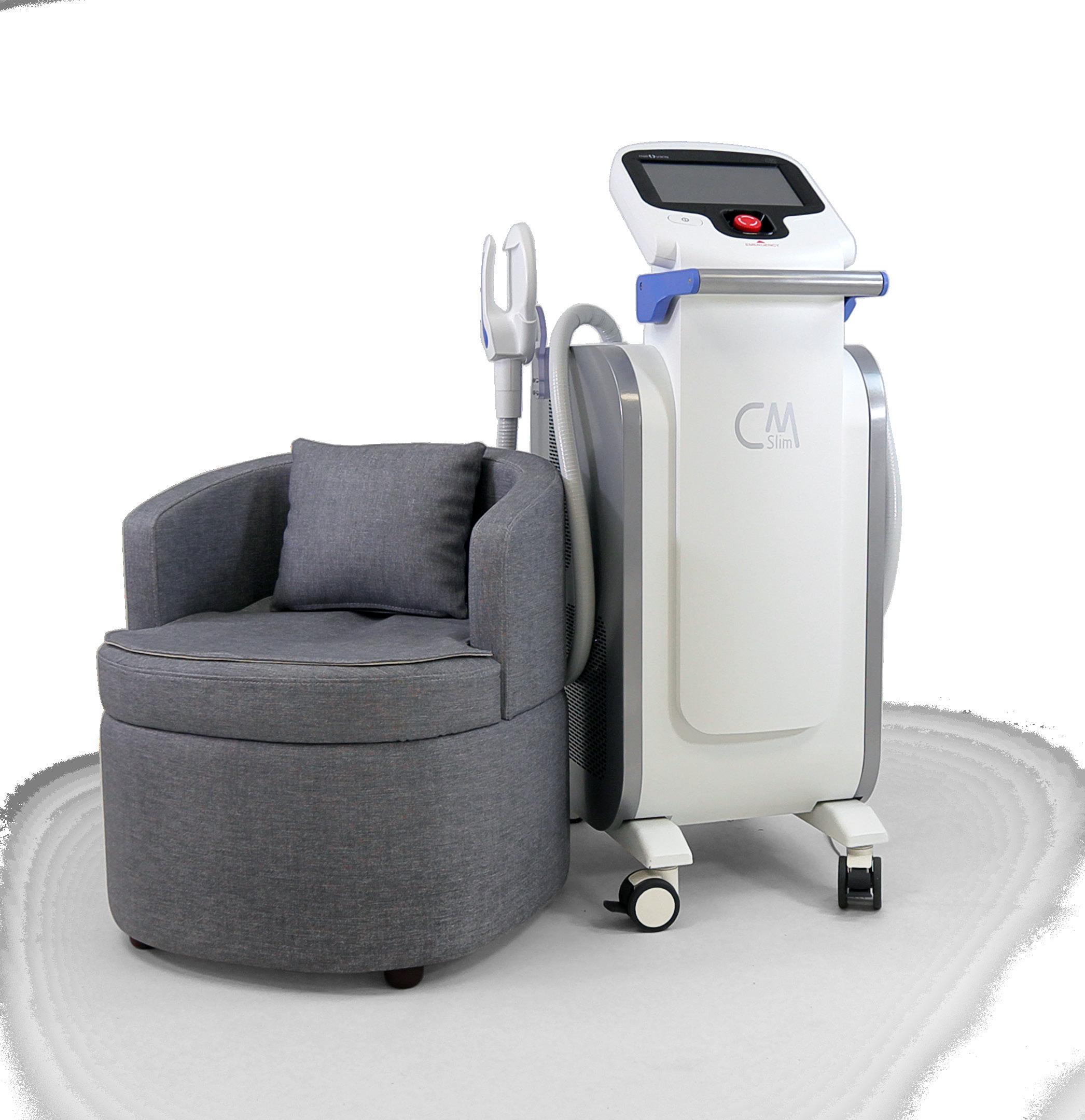
Member and nurse prescriber
Jackie Partridge says...
The decision as to whether to promote collagen supplements remains a somewhat controversial one. As this article demonstrates, there appears to be no evidence to support minimum or maximum dosages and as medical practitioners, I feel this leaves many of us with unanswered questions to support promoting collagen supplements to our patients. While, as the author states, marine collagen appears to offer a superior outcome, the lack of scientific data on dosage remains a concern. Cost is another factor that patients will be interested in, and as the supplement market is so crowded with high street and online special offers, this remains a topic requiring further investigation.
REFERENCES
1. Grand View Research. The Nutraceutical Market Size, Share & Trends Analysis Report by Product Region, and Segment Forecasts, Dietary Supplements, Functional Foods, Functional Beverages, 2020-2027, USA, Research and Markets 2020
2. Department of Health and Social Care, Food supplements: summary information on legislation relating to the sale of food supplements DOH, 2011, <https://assets.publishing.service.gov.uk/ government/uploads/system/uploads/attachment_data/file/204303/Supplements_Summary__ Jan_2012__DH_FINAL.doc.pdf>
3. Mordor Intelligence LLP, Europe Collagen Supplements Market - Growth, Trends and Forecasts (2020 - 2025), India: Report Linker, 2020 <https://www.reportlinker.com/p05903714/EuropeCollagen-Supplements-Market-Growth-Trends-and-Forecasts.html?utm_source=GNW>
4. S Schagen, et al., Discovering the link between nutrition and skin aging, Dermato-endocrinology, (4) 298-307, 2012

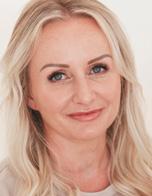
5. CambridgeDictionary, Nutraceutical, 2021, <https://dictionary.cambridge.org/dictionary/english/ nutraceutical>. Accessed 25/03/21
6. C Cao, et al., Diet and Skin Aging-From the Perspective of Food Nutrition, Nutrients, 12(3) 870, 2020
7. K Gelse, et al., Collagens Structure, Function, and Biosynthesis, Adv Drug Deliv Rev, 55 (12) 1531 – 46, 2003
8. S Shuster et al., The influence of age and sex on skin thickness, skin collagen and density, British Journal of Dermatology, 93 (639–43), 1975
9. M Brincat , CJ Moniz, JW Studd, A Darby, A Magos, G Emburey, E Versi. ‘Long-term effects of the menopause and sex hormones on skin thickness’. British Journal of Obstetrics and Gynaecology (1985) 92 (3) (p256-9).
10. M Brincat, E Versi, CF Moniz, A Maggos J De Trafford, JW Studd. ‘Skin collagen changes in postmenopausal women receiving different regimens of estrogen therapy.’ Obstetrics and Gynecology. (1987) 70(1) (p123-127).
11. P Affinito et al., Effects of postmenopausal hypoestrogenism on skin collagen, Maturitas, 15;33(3) 239-47, 1999
12. J Varani, MK Dame et al., Decreased collagen production in chronologically aged skin: roles of age dependent alteration in fibroblast function and defective mechanical stimulation, The American Journal of Pathology, 168 (1861–8), 2006
13. T Quan, E Little et al., Matrix metallo-proteinases and collagen fragmentation in photodamaged human skin: impact of altered extracellular matrix microenvironment on dermal fibroblast function, Journal of Investigative Dermatology, 133 (1362–6), 2013
14. JH Chung, JY Seo, et al., Modulation of skin collagen metabolism in aged and photoaged human skin in vivo, Journal of Investigative Dermatology, 117 (p1218–24), 2001
15. A León-López, A Morales-Peñaloza, et al., Hydrolyzed Collagen-Sources and Applications, Molecules, 24 (22) 4031, 2019
16. GY Li, S Fukunaga, e al., Comparative study of the physiological properties of collagen, gelatin and collagen hydrolysate as cosmetic materials, International journal of cosmetic science, 27 (p101–106), 2005
17. D Liu, M Nikoo, et al., Collagen and Gelatin,Annual Review of Food Science and Technology, 6:1 (527-557), 2015
18. Y Shigemura Y, K Iwai, et al., Effect of prolyl-hydroxyproline (Pro-Hyp), a food-derived collagen peptide in human blood, on growth of fibroblasts from mouse skin, Journal of Agricultural Food Chemistry, 57 (444–449), 2018
19. M Watanabe-Kamiyama, M Shimizu et al., Absorption and effectiveness of orally administered low molecular weight collagen hydrolysate in rats, Journal of Agricultural Food Chemistry, 58 (2) (835-41), 2010
20. J Asserin, E Lati, et al., The effect of oral collagen peptide supplementation on skin moisture and the dermal collagen network: evidence from an ex vivo model and randomized, placebocontrolled clinical trials, Journal of Cosmetic Dermatology, 14(4) (291-301), 2015
21. L Bolke, G Schlippe, et al, Collagen Supplement Improves Skin Hydration, Elasticity, Roughness, and Density: Results of a Randomized, Placebo-Controlled, Blind Study, Nutrients, 11(10) (2494), 2019 22. S Laing, S Bielfeldt, et al., A Dermonutrient Containing Special Collagen Peptides Improves Skin Structure and Function: A Randomised, Placebo-Controlled, Triple-Blind Trial Using Confocal Laser Scanning Microscopy on the Cosmetic Effects and Tolerance of a Drinkable Collagen Supplement, Journal of Medicinal Food, 23(2) 147-152, 2020 23. FD Choi, CT Sung, et al., Collagen Supplementation: A Systematic Review of Dermatological Applications, Journal of Drugs in Dermatology, 118 (1) 9-16, 2019 24. N Inoue, F Sugihara, et al., Ingestion of bioactive collagen hydrolysates enhance facial skin moisture and elasticity and reduce facial ageing signs in a randomised double-blind placebocontrolled clinical study, Journal of the Science of Food and Agriculture, 96 (12) (4077-81), 2016
C Paul, S Leser, et al., Significant Amounts of Functional Collagen Peptides Can Be Incorporated in the Diet While Maintaining Indispensable Amino Acid Balance, Nutrients, 11(5) (1079), 2019 26. Food and Agriculture Organization (FAO) Dietary protein quality evaluation in human nutrition: report of an FAO Expert Consultation, FAO Food Nutr. Pap, 92 (1-79), 2013
Questions Possible answers 1. Collagen peptides are absorbed into the body… a. Sublingually b. Transdermally c. Via the small intestine d. Are not absorbed at all 2. What is thought to be the minimum recommended dosage of collagen per day? a. 5g b. 2.5g c. 10g d. 250g 3. What is thought to be the most bioavailable type of collagen? a. Marine b. Bovine c. Porcine d. Plant based 4. What is the recommended kDa of a collagen peptide supplement? a. 1-10kDa b. 300kDa c. 1,000kDa d. 500kDa 5. What limitations are to be considered when using bovine collagen supplements? a. Taste b. Cost c. Availability d. Dietary/religious requirements Test your knowledge! Complete the multiple-choice questions below and go online to receive your CPD certificate! Answers: 1. c, 2. b, 3. c, 4. a, 5. d Caroline Hall is an independent nurse prescriber and the
She
nurse and
years
aesthetic
2016. Qual:
@aestheticsgroup @aestheticsjournaluk Aesthetics aestheticsjournal.com Reproduced from Aesthetics | Volume 8/Issue 12 - November 2021
25.
owner of R&R Aesthetics in Leeds.
worked as a
midwife within the NHS for 14
before becoming a full-time
practitioner in
RGN, RM, Bsc Hons, INP




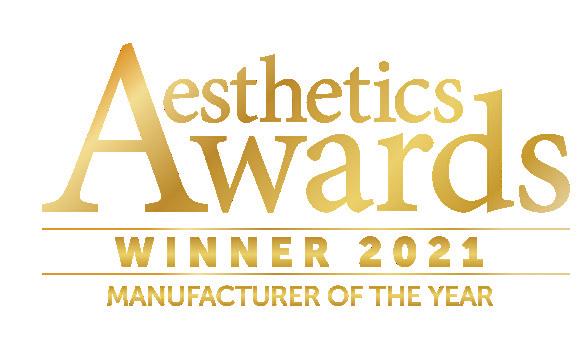
Aesthetic Technology Ltd. T: 0845 689 1789 E: info@aesthetictec.com W: aesthetictec.com





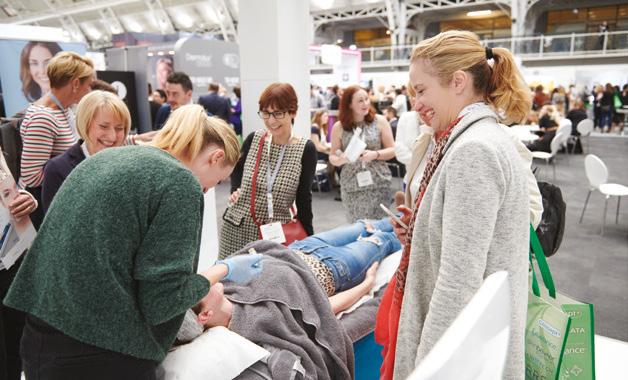
REGISTER FOR FREE TODAY www.aestheticsconference.com @aestheticsgroup @aestheticsjournaluk Aesthetics The UK’s leading clinical conference and exhibition bringing the Aesthetics journal to life. Join 2,000 medical aesthetic professionals as they come together for two days of discovery, learning, business and networking. Discover first-hand dozens of products launched exclusively at ACE – to widen your clinic offering and help you stand out from your peers. Learn from leading experts about: • Injectables • Threads • Clinical practice • Laser • Skin rejuvenation • Peels All completely free-to-attend and CPD credited. SCAN THE QR CODE TO REGISTER NOW ACE 2022 IS YOUR NEXT EVENT 13 & 14 MARCH 2020 / LONDON HEADLINE SPONSOR 11 & 12 MARCH 2022 | BUSINESS DESIGN CENTRE, LONDON • Complications • Stem cell hair regeneration • Energy devices • Latest business support




CELEBRATE YOUR INDUSTRY AT THE MOST PRESTIGIOUS AWARDS IN AESTHETICS! Book your ticket or table and join us for a night of celebration, taking place on the second day of ACE 2022, 12 March at the Royal Lancaster Hotel, London. Each ticket includes A celebratory glass of prosecco on arrival Professional photographs at the Aesthetics Awards press board A delicious three-course meal with complimentary wine A celebrity guest host Dancing into the night Tickets will sell out, so be sure to secure your place at the Aesthetics Awards 2022 as soon as possible! Early-bird prices available until 31 December! @aestheticsgroup @aestheticsjournaluk Aesthetics IF YOU HAVE ANY QUESTIONS, PLEASE CALL OUR TEAM ON +44 (0)20 3096 1228 or email contact@aestheticsjournal.com 12 March 2022 | Royal Lancaster Hotel, London SCAN THE QR CODE TO BOOK NOW
PILLARS NOT FILLERS
Dr Dev Patel discusses treating young patients and why he believes the term ‘filler’ is no longer relevant, especially when looking to achieve natural looking results
If I were to sit here and tell you that the term ‘dermal filler’ has become obsolete in aesthetics, you would probably think I was joking. But, hear me out. I am not saying this to be controversial or because I don’t use these products regularly in my practice, quite the opposite. Like most aesthetic doctors, ‘fillers’ are one of the mainstay treatments I offer in my clinic. However, I believe the word ‘filler’ is no longer an accurate description of the products or techniques we use in aesthetic practice, as it only reflects a small portion of their capabilities. This is something I tell my patients at their very first consultation. Of course, we do still ‘fill’ some lines, such as the fine static lines around the mouth or tear trough. For these types of treatments, I use a blanching technique with BELOTERO® Balance.11 I inject the product superficially into the dermis to ensure I do not unduly change the contour of the face in that area, as that is not the aim of this treatment. But that, for me, is where ‘filling’ ends. Sadly, in an unregulated industry, many people are still being “filled”. Some patients are treated as if their face is one empty compartment that can be filled up, obliterating all angles and curves. We can’t possibly expect our patients’ features to remain human-like and natural if we employ this approach. Thus, I explain to patients that they should think of these products as ‘dermal pillars’ and that our aim is to establish support and structure to achieve a more complementary contour to the face.
Are aesthetic treatments always antiageing?
In a word, no. Many years ago, when I started in aesthetics, I declined patients under 30 for anything other than lip fillers. Fast forward to more recent years, and that approach now seems medieval to me. While I welcome the new legislation banning the use of injectables on under 18s, I explain to my patients that ageing is a multi-layered process and that we mature
from our mid-20s onwards. The skin itself changes, with increased laxity, primarily due to loss of collagen. Its support structures also diminish with the shrinkage and downward movement of fat compartments and the depletion of the facial skeleton. Thus, the primary benefit of dermal fillers (returning to that term for now) for someone in their 50s is likely to be restoring this lost support where the product is used in place of the fat and bone that was once there. With certain dermal fillers, especially my favourite RADIESSE® Plus6 (calcium hydroxyapatite), one can also offer patients the bonus of a prolonged skin-boosting effect, which peaks around six to nine months after treatment.
Case study of a young male patient
So what about the 20-something patient, as shown in the images? (Figure 1). This young man is at the peak of aesthetic beauty (I use that term in the global sense), so why would I treat him when he has not experienced the loss of bone and fat support that come with ageing?
In his case, there is a genetic deficit of the support in question, namely fat. He was never meant to have it. It is who he is. Unfortunately, as is the case with many patients who present to me, the impact of this fat deficit can be significant in their lives. They may face comments such as, “Are you ill?” or “Are you not eating?” or “You should see your doctor and get checked out.” I have heard these examples and more from several patients. Of course, there will be many more people out there who won’t be making such comments to their faces, but their behaviour will nonetheless be influenced by the person they see in front of them. Why? Because, like the sound of it or not, humans respond more positively to humans that appear healthier. In fact, this applies to almost everything we see in nature.
If I presented a freshly picked rose to you, you would most likely say, “Oh, thank you
for this beautiful flower.” If I gave the same rose to you a few weeks later when it is wilting with black-rimmed petals, you’d probably say, “Why are you giving me this thing?”. Health is beauty, and we are drawn to healthy things. There is plenty of evidence to back this up from studies conducted by psychologists and cosmetic surgeons/physicians.1-3 Going back to our young male patient, we can see that this is not about restoration but about enhancing a natural deficit to improve his quality of life.
Mid-face approach with RADIESSE® Plus
RADIESSE®7 was approved by the FDA in 2005 and has remained one of the few fillers that have approval. RADIESSE® Plus6 – a pre-mixed version with 0.3% lidocaine – was launched in 2015. RADIESSE®7 is backed by extensive research4-9 and is indicated for medium to severe folds and wrinkles in the face and to treat facial wasting in HIV+ patients. It’s made of calcium hydroxyapatite, consisting of microspheres of calcium suspended in a gel. These microspheres immediately improve folds and contour and stimulate the production of new collagen and elastin, which peaks at six to nine months posttreatment. In expert hands, the complication rate is extremely low.
In the case shown here, a single treatment lasting 30 minutes was performed. A total of 3ml of RADIESSE® Plus6 was used with both needle and 22gauge cannula to achieve a 3D contour that reflected a healthier face. 0.5ml of BELOTERO® Balance11 hyaluronic acid filler was also placed in each tear trough. Looking at this patient’s photos when he attended for a review two years later (Figure 1), you can see there is still a marked improvement from the images prior to his treatment in 2019. This is a common observation in patients treated with this product. I am also happier using RADIESSE® Plus6 in more
Aesthetics | November 2021 38 @aestheticsgroup @aestheticsjournaluk Aesthetics aestheticsjournal.com Advertorial Merz Aesthetics
for this patient demographic
in 2015. RADIESSE®7 is backed by extensive research4-9 and is indicated for medium to severe folds and wrinkles in the face and to treat facial wasting in HIV+ patients. It’s made of calcium hydroxyapatite, consisting of microspheres of calcium suspended in a gel. These microspheres immediately improve folds and contour and stimulate the production of new collagen and elastin, which peaks at six to nine months posttreatment. In expert hands, the complication rate is extremely low.
mature patients with skin laxity. As it does not work by attracting water, I believe it gives more natural-looking results and much needed collagen in the months to come. I strongly recommend 1-1 training on the product and using it only once you are a competent and experienced injector.
with 0.3% lidocaine – was launched in 2015. RADIESSE®7 is backed by extensive research4-9 and is indicated for medium to severe folds and wrinkles in the face and to treat facial wasting in HIV+ patients. It’s made of calcium hydroxyapatite, consisting of microspheres of calcium suspended in a gel. These microspheres immediately improve folds and contour and stimulate the production of new collagen and elastin, which peaks at six to nine months posttreatment. In expert hands, the complication rate is extremely low.
Human versus alien
Human versus alien
In the case shown here, a single treatment lasting 30 minutes was performed. A total of 3ml of RADIESSE® Plus6 was used with both needle and 22g cannula to achieve a 3D contour that reflected a healthier face. 0.5ml of BELOTERO® Balance11 hyaluronic acid filler was also placed
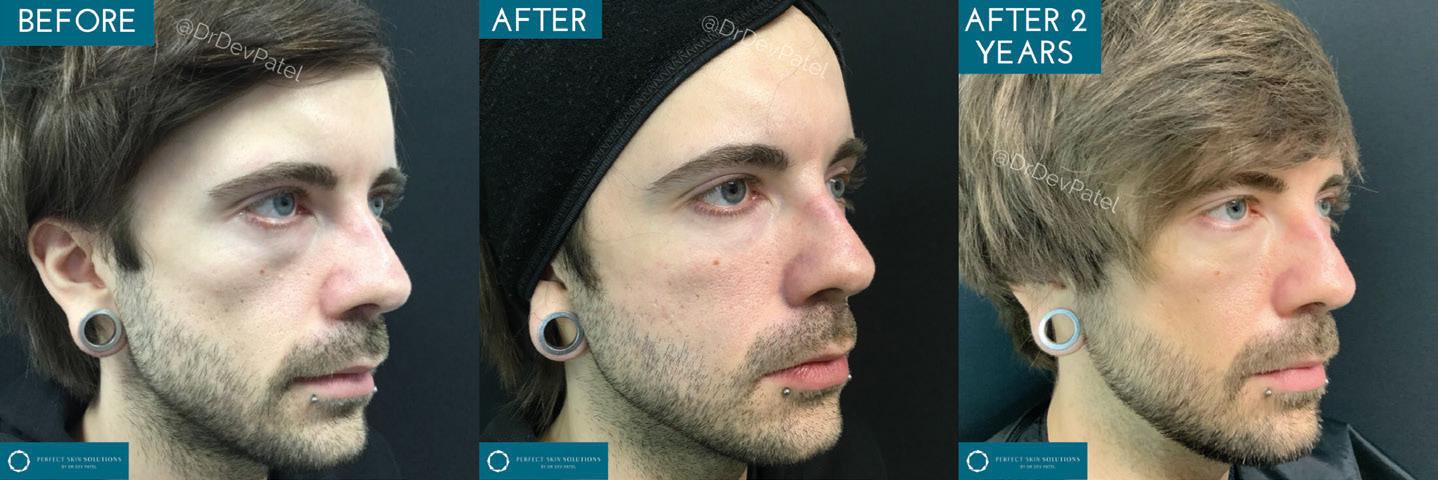

with skin texture as they are the lines themselves. She came in asking for filler, but my position was that she wasn’t really a suitable candidate for volumising in the classic sense.
There has been such a rapid advance in not only the knowledge we have of the ageing face but also facial anatomy. Yes, that’s right, the anatomy I was taught at medical school was not wholly accurate! Modern techniques of scanning with dyes
patients start to see happening quickly, usually days.
In the case shown here, a single treatment lasting 30 minutes was performed. A total of 3ml of RADIESSE® Plus6 was used with both needle and 22g cannula to achieve a 3D contour that reflected a healthier treated with this product. I am also
I chose to do a spot treatment using BELOTERO® Balance initially for the static lines combined with
There has been such a rapid advance in not only the knowledge we have of the ageing face but also facial anatomy. Yes, that’s right, the anatomy I was taught at medical school was not wholly accurate! Modern techniques of scanning with dyes have revealed sub-compartments, e.g. supportive fat pads, that we previously believed to be one continuous layer of fat.10 This has enabled us to broaden our insight into how we assess the face and where to inject it. The educated injector can thus take a much more holistic approach with dermal fillers, considering areas previously unconsidered by even the most expert of injectors, and indeed areas which most patients will still not ask to have treated. Examples being the temples, chin, forehead and pre-auricular area. The number one psychological
happier using RADIESSE® Plus6 in injector.
relatively new product. I’ve to use it, so I have been my patients up at three or see what’s happening, significant number of them are hard to put my finger on it, feel like everything just looks plumper.” The glycerol gives before the HA starts to kick more instant results keeps interested.
thing I like about BELOTERO® Revive is that you can Where someone’s got an particularly with a localised laxity, that’s just starting and it’s not really something fill or volumise. Having like BELOTERO® Revive up to be able to go and spot particularly useful because it to be a bit more flexible2 Study
42-year-old female patient to me complaining of lines and textural skin mainly in her lower medial cheek/lateral perioral region. These lines which are lateral cheek and extend to the region, are classically tricky they are as much to do
There has been such a rapid advance in not only the knowledge we have of the ageing face but also facial anatomy. Yes, that’s right, the anatomy I was taught at medical school was not wholly accurate! Modern techniques of scanning with dyes have revealed sub-compartments, e.g. supportive fat pads, that we previously believed to be one continuous layer of fat.10 This has enabled us to broaden our insight into how we assess the face and where to inject it. The educated injector can thus take a much more holistic approach with dermal fillers, considering areas previously unconsidered by even the most expert of injectors, and indeed areas which most patients will still not ask to have treated. Examples being the temples, chin, forehead and pre-auricular area. The number one psychological
have revealed sub-compartments, e.g. supportive fat pads, that we previously believed to be one continuous layer of fat.10 This has enabled us to broaden our insight into how we assess the face and where to inject it. The educated injector can thus take a much more holistic approach with dermal fillers, considering areas previously unconsidered by even the most expert of injectors, and indeed areas which most patients will still not ask to have treated. Examples being the temples, chin, forehead and pre-auricular area. The number one psychological hurdle for someone considering treatment is the
use a little bit of topical anaesthetic to make it more comfortable.
I use a 30-gauge needle and inject as superficially as I can. The 30-gauge needle is what comes as standard with BELOTERO® Revive, and I just inject it generally, covering all the areas that we’re worried about in terms of texture. You can also use a cannula to thread up and down the area. I prefer to use a needle because that’s the 5
needle, you’re going to realistically
We did the first treatment in May 2021. At this visit, I used BELOTERO®
Figure 1
raising a little bleb in terms of visual . It’s a straightforward treatment – a very similar technique to superficial blanching, which is a very
texture, feel and hyperpigmentation was noted throughout the treatment course. The patient was really pleased overall. What she wanted to achieve,
four weeks subsequently and a third Revive treatment four weeks after that2. We used a 1ml syringe to inject 0.5mls of Revive into this area of concern on each side. The treatment is generally well-tolerated, and I tend to
continue with it. The typical protocol with Revive, subsequent to your first three sessions, is that you get seven to nine months’ of longevity and then typically, you will need one to two booster sessions a year after that2,5 To maintain these results, we’d need
hurdle for someone considering treatment is the fear of looking unnatural after treatment. I am not surprised, considering that we rarely see natural results highlighted in the press. This does not make news. Trout pouts and over-puffed celebrity cheeks make news. If they are bombarded by these images, then, of course, our patients will have this fear. In the UK, many injectors are poorly equipped to appropriately treat, and thus many people can have their human-like features morphed into distinctly un-human and “alien-like” forms. However, we can demonstrate that with the intelligent use of highquality products and ensuring global harmony is maintained in the face, one can simply bring a degree of freshness back to the individual. As I have said before, if someone can tell my patient has had work done, I have failed.
treatment is the fear of looking unnatural after treatment. I am not surprised, considering that we rarely see natural results highlighted in the press. This does not make news. Trout pouts and over-puffed celebrity cheeks make news. If they are bombarded by these images, then, of course, our patients will have this fear. In the UK, many injectors are poorly equipped to appropriately treat, and thus many people can have their human-like features morphed into distinctly un-human and “alien-like” forms. However, we can demonstrate that with the intelligent use of highquality products and ensuring global harmony is maintained in the face, one can simply bring a degree of freshness back to the individual. As I have said before, if someone can tell my patient has had work done, I have failed.
fear of looking unnatural after treatment. I am not surprised, considering that we rarely see natural results highlighted in the press. This does not make news. Trout pouts and over-puffed celebrity cheeks make news. If they are bombarded by these images, then, of course, our patients will have this fear. In the UK, many injectors are poorly equipped to appropriately treat, and thus many people can have their human-like features morphed into distinctly un-human and ‘alien-like’ forms. However, we can demonstrate that with the intelligent use of high-quality products and ensuring global harmony is maintained in the face, one can simply bring a degree of freshness back to the individual. As I have said before, if someone can tell my patient has had work done, I have failed.
Figure 2
Figure 2
Dr Dev Patel is a KOL for InMode UK and Merz Innovation Partner and educator for Merz UK, and also trains on behalf of his training facility, Perfect Skin Academy. He has won more than seven awards, personally and on behalf of his clinic, Perfect Skin Solutions and recently launched his own skincare brand, CellDerma. He regularly speaks at major global conferences and has taught medical professionals in the US, China, and Norway.

Qual: BSc(Hons), MB BS, Dip IMC RCS(Ed), DFFP, Dip Prac Dermatology, MRCGP, DOccMed
to do BELOTERO® Balance twice a year and then just top with Revive once or twice a year. That’s what I would be aiming for.
Dr Chris Hutton MB BCH BAO (QUB) PGCert (AesMed Lon.) completed his undergraduate medical training at Queen’s University Belfast. He has undertaken postgraduate education in aesthetic medicine course at the Queen Mary University of London. He is a Merz Innovation Partner and has been published in a European medical journal.
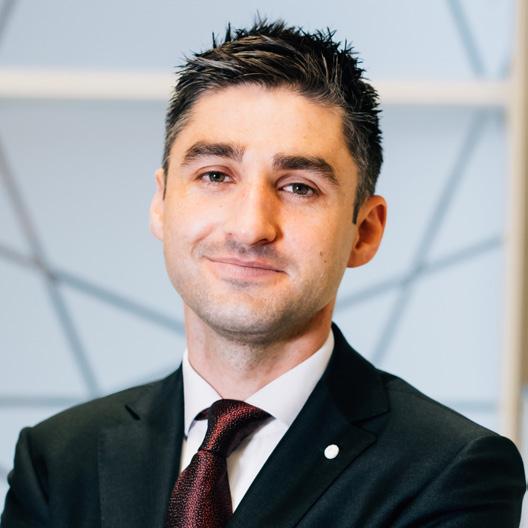
folds. Dermatol Surg. 2007;33(suppl 2):S144-S151. 5. Calcium hydroxylapatite versus nonanimal stabilized hyaluronic acid for the correction of nasolabial folds Dermatol Surg. 2008;34(2):210-215. 6. IFU RADIESSE® Plus 7. IFU RADIESSE® 8. Calcium hydroxylapatite filler for facial rejuvenation. Dermatol Surg. 2008;34(suppl 1):S64-S67. 9. A randomized, split-face, histomorphologic study comparing a volumetric calcium hydroxylapatite and a hyaluronic acid-based dermal filler. J Drugs Dermatol. 2014;13(9):47-52. 10. The Fat Compartments of the Face: Anatomy and Clinical Implications for Cosmetic Surgery. June 2007 - Volume 119 - Issue 7 - p 2219-2227 11. IFU BELOTERO® Balance
hydroxylapatite versus nonanimal stabilized hyaluronic acid for the correction of nasolabial folds Dermatol Surg. 2008;34(2):210-215. 6. IFU RADIESSE® Plus 7. IFU RADIESSE® 8. Calcium hydroxylapatite filler for facial rejuvenation. Dermatol Surg. 2008;34(suppl 1):S64-S67. 9. A randomized, split-face, histomorphologic study comparing a volumetric calcium hydroxylapatite and a hyaluronic acid-based dermal filler. J Drugs Dermatol. 2014;13(9):47-52. 10. The Fat Compartments of the Face: Anatomy and Clinical
you are a competent and experienced injector.
confidence M-RAD-UKI-0144 Date of Preparation October 2021 References:
Humans judge faces in incomplete photographs as physically more attractive. Sci Rep
2.
Adverse
reported. Reporting forms and information for United Kingdom can be found at www.mhra.gov.uk/yellowcard. Reporting forms and information for Republic of
can be found
Adverse events should also be reported to Merz Pharma UK Ltd by email to UKdrugsafety@merz.com or on +44 (0)
@merzaesthetics.uki merz-aesthetics.co.uk FOLLOW US ON OUR WEBSITE AND INSTAGRAM FOR THE LATEST NEWS
1.
10, 110 (2020). https://doi.org/10.1038/s41598-019-56437-4
Facial attractiveness: evolutionary based research. 2011 Jun 12; 366(1571): 1638–1659. 3. The carotenoid beta-carotene enhances facial color, attractiveness and perceived health, but not actual health, in humans. Behavioral Ecology, February 2017 4. A multicenter, randomized trial comparing calcium hydroxylapatite to two hyaluronic acids for treatment of nasolabial folds. Dermatol Surg. 2007;33(suppl 2):S144-S151. 5. Calcium
Implications for Cosmetic Surgery. June 2007 - Volume 119 - Issue 7 - p 2219-2227 11. IFU BELOTERO® Balance
events should be
Ireland
at https://www.hpra.ie/homepage/about-us/report-an-issue/mdiur.
333 200 4143.
confidence M-RAD-UKI-0144 Date of Preparation October 2021 References: 1. Humans judge faces in incomplete photographs as physically more attractive. Sci Rep 10, 110 (2020). https://doi.org/10.1038/s41598-019-56437-4 2. Facial attractiveness: evolutionary based research. 2011 Jun 12; 366(1571): 1638–1659. 3. The carotenoid beta-carotene enhances facial color, attractiveness and perceived health, but not actual health, in humans. Behavioral Ecology, February 2017 4. A multicenter, randomized trial comparing calcium hydroxylapatite to two hyaluronic acids for treatment of nasolabial
can be
Adverse
reported to
Ltd by
to
or on
@merzaesthetics.uki merz-aesthetics.co.uk FOLLOW US ON OUR WEBSITE AND INSTAGRAM FOR THE LATEST NEWS
Adverse events should be reported. Reporting forms and information for United Kingdom can be found at www.mhra.gov.uk/yellowcard. Reporting forms and information for Republic of Ireland
found at https://www.hpra.ie/homepage/about-us/report-an-issue/mdiur.
events should also be
Merz Pharma UK
email
UKdrugsafety@merz.com
+44 (0) 333 200 4143.
This advertorial is sponsored by Merz Aesthetics UK & Ireland
confidence to M-BEL-UKI-1231 Date of Preparation August 2021 References: 1. Merz Aesthetics, (n.d) Merz Data on File (DOF) BEL-DOF-011_01 REF-0922 2. BELOTERO® Revive IFU 3. Fluhr 2008 - Glycerol and the skin holistic approach to its origin and functions 4. BELOTERO® Balance IFU 5. BELOVE1 Adverse events should be reported. Reporting forms and information for United Kingdom can be found at www.mhra.gov.uk/yellowcard. Reporting forms and information for Republic of Ireland can be found at https://www.hpra.ie/homepage/about-us/report-an-issue/mdiur. Adverse events should also be reported to Merz Pharma UK Ltd by email to UKdrugsafety@merz.com or on +44 (0) 333 200 4143. For more information on educational content go to
TAILORED TO YOU, POWERED BY ECADEMY.
www.merz-aesthetics.co.uk/ecademy Before After AESTHETICS EDUCATION.
Figure 2 Figure 2
M-RAD-UKI-0145 Date of Preparation October 2021 Aesthetics | November 2021 39 @aestheticsgroup @aestheticsjournaluk Aesthetics aestheticsjournal.com Advertorial Merz Aesthetics
Figure 1: Patient before, after and two years after treatment
Understanding Pregnancy and Skincare
experience or studies in humans.6 There is currently no controlled data in human pregnancy, however population-based data from the Hungarian Case-Control Surveillance of Congenital Abnormalities revealed that of 18,515 women who had infants with congenital abnormalities, 0.3% were treated with this drug, showing a marginally statistically significant association with malformations and use of doxycycline anytime during pregnancy.7
Dr
Galyna Selezneva
shares information about skincare do’s and don’ts for perinatal patients
Many women understandably want to carry on with their skincare and aesthetic treatment plans whilst pregnant or breastfeeding. However, due to lack of evidence and research in this area the current guidance is to advise patients to stop. This article explores the reasons behind the guidelines and what regimes you can recommend to pre and postnatal mothers.
Skin changes during pregnancy
Hormonal acne, skin sensitivity, dry skin, rosacea, and melasma (often called the ‘mask of pregnancy’) are all skin conditions pregnant women can experience due to a shift in hormones and an increase in blood volume which occur to protect and grow the foetus. According to one study of 124 women, 91.1% of pregnant women had abnormalities in the skin during their gestational period.1
It is in general agreement that no beauty, skincare, or aesthetic remedies are to be performed in prenatal or breastfeeding women, and that patients should stop these practices whilst trying to conceive. However, dermatologists and aesthetic doctors with special interest in perinatal treatments may recommend plans in severe cases (this particularly applies to acne prevention). The information about what skincare is and isn’t safe to use whilst pregnant (or breastfeeding) is currently confusing, not only for patients but for health professionals working in the field too. Understandably, because of concerns over safety for the foetus and the impact skincare ingredients (such as retinoids) may have on the baby once born, there has been little research into side effects of perinatal skincare routines. The only information available comes from animal studies.2
Ingredients to avoid
The ingredients found in skincare products that have been highlighted as a risk to expectant mothers, and therefore should be avoided in practice, are:
Hydroquinone
An organic compound (a type of phenol) that is used for whitening and brightening skin. Whilst the ingredient won’t harm the foetus, it can cause harm and reactions to the skin of a woman which becomes more sensitive when pregnant and breastfeeding.3
Retinoids
Also known as retinoic acid or vitamin A acid, and other topical retinoids like tretinoin, tazarotene, adapalene and oral isotretinoin, are often used to alleviate serious acne breakouts. These are completely off-limits when pregnant and breastfeeding as they can be absorbed through the skin and into breast milk and make their way into the mother’s and baby’s bloodstream.4 Studies have shown that an excess of vitamin A can affect embryonic development and result in teratogenesis, or the product of birth defects in a developing embryo.5 Malformations can occur to the skull, face, limbs, eyes and central nervous system of a foetus. Other risks are miscarriage and premature delivery.4
Doxycycline
An antibiotic used to treat skin infections and rosacea, it is listed in pregnancy category D by the US Food and Drug Administration (FDA). This means there’s positive evidence of human foetal risk based on adverse reaction data from investigational or marketing
Benzoyl peroxide
Is an antiseptic that reduces bacteria on the surface of the skin and is used to treat acne. Some practitioners say it’s safe to use in small doses, however as there is no scientific evidence to prove this information, the general recommendation is best to avoid it until after gestation.6 The imposed risks will however be less for breastfeeding mothers, as long as the ingredient is not used on the chest area and doesn’t come into contact with the baby.7
Oxybenzone
An organic compound that’s used as a chemical filter in sunscreens to slow the absorption of harmful UVA and UVB rays by human skin. The US FDA is currently researching the possibilities of the compound being a carcinogen and endocrine disruptor, which has also been linked to Hirschsprung’s Disease, a birth defect that can be life-threatening.8
Formaldehyde
A pungent-smelling colourless gas that can be used as a preservative in cosmetic products. Exposure to the compound has been proven to increase risks of defects ranging from birth malformations to spontaneous abortions.9
Spironolactone
A medication that contains anti-androgen activity and is used to treat acne. Because of the anti-androgenic properties preventing androgens like testosterone and dihydrotestosterone (DHT) from mediating their biological effects on the body, there’s a potential risk of defects to a male foetus, which requires a certain level of testosterone to develop properly.10,11
Ingredients for desired results
Despite the many skincare treatments and ingredients that should be avoided in pregnancy, there are plenty of other regimes and remedies that can be
@aestheticsgroup @aestheticsjournaluk Aesthetics aestheticsjournal.com Reproduced from Aesthetics | Volume 8/Issue 12 - November 2021
provided in practice and produce desired results. Ingredients widely used in topical formulations that are deemed to be safe for perinatal women are:
• Hyaluronic acid: used for antiageing and hydrating skin. This ingredient is naturally found in our bodies and works well for all skin types.12
• Mild concentration of vitamin C: can help patients with melasma. It is recommended to apply sunscreen on top of the vitamin C serum.13
• Some polyhydroxy acids (PHAs): such as succinic acid, salicylic acid and gluconolactone are ideal for exfoliation and hydration. PHAs function similarly to other natural chemical exfoliants without irritation responses. PHAs large molecule size means they exfoliate at surface level and don’t penetrate skin too deeply, resulting in PHAs being a gentler alternative to alpha-hydroxy acids (AHAs) and beta hydroxy acids (BHAs).14
It’s advised to make patients aware that everything they use on their skin during pregnancy has the potential to cross into the placenta and developing foetus. Therefore, whilst there are skincare ingredients that are safe for perinatal patients, it’s important they follow their consultant’s advice of how much and how often they use skincare products to ensure they are not overused.
Recommendations
Taking into account safe and non-safe ingredients perinatal women can use in their skincare routines, here are my recommendations health professionals can give patients.
Hormonal acne
Acne during pregnancy is most common during the first and second trimesters.14 An increase in hormones (androgens) can cause glands to grow and produce more sebum. Sebum (an oily substance) clogs pores and may lead to bacteria, inflammation and breakouts. Many effective acne treatments use ingredients, such as retinoids, that pose high risks to pregnant women. This is why antibiotic treatments are commonly used for prenatal patients with severe acne, however it’s advised to stop this treatment by week 15 of pregnancy.14 In my view, one of the safest forms of treatment for acne is using a gentle gel-based face cleanser morning and night, but patients should avoid over washing
and double-cleansing as I’ve found the skin can be more sensitive whilst pregnant. The cleansing regime should be followed by an oil-free moisturiser which helps keep skin clear and prevents it producing too much oil. Diet can also affect hormones which in turn can make acne worse. Foods with a high sugar content spark a rise in insulin levels, causing oil glands to produce more oil, increasing the chances of acne. Practitioners should advise their patients to eat nutritious foods and drink plenty of water, to ensure insulin levels remain stable.15
Rosacea
Treatment for rosacea during pregnancy presents a significant challenge as many effective treatments are contraindicated or have limited evidence regarding adverse foetal effects. Light-based therapies with low-fluence lasers have been shown to have positive results. A study reported a case of safe laser therapy to treat severe acne in a woman at six weeks gestation. One patient was treated with 10 weekly sessions of low-fluence, 1,064 nm Nd:YAG laser using 400 to 800 pulses per session. In this case there was complete clearance of active inflammatory lesions and no reported pregnancy-related complications.16 However, it must be noted that it is not advised to try new treatments in prenatal.
Melasma
Between 50-70% of women will develop some form of melasma during pregnancy.17 As treatments for ‘the mask of pregnancy’ use ingredients thought to be unsafe, some experts recommend prevention rather than cure. Melasma is a cosmetic condition and does not affect the baby or mother in any way, and the most effective, and safest, remedies include avoiding direct sunlight exposure and using a pregnancy safe 30+ sunscreen, as the sun may trigger further development of more pigment. Pregnancy safe sunscreens have mineral based ingredients like zinc oxide and titanium dioxide. These ingredients sit on the surface of the skin and act as a physical barrier against the sun’s rays.14 You should only address melasma after breastfeeding has stopped.
Stretch marks
Stretch marks are a common concern for pregnant women and vary in quantity and severity, frequently affecting the abdomen, breast, and thighs. A study of 773 women, published in BMC Pregnancy and Childbirth, found 78.2% of prenatal respondents
used a product to prevent or reduce the development of stretch marks during their pregnancy.18 Unfortunately, the study was unable to find high-quality evidence on the effectiveness of stretch mark products being used, such as mineral oil, cocoa butter and olive oil. Recommended advice includes trying to control rapid weight gain as stretch marks appear when the dermis becomes stretched and broken in places.19 Although, it’s important to note that perinatal women should not diet to lose weight whilst pregnant and should focus on having a healthy and balanced diet.20
Keep your patients safe
Research into skincare side effects for perinatal mothers is an extremely under-resourced area. To date, there is very little scientific evidence and health professionals more than often play it safe by advising against all types of treatments. Until more research has been conducted in this area, practitioners can simply continue to go by general guidelines and recommendations based on past experience. The new, innovative approach to skincare is seeing practitioners recommending a personalised skincare blend to meet a patient’s individual needs. In the case of perinatal skincare this avoids all confusion and simplifies treatment in a safe and effective way. In essence, you should check every ingredient on every product prescribed or recommended to ensure there are no substances, especially hidden ones, that can cause harm to mothersto-be and their babies.
Dr Galyna Selezneva is an aesthetic practitioner currently practicing at the Dr Rita Rakus clinic, London. She is a specialist in non-invasive procedures for face and body and uses the latest technology including energy devices and laser treatments. Dr Selezneva has a Master’s degree in both psychiatry and economics and studied in the US and UK.
Qual: MB ChB, MMed, MSc, MRCPsych

VIEW THE REFERENCES ONLINE! WWW.AESTHETICSJOURNAL.COM @aestheticsgroup @aestheticsjournaluk Aesthetics aestheticsjournal.com Reproduced from Aesthetics | Volume 8/Issue 12 - November 2021

Activate Your Skin THE ORIGINAL BIOSTIMULATOR UKI-SCU-2100070 DOP O ctober 2021 Adverse events should be reported. For the UK, Reporting forms and information can be found at www.mhra.gov.uk/yellowcard or search for Yellow Card in the Google Play or Apple App Store. For Ireland, Suspected adverse events can be reported via HPRA Pharmacovigilance, Website: www.hpra.ie; Adverse events should also be reported to Galderma (UK) Ltd, Email: Medinfo.uk@galderma.com Tel: +44 (0) 1923 208950
Exploring Peptides in Skincare
Dr Dev Patel provides an introduction to the role of peptides in skincare

‘Peptides’ is a commonly used term by aesthetic industry professionals, but is also well recognised by the ‘skingeek’ consumer, ever-seeking the latest ingredient to reverse the signs of ageing. Here, we take a journey into peptides and their application in cosmetic dermatology.
What are peptides?
Peptides are essentially small pieces of protein. In fact, the term comes from the Greek term pepton peptos, which means digested.1 They are chains (polymers) of amino acids – the building blocks of proteins – and, if you link two amino acids together, you have a ‘dipeptide’, three amino acids resulting in a ‘tripeptide’, then a ‘tetrapeptide’ and so on. Peptides typically consist of less than 50 amino acids. ‘Oligopeptides’ have less than 20 amino acids. The term ‘protein’ is used for larger chains, and these may contain ‘polypeptides’, a long chain of peptides joined together.2 Naturally occurring human peptides are key in cell-to-cell communication, for example, protein regulation, cell migration and proliferation, inflammation, melanogenesis and angiogenesis, resulting in a wide variety of physiological
processes including immunity, stress, growth, homeostasis and reproduction.1 Peptides may be either natural protein fragments –due to enzymatic or acid hydrolysis – and thus of undefined fragment size, or synthetic peptides. The former is not consistent in the end product, whereas synthetic peptides are. Around 1,400 synthetic peptides are listed in the International Nomenclature of Cosmetic Ingredients (INCI) database directory, although only a few have widespread use and recognition.3
100 years of peptides
The first peptides were described by chemist Emil Fischer and scientist Franz Hofmeister in the early 1800s and the first peptide synthesis was published in 1901 by chemists Emil Fischer and Ernest Fourneau.4 Fischer went on to describe dipeptides, tripeptides and polypeptides.
It was exactly a century ago, in 1921, that glutathione – a potent, naturally occurring intracellular antioxidant – was named and suggested as a peptide by biochemist Frederick Gowland-Hopkins. It was first discovered by physician J. de Rey-Paihade in 1888 from extracts of yeast and various
animal tissue; then named philothion. By 1929, Hopkins had proposed the correct tripeptide structure of cysteine-glutamate-glycine which was later confirmed by a number of scientists.5 Glutathione is commonly found in skincare products today, especially those aiming at skin-brightening. Interestingly, it was in the same year (1921) that physicians Frederick G. Banting and Charles Best reported their discovery of insulin to the American Physiological Society, a discovery that would go on to improve the quality of life for millions of people with diabetes and continues to do so to this current day.6 In 1955, British biochemist Frederick Sanger successfully sequenced bovine insulin and discover its exact amino acid composition, which later won him the Nobel Prize for Chemistry.7 Other important peptide discoveries include oxytocin, angiotensin and growth hormone.8
Within the skincare realm, various natural peptides have been identified and synthetic ones formulated, with everincreasing knowledge of their function. Copper glycine-histidine-lysine (Cu-GHK) was developed in 1973 by biochemist Loren Packard, and by the late 1980s the first copper peptide was formulated into a skincare product. However, it took until 2000 for the most significant turning point to happen, when palmitoyl pentapeptide-4 was introduced under the brand name Matrixyl. Over the last 20 years, numerous short and stable synthetic peptides have been developed, demonstrating a role in extracellular matrix synthesis, pigmentation, innate immunity and inflammation.1
Benefits of peptides in skincare
Peptides are not limited to cosmetic dermatology as the aforementioned discoveries indicate. In fact, their application in medical dermatology predates their cosmetic use. Pimecrolimus and tacrolimus, two widely used immune-modulators, indicated for atopic dermatitis, are both ‘peptides’.
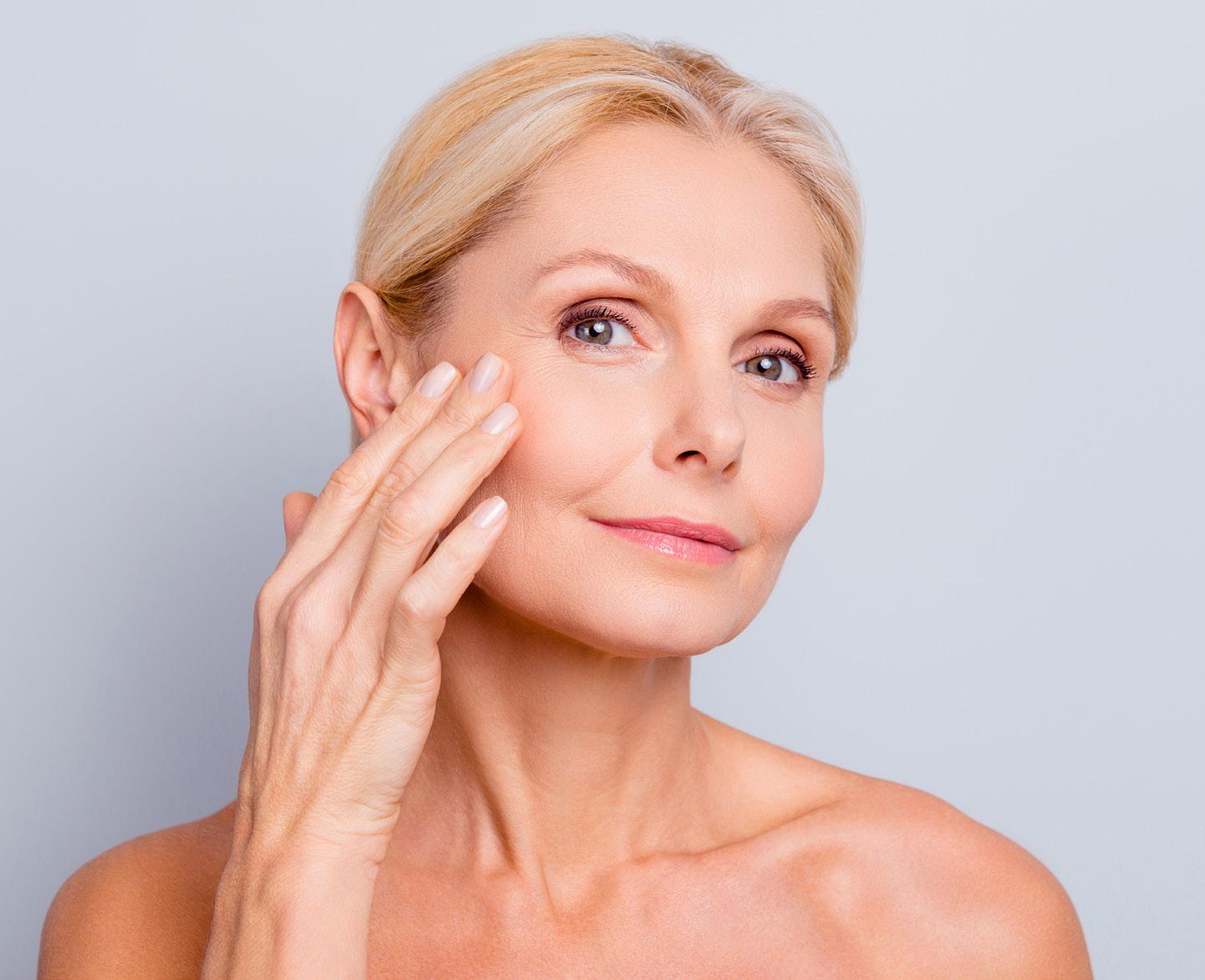
Peptides can fulfil a variety of functions in cosmetic dermatology. Most activities are centred on:8
• Tissue repair (wrinkle reduction, firming, stretch marks, puffy eyes)
• Botulinum toxin-A-like activity to prevent and smooth wrinkles
• Skin whitening and tanning
• Slowing hair loss
• Anti-inflammatory activity (soothing)
• Anti-microbial action
@aestheticsgroup @aestheticsjournaluk Aesthetics aestheticsjournal.com Reproduced from Aesthetics | Volume 8/Issue 12 - November 2021
Mode of action
As proteins, peptides play a whole host of vital functions in the body. A key limiting factor when used topically is their permeability. In part, this is influenced by physiochemical properties of the peptide, for example, acid-dissociation constant (pKa), molecular size, stability, binding affinity, and solubility.8 Thus, putting a bunch of peptides into a jar and hoping they will induce biological antiageing is not realistic. The individual peptides and the properties of the final collective formulation must fulfil a long list of chemical criteria to ensure the product will deliver what it claims to. Peptides by nature are not good candidates for diffusing through the stratum corneum (uppermost layer of the epidermis) which is lipophilic, consisting of only 13% water.8 Small molecules lacking in hydrogenbinding groups exhibit the highest degree of diffusion. Peptides often contain many amide bonds (as hydrogen bond donor and acceptor groups) and may be larger in size. Furthermore, at physiological pH they are often charged, making them hydrophilic –not ideal with a lipophilic stratum corneum to cross.8 However, numerous studies have demonstrated adequate diffusion to affect a biological action. Pimecrolimus has
relatively poor diffusion but nevertheless manages to be an effective treatment for atopic dermatitis and is a topical drug I often prescribe in my skin clinic.8 Methods applied to improve depth of delivery of peptides include:8
• Penetration enhancers (glycols, surfactants)
• Delivery vehicles (liposomes, nanopeptides)
• Chemical modifications such as palmitoylation – this is adding a fatty acid chain which can increase penetration by up to 1,000 times through the stratum corneum
Signal peptides
These act as hormones or messengers. In vivo, inflammation triggers proteases and other enzymes to break down collagen, fibronectin, hyaluronic acid and other substances. These resulting smaller strands/fragments (matrikines) then act as hormones or messengers to stimulate fibroblasts and other cells as part of a response of repair and regeneration.1 Matrikines are capable of regulating cell activities by interacting with their specific receptors. They activate certain genes
involved in the process of extracellular matrix renewal and cell proliferation. These mechanisms become weaker and weaker with age. Signal peptides stimulate production of extracellular matrix (ECM) proteins including collagen, fibronectin, elastin, and proteoglycans, by communicating with specific cells such as fibroblasts. These proteins are key to the structural integrity and hydration of our skin cells, and by upregulating their production, signal peptides can deliver firmer, tighter and brighter skin. One of the original signal peptides used in skincare is discussed below.8
KTTKS and Matrixyl
In 1993, Katayama et al. showed that lysine-threonine-threonine-lysine-serine (KTTKS) is the smallest natural fragment (of collagen 1) that has collagen-stimulating potential.9 Seven years later, Matrixyl was developed as a synthetic replica of this pentapeptide structure. It is a small, highly specific biologically active peptide, shown to stimulate production of ECM proteins (including collagen Types I, III and IV), support of the ECM matrix and wound healing. A number of placebo-controlled, double-blind randomised studies (some biopsy-based) have demonstrated the ability of pal-KTTKS to reduce fold depth and thickness and skin rigidity as well improving other skin quality parameters.10-13 Furthermore, no risk of irritation, sensitisation, mutagenicity or acute toxicity was identified.
Carrier peptides
Carrier peptides facilitate delivery of key trace elements (e.g. copper and manganese) essential for wound healing and other enzymatic processes. Certain carrier peptides have also been developed which accelerate and facilitate delivery of bioactive molecules into the skin.14 In a double-blind randomised controlled trial consisting of 67 subjects using glycyl-l-histidyl-l-lysine (Cu-GHK) or placebo twice daily for 12 weeks,
Type of peptide Mechanism of antiageing Examples Signal peptides They activate certain genes involved in the process of extracellular matrix renewal and cell proliferation, thereby increasing ECM proteins and glycosaminoglycans (GAGs) e.g. collagen, elastin, fibronectin, laminin
Carrier peptides Improve dermal delivery of trace elements essential for enzymatic processes (wound healing)
peptide-GHK
tripeptide-1 Neurotransmitter-inhibiting peptides To reduce contraction of facial muscles of expression and thus wrinkles
Enzyme inhibitor peptides Inhibit enzymes related to ageing process
rice oligopeptides
peptide Table 1: Classification of peptides with antiageing molecular modes of action1,8
natural peptides have been identified and synthetic ones formulated, with ever-increasing knowledge of their function @aestheticsgroup @aestheticsjournaluk Aesthetics aestheticsjournal.com Reproduced from Aesthetics | Volume 8/Issue 12 - November 2021
Palmitoyl Tripeptide-1 Palmitoyl Tetrapeptide-7
Copper
Manganese
Acetyl octapeptide-3 Pentapeptide-18
Black
Soybean
Various
Cu-GHK showed impressive results over the placebo group. Cu-GHK improved skin laxity, clarity and appearance, lines and wrinkles, and mottled hyperpigmentation, as well as skin density and thickness.15 Several other studies confirming the beneficial actions of Cu-GHK have been performed. These actions include increasing keratinocyte proliferation, improving appearance, firmness, elasticity, skin thickness, wrinkles, spotty hyperpigmentation and light damage, skin collagen, strengthening proteins of skin protection barrier, and improvement of skin appearance.1,16
Neuropeptides
Neurotransmitter inhibitor peptides (neuropeptides) are peptides that act in the brain (reducing pain, inducing happiness, inducing sleep, suppressing appetite) but many can also be found in the skin, for example, neurotensin, substance P, encephalin, beta-Endorphin, alpha-MSH.10 So how can these be applied in aesthetic medicine? The muscles of facial expression, especially in the upper face, are a key contributor to the formation of lines and wrinkles in this area, such as periorbital lines. Nerves signal muscles to contract via the neurotransmitter aetylcholine (ACh). Botulinum toxin-A (BoNT-A) is a well-established cosmetic treatment for the prevention and treatment of lines and wrinkles of the upper face. BoNT-A cleaves SNAP-25 – a critical protein for ACh release – thus ultimately resulting in muscle relaxation. Topical synthetic peptides which can inhibit neurotransmitter release have been identified. These cosmeceutical peptides penetrate skin and relax muscles, causing the reduction and softening of wrinkles and fine lines.1
Acetyl-hexapeptide-3
Acetyl-hexapeptide-3 (also known as Argireline) is a synthetic peptide which imitates the N-terminal end of the SNAP-25 protein and thus inhibits SNARE complex formation and catecholamine release. Inhibition of noradrenaline and adrenaline release has also been demonstrated. In one of many studies, Argireline was shown to reduce wrinkles by 30% vs. 10% in placebo in just four weeks.17 Later, a two amino acid addition produced acetyl-octapeptide-3 (SNAP-8) which has a superior action on wrinkles compared to its predecessor.17
Enzyme inhibitor peptides
These directly or indirectly inhibit an enzyme. Rice peptides, for example, inhibit matrix
metalloproteinase (MMP) activity. Although important in tissue remodelling, MMPs degrade the ECM and their upregulation accelerates ageing and cancer. Soybean peptides extracted from soybean seeds, inhibit the formation of proteinases.18 A small pseudo-randomised study of just 10 women (in vivo/in vitro) with soybean peptide, showed a significant increase in glycosaminoglycan and collagen synthesis.19
Although this and other small studies1 have shown potential antiageing benefits, larger studies are required as well as more in vivo trials to better demonstrate the relevance and potential of these peptides in skincare formulations. Although, so far, their role looks to be very promising.
What are growth factors?
Growth factors are naturally occurring proteins (polypeptides) or hormones, capable of stimulating cell proliferation or differentiation and potentiating wound healing. Growth factors are important for regulating a variety of cellular processes. In skincare, both naturally derived and synthetic growth factors have been used with powerful effects. The best known is epidermal growth factor (EGF) or Oligopeptide-1, which promotes the proliferation of mesenchymal, glial and epithelial cells. I use topical growth factors extensively in my clinical practice.20 The scope and potential of growth factors in dermatology is significant and goes beyond the scope of this article.
Effective antiageing formulas
The use of peptides in cosmetic dermatology has been well established over the last two decades. The most commonly applied peptides are signalling/messenger peptides which primarily strengthen the extracellular matrix, and neurotransmitterinhibitor peptides which prevent and treat expression lines through muscle relaxation. Numerous placebo-controlled, double-blind, randomised controlled trials have supported the claims of efficacy of these peptides for antiageing purposes. As practitioners, the most important issue we must remain aware of is that peptides are inherently poor diffusers of the stratum corneum. Only formulations with effective molecular delivery technology, will allow these peptides to perform their desired biological action, which if achieved, offers your patients a very safe and clinically effective option for attaining healthier skin.
Dr Dev Patel is a KOL for InMode UK and a Merz Innovation Partner and educator for Merz UK, and also trains on behalf of his training facility, Perfect Skin Academy. He has won more than seven awards, personally and on behalf of his clinic, Perfect Skin Solutions and recently launched his own skincare brand, CellDerma. He regularly speaks at major global conferences and has taught medical professionals in the US, China, and Norway.

Qual: BSc(Hons), MB BS, Dip IMC RCS(Ed), DFFP, Dip Prac Dermatology, MRCGP, DOccMed
REFERENCES
1. Schagen S.K. “Topical peptide treatments with effective antiaging results.” Cosmetics 2017
2. The University of Queensland, Australia. Explainer: Peptides Vs proteins – what’s the difference. Nov 2017. <https://imb. uq.edu.au/article/2017/11/explainer-peptides-vs-proteins-whatsdifference>
3. Personal Care Records Council, International Nomenclature Cosmetic Ingredient, <https://www.personalcarecouncil.org/ resources/inci>
4. Fischer E, Fourneau E. “Ueber einige derivate des Glykolls” Eur. J. Inorg. Chem, (34) 2868-2867, 1901.
5. Amer et al. Profiles of Drug Substances, Excipients and Related Methodology, 2015.
6. Banting F.G, Best C.H et al., “The internal secretion of the pancreas,” December, 1921
7. Vecchio et al. The discovery of insulin: An important milestone in the history of medicine, Front Endocrinol (Lausanne), (9): 613, 2018
8. Gorouhi F, Maibach H.I. “Role of topical peptides in preventing or treating aged skin”, International Journal of Cosmetic Science, 2009, 31, 327–345, 2009.
9. Katayama K, et al., “A pentapeptide from Type I procollagen promotes extracellular matrix production”, The Journal of Biological Chemistry, Vol 268, 14(15), Issue of May 15, 9941-9944, 1993.
10. Lintner, K. “Cosmetic or Dermo Pharmaceutical Use of Peptides for Healing, Hydrating and Improving Skin Appearances during Natural or Induced Ageing (Heloderma, Pollution)”, US Pattent 6(620) 419, September 2003.
11. Kaczvinsky, J.R.; Griffiths, et al., “Efficacy of anti-aging products for periorbital wrinkles as measured by 3-D imaging”, J. Cosmet. Dermatol. 2009, (8) 228–233, 2009.
12. Robinson, L.R. Fitzgerald, et al., “Topical palmitoyl pentapeptide provides improvement in photoaged human facial skin, Int. J. Cosmet. Sci, (27) 155–160, 2005.
13. Mondon, P., Hillion, M, et al., “Evaluation of dermal extracellular matrix and epidermal-dermal junction modifications using matrix-assisted laser desorption/ionization mass spectrometric imaging, in vivo reflectance confocal microscopy, echography, and histology: Effect of age and peptides”, J. Cosmet. Dermatol, (14) 152-160,2015.
14. Snyder, E.L. and Dowdy, S.F., “Recent advances in the use of protein transduction domains for the delivery of peptides, proteins and nucleic acids in vivo”, Expert Opin. Drug Deliv, (2) 43–51, 2005.
15. Finkey, M.B., Appa, Y., et al., “Copper peptide and skin. In: Cosmeceuticals and Active Cosmetics”, Marcel Dekker, New York, 549-564, 2005.
16. Pickart, L., Vasquez-Soltero, et al., “GHK Peptide as a Natural Modulator of Multiple Cellular Pathways in Skin Regeneration”, BioMed Res. Int. 2015.
17. Blanes-Mira, C., Clemente, J., et al., “A synthetic hexapeptide (Argireline) with antiwrinkle activity”, Int. J. Cosmet. Sci, (24), 303–310, 2002.
18. Rull, M., Davi. C, et al., “Peptide Approach to Enhance Antiwrinkle Efficacy Between Injections”, Cosmetics and Toiletries, 2014
19. Andre-Frei, V. Perrier, et al., “A comparison of biological activities of a new soya biopeptide studied in an in vitro skin equivalent model and human volunteers” Int. J. Cosmet. Sci, (21), 299–311, 1999.
20. C. Aldag, D. Teixeira, et al., “Skin rejuvenation using cosmetic products containing growth factors, cytokines and matrikines: a review of the literature, Clin Cosmet Investig Dermatol, (9), 411-419, 2016.
@aestheticsgroup @aestheticsjournaluk Aesthetics aestheticsjournal.com Reproduced from Aesthetics | Volume 8/Issue 12 - November 2021
Optimising Botulinum Toxin in the Upper Face
injection points have been suggested.1,2,6,7,14 The choice should be made based on the profile of the patient, whether a symmetrical pattern is more appropriate than an asymmetrical, depending on the number and pattern of rhytids in the forehead.1,2,6,7,14
The majority of practitioners in aesthetic medicine use botulinum toxin (BoNT-A) when rejuvenating the upper face. In fact, around three-quarters of practitioners use BoNT-A alone in this area with others using it in combination with hyaluronic acid (HA) fillers.1,2 The efficacy and safety of BoNT-A in treating lines in the upper face – forehead, glabellar and lateral canthus lines – is well established.3-5 It is also commonly used in elevating and shaping the eyebrows and in the reduction of hooding.2,6 It has been suggested by one author at least, that treating the lines and features of the upper face has become a particular focus during the pandemic over the past two years. Face mask use obscures the lower face, making the expressive communication of the upper face even more significant.7
Whether you are experienced or newly qualified, it is important to ensure that we offer our patients the best outcomes from the use of BoNT-A in the upper face. This article gives a brief overview of how we optimise rejuvenation in this area, looking at optimal dosing, needle placement and injection technique whilst minimising the risk of unwanted adverse effects. While unwanted effects seldom occur and are usually mild and transient,8 practitioners nonetheless need to know how to respond to them.
Prior to the first injection
Optimal treatment begins the moment that the patient arrives in the practitioner’s office. During the initial consultation, information must be provided so that the patient understands both the procedure, and what outcomes are realistic.9 The patient’s treatment goals should be discussed, and an appropriate treatment plan should be put in place.1
A thorough assessment of the patient’s physiognomy is a vital first step. This includes skin elasticity, expressivity, asymmetry and muscle strength as well as the position of the eyebrows, the height of the forehead, the pattern of glabellar, forehead or lateral canthal lines, and whether the lines are static or dynamic.2,6,7,10 Age, ethnicity and gender will also affect treatment choices.6,11,12 Once the practitioner has a full picture, they can select an appropriate dose, number and location of injection points and injection technique.
Injection technique
The recommended dose ranges are suitable for most patients but should be individualised, taking into account the assessment as described above.2 In the treatment of lateral canthal lines, for example, clinical trials have shown that a total dose of 24U (units) of inco- or onabotulinumtoxin A is effective, consisting of 4U injections but it is important to note that a total dose as low as 4U across all injection points might be appropriate in some patients: consider older patients with reduced muscle mass or lower doses in the inferior lateral orbicularis oculi.1,10 Similarly, for the treatment of forehead lines, the average total dose is 10U of inco- or onabotulinumtoxin A.2 The range of total typical doses, however, runs from 8U to 25U, with a recommended range of one to 4U per injection and even 0.5U at two optional injection sites.1,2,6,7 For glabella lines, the total recommended dose range for inco- or onabotulinumtoxin A is from 12U to 40U with individual doses ranging from 1U to 10U depending on the location and interplay between the different muscles.7,13 In the UK onabotulinium A has regulatory approval for treating the upper face under the brand name Botox, incobotulinium A under the brand name Bocouture and abobotulnium A under the brand name Azzalure.14-16 Note that doses of abobotulinumtoxin A differs from those for inco- or onabotulinumtoxin A.6,9 A conversion ratio of 1:2.5 (inco/onabotulinumtoix A: abobotulinumtoxin A) has been suggested, however, the summary of product characteristics for each product should be checked before use.6, 14-16 Accommodating individual variation can also be done by selecting appropriate injection point patterns for the key areas of the upper face.2,6,7,10 For forehead lines, between two and 11
For lateral canthal lines, patterns of injection should correspond to the pattern of the lines that fan into the superior malar area, the lateral third of the brow, into both or neither.10 Similarly, five patterns of glabella contraction with corresponding doses and position of injections have been described.13,15 These support an individualised rather than generic approach to the injection of BoNT-A in the upper face. The muscle contraction of the individual patient should be studied carefully in order to find the most appropriate model with further modification if needed.13
Injection technique, including appropriate needle size, angle of administration and depth of insertion, should also be selected to deliver the toxin to the required area while minimising risk of unwanted effects.2,6,7 For example, in the treatment of the forehead and lateral canthal lines, insertion of the needle to a third of its depth is advised whereas in the glabella, deeper insertion is recommended in some muscles.2
Addressing the common adverse effects
The ‘frozen’ look
Over-injection of botulinum toxin or toxin given in inappropriate injection points in the frontalis can result in a ‘frozen’ appearance.2 Due to the fact that the frontalis muscle raises the eyebrows which are used to express emotions such as delight, suspicion and surprise, the ‘freezing’ of the forehead can inhibit facial expressions.2,6,7,11,12 ‘Frozen’ features due to over-injection are temporary and will resolve as the effects of the botulinum toxin wear off.9 However, the experience can be distressing for patients and prevention of this effect should be a priority for practitioners.13 Careful assessment of the patient’s face before injecting is of primary importance. Assess whether facial lines are dynamic or static in nature as well as the degree of severity. A 2020 review demonstrated that BoNT-A can be effective even in moderate to severe dynamic and static lines but patients with deeper static lines on the forehead may need a combination treatment of BoNT-A with HA fillers or other treatments.2,9,11 Remember that both sides of the forehead may not be the same. Pre-existing asymmetry of brow
@aestheticsgroup @aestheticsjournaluk Aesthetics aestheticsjournal.com Reproduced from Aesthetics | Volume 8/Issue 12 - November 2021
Dr Ahmed El-Houssieny presents an overview on botulinum toxin use in the upper face and how to avoid and treat unwanted adverse effects
height needs to be considered before choosing appropriate injection sites and the dose.2 Forehead lines may not be evenly distributed across both sides of the forehead.7 Thus one side may require a higher dose or more injection sites than the other.7 Men tend to have greater muscle mass and forehead surface area than women and may require a higher dose.6,11 Dr Javier Anido and colleagues recommend 2U in males compared to 1U of ona- or incobotulinum toxin A in females in most cases for lines on a ‘normal kinetic’ forehead.6 In an older patient, however, lower doses may be more appropriate due to decreased muscle mass and skin elasticity and when aiming for an age-appropriate effect.1 Lower doses should also be considered in people with a low hairline as well as an immobile galea aponeurotica, in those with a forehead height less than 5cm and in those at risk of ptosis (see below).11 It is sensible to start with a low dose when treating a patient for the first time or if there are any reasons to question the amount required to achieve the desired outcome.12
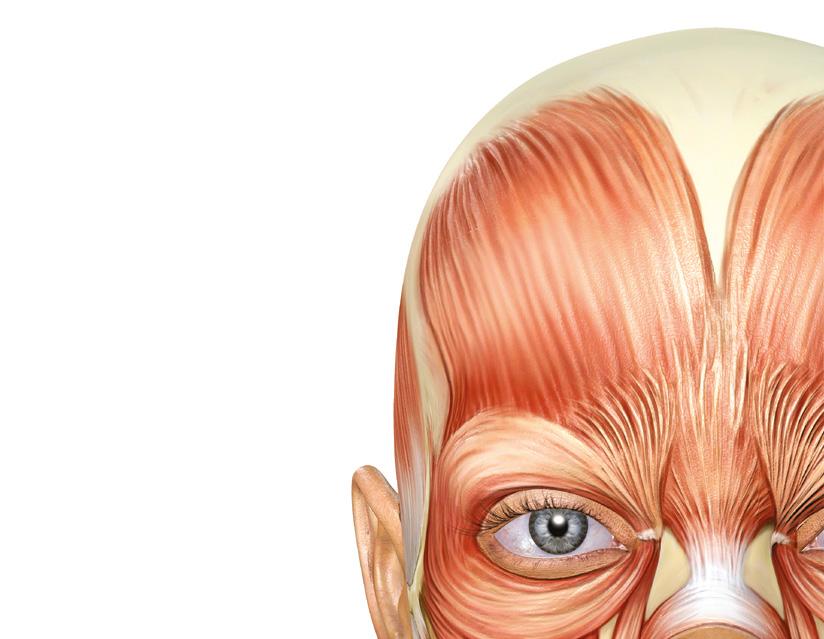
Ptosis
The incidences of downward displacement of the eyelid or eyebrow are reported to be around 0.71% to 1.8% and 0.98% to 2.6% respectively.11,16 As with the ‘frozen’ appearance described above, eyebrow ptosis can result from over-correction of the frontalis muscle when treating forehead lines.9,17,18 To minimise the risk of brow ptosis, injecting 1.5 to 2cm above the eyebrow or 2.5 to 3cm above the orbital rim is recommended.6,7,11 Furthermore, smaller doses can be injected intra- or subcutaneously particularly closer to the eyebrows to limit depth and extent of effect.1,6 Check for low flat eyebrows in women in whom the frontalis muscle may be weaker and be mindful that men tend to have lower flatter eyebrows than women.2 In individuals with very low brows, smaller doses injected
superficially are recommended or injecting 4cm above the brow.12,13
It is important to consider the interaction between the elevator frontalis muscle and the depressor muscles of the glabellar and eye area (procerus, corrugator, brow depressor, and orbicularis oculi) which governs the movement of the eyebrows (Figure 1).1,6 Some authors recommend injecting the depressor muscles with BoNT-A when treating the frontalis.2,12 This approach is recommended in patients with low brows, pre-existing brow ptosis or in patients aged over 60 years.12
If brow ptosis or brow asymmetry is the result of injection into only one group of muscles, physician Dr Rebecca Small from the University of California suggests that it can be corrected by injection into the opposing muscle group.9 Dr Small also reminds us that, as with a ‘frozen’ appearance, ptosis is temporary.9 Eyelid ptosis can occur during the treatment of glabellar lines with BoNT-A due to the migration of toxin through the orbital septum leading to the weakening of the levator palpebrae superioris muscle.2,16,17 This can occur particularly when the injection is close to the bony supraorbital margin at the mid-pupillary line and contains a large dose.2,16 Further, treatment with BoNT-A in the frontalis can reveal a pre-existing weakness in the levator palpebrae superioris muscle, leading to eyelid ptosis. The evaluation of the upper eyelid muscle is recommended prior to injection particularly in patients who may have experienced trauma in this area.6 Ensure that injections into the corrugator muscles are placed at least 1cm above the supraorbital ridge at the mid-pupillary line.9 The needle in injections in the glabellar and periocular area should be angled upwards away from the eye.2 A corrective response to eyelid ptosis is the use of alpha-adrenergic agonist eye drops which widens the eyelid gap.19,20 Apraclonidine has been shown to be effective in the treatment of eyelid ptosis.19,21 Naphazoline or phenylephrine may also be used.19
The ‘Spock’ effect
The ‘Spock’ or Mephisto effect is the excessive lifting of the lateral part of the eyebrow either symmetrically or asymmetrically. It is related more to the positioning of the injection than to the dose of BoNT-A itself.18 When injecting the frontalis ensure that injection points extend far enough across the forehead to block the lateral as well as the central regions.7,22 The effect can
also occur when injecting the lateral canthus and glabellar lines with the aim of elevating the eyebrows. To prevent this, two lateral injections can be given in the frontalis.2 To rectify the ‘Spock’ effect, one solution which has been shown to be efficacious is to inject a little more BoNT-A into the lateral-most point of the frontalis muscles.7,23
Unwanted effects at the injection site
Oedema, erythema, bruising and tenderness can occur at or near to the site of infection.2,9 These are usually mild and transient, resolving within 24 hours, although bruising can take two weeks to resolve.9 The lateral canthus area is particularly prone to bruising because of its high levels of blood vessels.2 Paying close attention to superficial blood vessels in this area along with using a small gauge needle can minimise this particular unwanted effect.17 Ice is also useful as it causes vasoconstriction to limit bruising as well as for reducing pain.17 Headaches associated with BoNT-A injection are usually transient.9
Utilising botulinum toxin
Treatment with BoNT-A in the upper face is an integral part of contemporary aesthetic medicine. It is important to remind ourselves that, as practitioners, we can optimise this treatment by making wise choices in terms of injection points, dose and injection technique. Furthermore, we need to know how to prevent and respond to any unwanted effects. Underpinning these treatment choices lies our knowledge of facial musculature and vasculature as well as the careful assessment of the individual patient and of their treatment expectations. If the practitioner can apply this knowledge and careful patient assessment, they are likely to be well-equipped to offer the individualised treatment that minimises facial lines in a natural way, with lower doses and fewer injection points that we are moving towards in today’s practice.1,7
Dr Ahmed El-Houssieny is a trained anaesthetist and is an Honorary Lecturer at the University of Chester and an education provider on cosmetic procedures. Dr El-Houssieny is registered with the General Medical Council, as well as being a member of the British College of aesthetic medicine.
Qual: MBBCH

1. Frontalis 2. Temporalis 3. Corrugator supercilii 4. Procerus 5. Depressor supercilii 6. Orbicularis oculi Figure 1: The muscles of the upper face 1 2 3 4 6 5
VIEW THE REFERENCES ONLINE! AESTHETICSJOURNAL.COM @aestheticsgroup @aestheticsjournaluk Aesthetics aestheticsjournal.com Reproduced from Aesthetics | Volume 8/Issue 12 - November 2021
OUR PRICE PROMISE
Whilst we value providing our customers with competitive prices for aesthetics products and services, PRICE means so much more... Professionalism • Regulation • Integrity • Customer Focus • Ethics
P IS FOR PROFESSIONALISM
As an experienced and specialist aesthetics pharmacy, we pride ourselves on working to high standards, offering our customers reliability and competence.

Scan the QR codes below to set up an account today and sign up to our mailing list for monthly special offers.
springpharmltd
0345 319 4000 • info@springpharm.co.uk
Sign up to our mailing list for Monthly Special Offers
Create an account today at www.springpharm.co.uk
Post-lockdown
Body Contouring

Cynosure unveils its radiofrequency applicator FlexSure


As clinics bounce back from COVID-19 lockdowns, practitioners are reporting a surge in consumer demand for highly effective, quick and easy body-contouring treatments to help rehabilitate, reshape and strengthen key areas which may have been affected by weight gain or lack of exercise during lockdown. In addition, post-COVID-19 restrictions mean that ultrahygienic, single-use or bespoke clinic treatments are a must for the future. With this in mind, global energy-based aesthetic device manufacturer Cynosure is proud to unveil FlexSure – the world’s first wrappable radiofrequency (RF) applicator, which can be used with its best-in-class TempSure 300-watt platform for flexible, hands-free, non-invasive RF treatments for all skin types. With its unique peeland-stick single-use applicators, the body-boosting FlexSure treatment delivers deep tissue heating to multiple body parts, including the abdomen, flanks, back, arms, buttocks, thighs and above the knees.
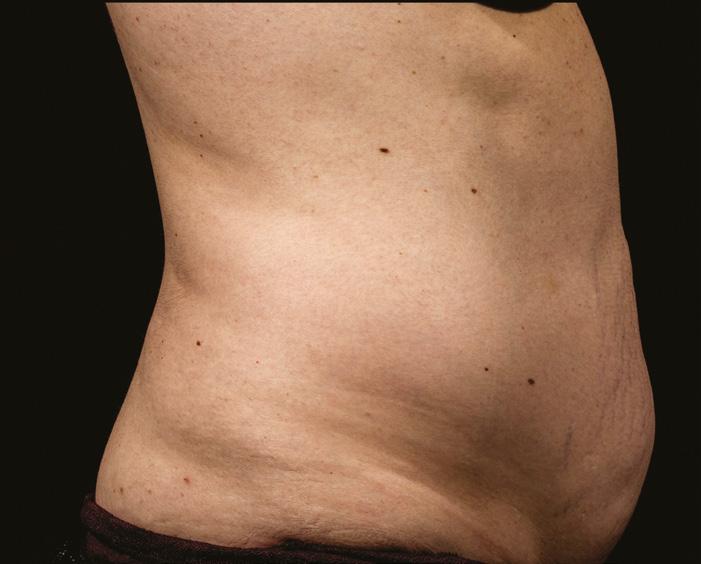
Before After
This article was produced and funded by Cynosure UK
For more information visit Cynosureuk.com/ product/flexsure
Customisable, rapid treatments
Available in multiple applicator sizes, each equipped with six customisable zones and real-time temperature-sensing capabilities, the FlexSure device allows practitioners to perform consistent, fast and effective treatments in just 15 minutes per body area. Unlike some other RF devices which have hard and rigid applicators, FlexSure conforms to the unique anatomy of each patient, delivering a comfortable and gentle treatment that is safe for all skin types, without BMI restrictions. The FlexSure customised Guided User Interface features both a Standard and Advanced mode, giving practitioners the option to customise each of the six applicator zones to a specific temperature based on the patient’s needs, offering varying levels of control for maximum efficiency. A minimum of three sessions per treatment area is recommended for optimal results.
FlexSure is the latest addition to the innovative TempSure platform which also includes Envi for fine lines and wrinkles, Firm for tissue heating over larger areas and temporary reduction of cellulite, Vitalia for women’s wellness and surgical for cutting and coagulation across a breadth of surgical applications. Cynosure is proud to deliver excellence in the field of RF technology demonstrated with over 50 years of RF experience, products in more than 100 countries worldwide and over 100 clinical publications.
FlexSure conforms to the unique anatomy of each patient, delivering a comfortable and gentle treatment that is safe for all skin types
Patient before and after two treatments of FlexSureTM. Image Courtesy of B.Katz MD.
Aesthetics | November 2021 49 @aestheticsgroup @aestheticsjournaluk Aesthetics aestheticsjournal.com Advertorial Cynosure UK
BELIEVE IN THE POWER OF SEEING.
Ultherapy® is the only FDA cleared microfocused ultrasound technology that has real-time visualisation (MFU-V).1,2
Real-time visualisation, enabling treatment customisation, precision targeting of tissues, and optimised patient outcomes 3
FDA-cleared and CE-marked so you can be confident of Ultherapy®’s good safety profile1
The Gold Standard for non-surgical lifting and skin tightening, as determined by an expert consensus panel3
For more information visit Ultherapy.co.uk

REFERENCES:
1. www.accessdata.fda.gov/cdrh_docs/pdf13/k134032.pdf Accessed September 2019 2. Ulthera
release: Ultherapy® décolletage treatment now FDA-cleared. BioSpace website. https://www.biospace. com/article/releases/ulthera-release-ultherapy-and-0174-d%C3%A9colletage-treatment-now-fdacleared-/. Accessed January 21, 2020. 3. Fabi SG, Joseph J, Sevi J, Green JB, Peterson JD. Optimizing patient outcomes by customizing treatment with microfocused ultrasound with visualization: gold standard consensus guidelines from an expert panel. J Drugs Dermatol. 2019;18(5):426-432
Adverse events should be reported. Reporting forms and information for United Kingdom can be found at www.mhra.gov.uk/yellowcard. Reporting forms and information for Republic of Ireland can be found at https://www.hpra.ie/homepage/ about-us/report-an-issue/mdiur. Adverse events should also be reported to Merz Pharma UK Ltd by email to UKdrugsafety@merz.com or on +44 (0) 333 200 4143
Refer to the Instructions for Use (IFU) for complete instructions on operating the Ultherapy® System The non-invasive Ultherapy® procedure is U.S. FDA-cleared to lift skin on the neck, on the eyebrow and under the chin as well as to improve lines and wrinkles on the décolleté. The CE Mark indications for use for the Ulthera® System include non-invasive dermatological sculpting and lifting of the dermis on the upper face, lower face, neck and décolleté. Reported adverse events from postmarketing surveillance are available in the Instructions for Use (IFU ). Please see the available IFU in your country for product and safety information, including a full list of these events. © 2018 Ulthera, Inc. The Merz Aesthetics logo is a registered trademark of Merz Pharma GmbH & Co. Ulthera, Ultherapy, DeepSEE, SEE THE BEAUTY OF SOUND and the Ultherapy logo are trademarks or registered trademarks of Ulthera, Inc., in the U .S. and /or certain foreign countries.
Merz Pharma UK Ltd, Ground Floor Suite B, Breakspear Park, Breakspear Way, Hemel Hempstead, Hertfordshire HP2 4TZ Tel: +44 (0) 333 200 4140
REAL-TIME VISUALISATION
M-ULT-UKI-0914 Date of Preparation March 2021
1
@merzaesthetics.uki Merz Aesthetics
UK & Ireland
Treating Rosacea with IPL
Rosacea is a chronic relapsing inflammatory skin disease with a high prevalence worldwide.1 Recent research suggests that dysregulation of innate and adaptive immune pathways as well as neurovascular changes is present, with different degrees of importance in the various subtypes. Neither the aetiology, genetics nor pathophysiological basis of the vascular, inflammatory or fibrotic changes is well understood.1
Rosacea symptoms consist of telangiectasia, erythema papules and pustules, and in some situations, it can affect the eyes.2 It tends to develop gradually, with first symptoms often appearing around age 30. In a survey of 1,391 rosacea patients conducted by the National Rosacea Society (NRS), 43% of patients said their rosacea first appeared between the ages of 30 and 50, while 39% reported that the disorder occurred after age 50 and 17% said they developed rosacea prior to age 30.3 Rosacea can affect anyone, no matter their race, gender, or nationality. It is estimated that around 10% of UK population is affected by rosacea.4 Commonly there is higher prevalence in women than men; however, men tend to have more severe symptoms like development of rhinophyma. There are theories that this is linked to male hormones, although there is currently not enough supporting evidence.4,5 Rosacea can have a significant impact on a patients’ quality of life. Studies that focused primarily on a rosacea population which sought care by a physician found that rosacea has a profound effect on the psyche.6,7 These studies demonstrated
tendency toward auto aggression and self-accusation, low tolerance for frustration and predisposition to the development of depression.7 As such, it’s important for aesthetic practitioners to be aware of how to treat patients in the safest and most effective way possible.
Diagnosis
Diagnosis of rosacea is challenging, and currently there is no specific test to confirm the condition. Doctors and aesthetic practitioners have to rely on the examination and an in-depth consultation. Occasionally, we can run tests like a skin biopsy or blood test to exclude lupus or psoriasis. Because the potential manifestations of rosacea are so numerous and varied, the National Rosacea Society Expert Committee concluded that global assessment can be most easily and meaningfully performed by subtype. The standard classification system established the following subtypes of rosacea:8
1. Subtype 1: erythematotelangiectatic rosacea is characterised by flushing and persistent central facial erythema. Telangiectases are common but not essential for the diagnosis.
2. Subtype 2: papulopustular rosacea includes persistent central facial erythema with transient papules, pustules, or both in a central facial distribution. Burning and stinging may also be reported.
3. Subtype 3: phymatous rosacea may include thickening skin, irregular surface nodularities, and enlargement. Phymatous
rosacea occurs most commonly as rhinophyma but may appear elsewhere, including the chin, forehead, cheeks, and ears. Patulous, expressive follicles may appear in the phymatous area, and telangiectases may be present.
4. Subtype 4: ocular rosacea may include a watery or bloodshot appearance, foreignbody sensation, burning or stinging, dryness, itching, light sensitivity, blurred vision, telangiectasia of the conjunctiva and lid margin, or lid and periocular erythema. Blepharitis, conjunctivitis, and irregularity of the eyelid margins also may occur. Some patients may experience loss of vision as a result of corneal complications (punctate keratitis, corneal infiltrates, ulcers, or marginal keratitis). An ophthalmologic consultative approach to treatment may be required.
IPL treatment for rosacea Rosacea is chronic condition and as such there is no cure for it, so recurrence and exacerbation are common. Therefore, treatment for rosacea often focuses on controlling signs and symptoms, and commonly this will require combination therapy and educating the patient in regards to lifestyle factors. Common triggers are exercise, sun and wind exposure, hot weather, stress, spicy foods, alcohol, and hot baths. Swings in temperature from hot to cold or cold to hot can also cause a flare-up of rosacea.9
Intense pulsed light (IPL) technology is well accepted in the medical aesthetic field for the treatment of vascular lesions. The light penetrates into the skin and is selectively absorbed by lesion chromophore. Absorbed energy is converted into heat, coagulating the lesion, which naturally fades following the treatment.10 IPL is my preferred first choice of treatment for many patients, especially for rosacea subtype 1 and 2. From my experience at the clinic, IPL can bring relief to facial flushing or burning as early as a single treatment. Depending on the subtype and severity – adding oral or topical prescription medications is often required on top of IPL treatment. I commonly use prescription medications (like brimonidine), oral (lymecycline or doxycycline) or topical antibiotics (azelaic acid, metronidazole, ivermectin) to reduce flushing.

My treatment approach
At my clinic we have a holistic approach to the treatment of rosacea. The typical patient will have often already visited a few doctors
Dr Magdalena Bejma explains the benefits of using intense pulsed light to treat rosacea
@aestheticsgroup @aestheticsjournaluk Aesthetics aestheticsjournal.com Reproduced from Aesthetics | Volume 8/Issue 12 - November 2021
From my experience at the clinic, IPL can bring relief to facial flushing or burning as early as a single treatment

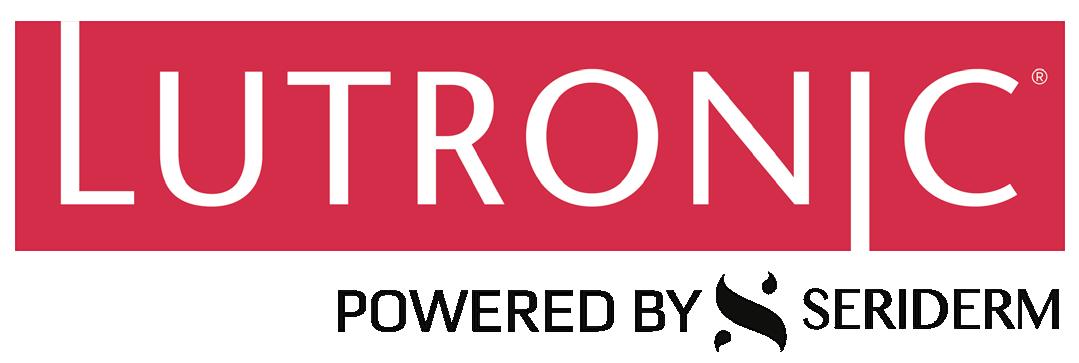

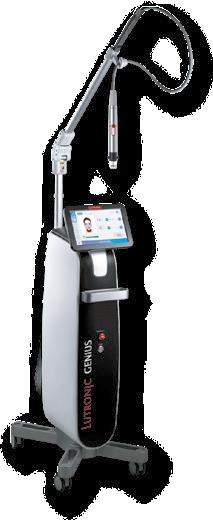
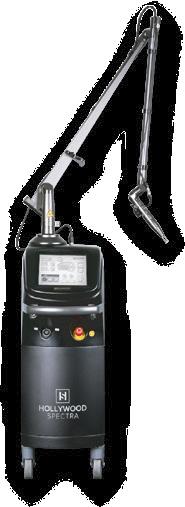






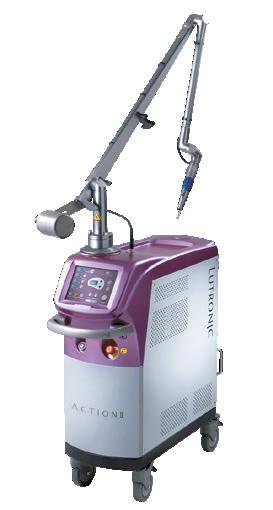








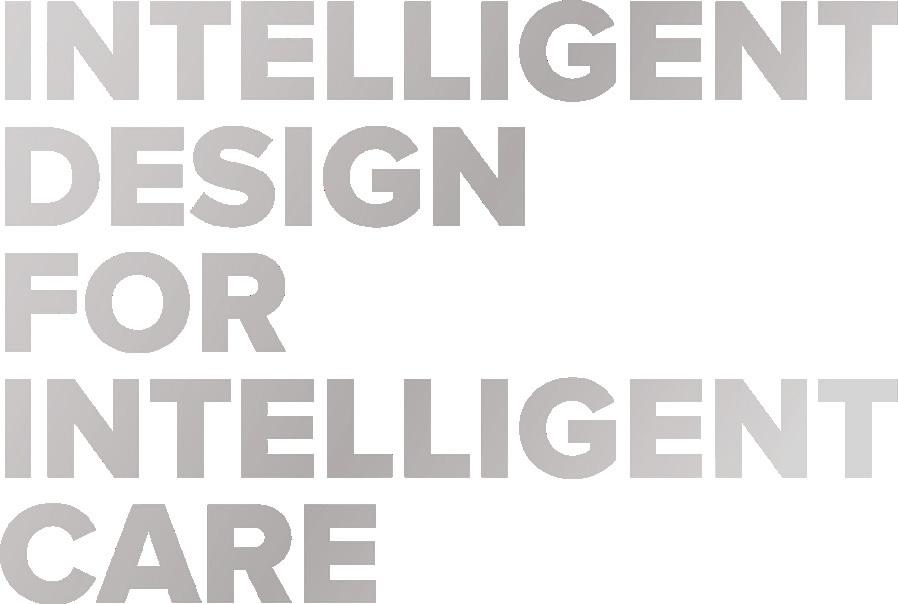
1
A 51-year-old female patient presented to my clinic with rosacea subtype 1. The patient had suffered from telangiectasia, flushing and persistent central facial erythema for more than 20 years. Transient papules were also common over the years.
Prior to her appointment the patient had been unaware of her rosacea diagnosis and had presumed it was a genetic problem, as her other family members exhibited a similar appearance. As such, she had no history of previous treatment. During her first treatment with the Lumecca IPL system the patient had only a single pass with an energy of 13J (her skin felt sensitive when I attempted to increase energy or to do a second pass). For the second treatment, the first pass was 14J, and the second 16J. The second treatment was much better tolerated. Immediately after she experienced mild erythema, but this subsided within 20 minutes. The patient underwent a third treatment (two passes at energy 16J), afterwards stating a complete resolution of facial erythema and telangiectasia. The patient was instructed that to maintain results, a treatment once a year is typically required.
and tried variety of treatments, usually with minimal results. Most of the patients already feel very low due to the appearance of their skin and have a very sceptical approach to the treatment as most of previous attempts failed. We start with an in-depth consultation, where we cover their lifestyle, diet, possible triggers and previous treatments. We are very clear in our consultation that rosacea is a chronic condition with no cure, so as to manage patient expectations, but explain that facial symptoms might be well controlled with our treatment protocol and other lifestyle changes. Most of our rosacea patients are placed on medical-grade skincare. The pHformula chronic redness range (homecare kit as well as in-clinic facials regime) is excellent and thanks to it, I often avoid prescribing oral or topical antibiotics.
At my clinic we developed internal protocols for our IPL system, and every treatment is customised with a different number of pulses, duration of pulses or wavelengths. Typically, one to six sessions are needed, although this depends on the severity of rosacea, with the average patient having three sessions. Treatment takes about 40 minutes per session, and we recommend
Case study 2
A 26-year-old female patient contacted my clinic with no prior diagnosis and concerns over facial redness, flushing and facial burning, especially after using daily skincare. She also reported having facial flushing for years. This was initially very intermittent, but had become persistent in the past six months. Her main concern was significant discomfort after applying any skincare or makeup, and she reported a low mood due to her ongoing skin problems. The patient also reported early formation of pustules. After an examination I diagnosed her with rosacea subtype 2, and she was treated with two sessions using the Lumecca device.
Both sessions used a single pass with an energy of 12J. She reported that the burning sensation improved after her irst treatment. Additionally, the patient started using medicalgrade skincare.

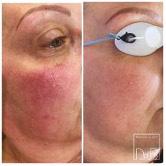
It has now been nine months since the treatment and the patient has reported no relapse in her condition.
an interval of three to four weeks between treatments.10 Most of our patients have minimal downtime; mainly redness is reported with occasional mild bruising (in more severe cases of rosacea). Other side effects can include bruising, swelling, pigment changes or scarring, but the risk of these can be minimised if the practitioner has been trained in the device sufficiently.
A holistic approach
Rosacea is chronic skin disorder with multiple challenges, for both patient and practitioner. A holistic approach, combined therapies, as well as addressing possible mental health issues is needed. IPL therapy is a very effective treatment for rosacea and in my experience, provides significant improvement for the majority of patients, even with a single treatment.
Dr Magdalena Bejma is an aesthetic practitioner and general practitioner and is the founder of Dr Bejma Medical Clinic in Leeds. Dr Bejma specialises in natural enhancement and is focused on helping her patients obtain a balanced and refreshed look.

Qual: MBBS, MRCGP
REFERENCES
1. Holmes AD and Steinhoff M, Integrative concepts of rosacea pathophysiology, clinical presentation and new therapeutics, Exp Dermatol, (2016) Jul 4.
2. Mayo Clinic, Rosacea, 2021, <https://www.mayoclinic.org/ diseases-conditions/rosacea/symptoms-causes/syc-20353815>
3. Lynne Drake, Survey Dispels Myth That Rosacea Usually Strikes Between 30 and 50, National Rosacea Society, 2007, <https:// www.rosacea.org/rr/2006/fall/article_3.php>
4. M Steinhoff, Review Clinical, cellular, and molecular aspects in the pathophysiology of rosacea., Journal of Investigating Dermatol Symp Proc, 2011
5. Rohrich RJ, Griffin MD, Adams WP. Rhinophyma: Review and Update, Plastic and Reconstructive Surgery, 2002
6. E Orion, R Wolf, Psychologic consequences of facial dermatoses, clinics in dermatology, 2014
7. Leah A Cardwell, Psychological disorders associated with rosacea: Analysis of unscripted comments, 2015, <http://www. sciencedirect.com/science/article/pii/S2352241015000298>
8. Wilkin J, Dahl M, Detmar M, et al., Journal of the American Academy of Dermatology. Standard grading system for rosacea: report of the National Rosacea Society Expert Committee on the Classification and Staging of Rosacea, Journal of the American Academy of Dermatology, 2004
9. Canadian Dermatology Association, What can trigger rosacea to flare up?, 2017, <http://www. dermatology.ca/skin-hair-nails/skin/ rosacea/what-can-trigger-rosacea-to-flare-up/>
10. Judith Hellman Mount Sinai Hospital, Retrospective Analysis of Outcomes with a Unique IPL System, Journal of Cosmetics, Dermatological Sciences and Applications, 2021
Case study
Before Before After After
Figure 1: 51-year-old patient before and one week after two treatments of IPL
@aestheticsgroup @aestheticsjournaluk Aesthetics aestheticsjournal.com Reproduced from Aesthetics | Volume 8/Issue 12 - November 2021
Figure 2: A 26-year-old patient before and four weeks after two treatments of IPL
The lips and perioral region are a prominent facial feature, providing an essential role in how we present and communicate with each other. The lips, along with the eyes, are part of our central facial triangle representing the features that most often capture attention. Unsurprisingly, the lip and perioral region are highly requested areas for aesthetic rejuvenation, and yet can pose challenges to the aesthetic practitioner due to their dynamic nature and variable vascularity. Every lip is unique, with the ideal lip augmentation creating profile harmonisation, respecting ethnic variation, and fulfilling patient aims for treatment. This article aims to review some of the latest knowledge with regards to lip and perioral anatomy, their successful treatment, and how to minimise complications.
Individual anatomy
Understanding the underlying anatomy in our injectable region is essential to treat patients safely and effectively. However, individual patient anatomy can vary considerably, and so it’s important to bear this in mind. The lips can be considered in conjunction with the entire perioral region. The upper lip is bound by the infranasal region superiorly, the nasolabial grooves laterally, to the free edge of the vermilion border. The lower lip extends from the free edge of the lip and the oral commissures laterally, to the inverted U-shaped labiomental crease inferiorly. Above the lips are two vertical philtral columns and their midline depression, the philtrum. The upper and lower lip meet at the oral commissure.1
The lips themselves are defined by the vermilion-cutaneous junction, with a thin, lighter-coloured line enhancing the characteristic colour from numerous capillaries against the surrounding skin. In the upper lip, two paramedian vermilion prominences form the Cupid’s bow.1 The layers of the lip can be described from superficial to deep: the epidermis covered by skin, subcutaneous layer, the orbicularis oris muscle fibres and intra-oral mucous
membrane. The intra-oral mucous membrane meets the exterior skin of the face at the wet/dry border. Lips can be described as ‘competent’ if lightly closed at rest, and ‘incompetent’ if at rest the lip seal is not maintained.1
There are a number of muscles acting on the lips, the main group being the orbicularis oris muscle complex that encircles the mouth. The orbicularis oris is composed of long, vertical segments that curl outwards at both superior and inferior free margins to protrude the lips, with another 18 muscles attached (two pairs of nine).1
The lips receive their blood supply from the labial arteries, running along the free border of the lip. The labial arteries can vary considerably in vessel size and distribution and are commonly torturous. The larger superficial labial artery supplies the upper lip; whilst the lower lip is supplied by the inferior labial artery. Both arise lateral to the oral commissure and pass behind the depressor anguli oris muscle to pierce the orbicularis oris and meet its contralateral partner in the midline.2,3
The superior labial artery often lies at or above the level of the commissure, spanning on average 45mm and becoming superficial in the midline at 3mm deep.1,2 It may even be
unilateral in just under a third of patients.2,3 Whilst the superficial labial artery often arises directly from the facial artery, the inferior labial artery by comparison can arise from four additional vessels: the superior labial artery, modiolar artery, ascending mental artery (AMA) and the labiomental artery.4,5 Both the AMA and the labiomental artery lie superficially, with the former lying laterally to the midline in the submuscular plan, and the latter only 5mm under the skin.6
The labial arteries can vary in their depth as they span the lip, and their position can be divided into three regions:7
1. Submucosal: behind the orbicularis oris muscle (78.1%)
2. Intramuscular: within the orbicularis oris muscle (17.5%)
3. Subcutaneous: in the keratinised part of the lip (1.7%)
Hence, the lowest risk region is the subcutaneous plain and this is often the target region for aesthetic practitioners.7
Sensory nerve supply arrives from the mental and infra-orbital nerves, with movement supplied from the branches of the facial nerve including the buccal and marginal mandibular nerves. The bony support to the lip influences its projection: the maxilla for the upper jaw, the mandible supporting the lower, and the position or absence of the underlying teeth.1
The danger zones
Aesthetic practitioners should have sufficient anatomical knowledge of the injecting area and have completed high-quality injectable training courses to ensure safe technique for product delivery, such as those
Lip
Perioral
Dr Harmony Ubhi provides an introduction to the necessity
understanding
anatomy 1 2 3 5 4 8 7 6 3 7 6 4 2 5 1 Under lip 1. Commisural zone 2. Peristamal medial zone 3. Peristamal lateral zone 4. Subvermillion medial zone 5. Subvermillion lateral zone 6. Vermillion medial zone 7. Vermillion lateral zone Upper lip 1. Philtral zone 2. Vermillion central zone 3. Vermillion Cupid’s apex zone 4. Vermilion lateral zone 5. Subvermilion medial zone 6. Subvermilion lateral zone 7. Peristomal medial zone 8. Peristomal lateral zone Figure 1: Annotated anatomy of the upper and under lip areas @aestheticsgroup @aestheticsjournaluk Aesthetics aestheticsjournal.com Reproduced from Aesthetics | Volume 8/Issue 12 - November 2021
Understanding
and
Anatomy
of
lip
registered with the Joint Council for Cosmetic Practitioners (JCCP). The medical practitioner will take a full medical history and undertake a thorough facial examination of the patient. Many complications can be minimised to the lowest possible risk, or certainly anticipated with these basic steps. One can consider there to be no completely safe area to inject in the face; all regions are interconnected and have the potential to reach the ophthalmic and cerebral circulation.6
The labial arteries travel in the region close to the vermilion border; in the majority of cases behind the wet/dry border. In the central third of the lip, it becomes more superficial and is more likely to be found within the orbicularis oris muscle itself. The highest risk zones of injection are whenever filler is placed deep (greater than 4mm), or posterior, to the wet/dry border, for instance in the submucosal plane, compared the less risky subcutaneous plane.7,8,10
The philtral columns are a very infrequently, if ever, requested area for injection, as an enhanced philtrum can distract from the lip, and can be associated with ageing and masculinisation. More often than not, the practitioner decides if product placement may be beneficial in this region, especially as the midline area in both the lip and perioral region is incredibly vascular and potentially dangerous to inject.10 With regards to the philtral columns, there lie both superficial and deep tissue vascularity in the midline.10
How to avoid complications
The rise in lip and perioral fillers and their associated vascularity has led to a concern for the potential increase in serious adverse events and complications.11 Their prompt identification and treatment ensure minimal harm to the patient both in the short and long term. Prior to commencing any aesthetic treatment, the patient should be well-informed as part of the consent process with regards to associated risks. These would include, but are not limited to, those frequently occurring and those with significant impact, including swelling, bruising, infection, nodules, palpable product, vascular occlusion, and tissue death.11
Avoid filler in areas without a good blood supply and in areas of active infection or inflammation as these are already compromised areas with relatively poor vascular flow. Patients with a previous hypersensitivity reaction to any ingredients of the filler is an absolute contraindication to treatment. Injectable treatments can activate
a dormant herpes simplex virus in those with a history, such that one should consider prophylactic antivirals. Avoid injecting in areas with previous permanent filler placement; a new filler can trigger acute inflammation or infection in these cases.12
I would recommend using general strategies to minimise the risk of complications and facilitation of patients’ treatment including:12
• Awareness of danger zones
• Product aspiration if applicable
• Slow injection speed with minimal pressure. Stop if resistance is encountered
• Small, superficial, and incremental product placement, for example 0.1-0.2ml
• Small syringe and needle to deliver the product precisely and with slow speed
• Blunt cannula where indicated can minimise bruising and swelling
• Continued patient assessment. Stop if there is any pain or discomfort, and routinely check the capillary refill in the immediately treated and surrounding area
• Massage the treated tissues firmly and consider a cool pack after the procedure
Vascular occlusion
Vascular occlusion is the most serious complication from lip augmentation, which can lead to irreversible tissue death (necrosis), scarring and potential blindness. This can be minimised by product aspiration, small volumes per bolus, and slow gentle product placement.12 Superficial product placement (i.e. subcutaneously), further reduces the risk, and novel techniques take advantage of this anatomy by using a (shorter) 4mm needle.13,14 Actively check for vascular occlusion in the treated area using capillary refill technique. You can do this by applying firm digital pressure for five seconds, with blanching resolving within one or two seconds on digit removal in unaffected tissues. In the event of vascular occlusion, current best practice is the treatment with high-dose pulsed hyaluronidase.15
Management
The use of hyaluronic acid products has a significant advantage in terms of reversing treatment in the event of a complication or dissatisfaction with treatment.15 The patient should be provided with verbal and written post-treatment instructions and contact details, with the injector easily reachable after treatment. Encourage the patient to get in contact if there are any problems post-treatment and offer a follow-up appointment for
further patient support, for example a two-week complimentary review. Other complications can include undertreatment, overtreatment, and asymmetry, all resulting in degrees of patient dissatisfaction; which is why appropriate patient selection, proper consent prior to treatment and continued discussion are all essential to anticipate, manage and resolve these cases. Registering with the Complications in Medical Aesthetic Collaborative (CMAC) and the Aesthetic Complications Expert (ACE) Group World will provide invaluable information regarding aesthetic complications.15
Minimising the risk
The growing popularity of lip and perioral aesthetic treatments has re-highlighted the importance of understanding the surrounding anatomy and practicing sound techniques. Anatomical knowledge provides an invaluable roadmap to minimising treatment risk. Vascular occlusion is a small but significant complication, and those with an in-depth anatomical knowledge, significant practical training and the ability to recognise a complication, are the most able to treat patients safely.
Dr Harmony Ubhi is an aesthetic practitioner and trainee in oral and maxillofacial surgery. She has studied medicine at University College London, is a member of the Royal College of Surgeons and has completed her general surgical training in London. Passionate about further education, she is pursuing further education at King’s College London. Qual: MBBS, BSc, PCME, MRCS

VIEW THE REFERENCES ONLINE! AESTHETICSJOURNAL.COM @aestheticsgroup @aestheticsjournaluk Aesthetics aestheticsjournal.com Reproduced from Aesthetics | Volume 8/Issue 12 - November 2021
Treating Eyes with CO2 Laser
A gold-standard treatment for natural and youthful looking eyes
It has been scientifically and psychologically proven that the eyes are the centre of human-to-human interaction. As our eyes are the central area of focus in our interpersonal engagement, any signs of tiredness and the ageing process, such as crow’s feet, eyelid sagging or puffy under-eye bags, are particularly noticeable and can have a significant impact on how we look. It’s amazing how years of ageing can be taken off one’s appearance when the eye area is addressed in isolation or as part of a complete facial rejuvenation treatment. Until now, the only truly effective way to tackle saggy eyelids or under-eye bags was a surgical procedure to remove excess skin, known as a blepharoplasty. While a blepharoplasty will deliver good results, fear of going under the knife, the downtime associated with surgery and the scarring that could result from stitches, have deterred many from resolving their eye issues through surgery.
The Madonna eye lift procedure
However, there is now an alternative procedure, the Non-Surgical Madonna Eye Lift. Championed in the UK by award-winning consultant plastic surgeon Mr Ali Ghanem with the innovative Deka SmartXide Punto platform, The Madonna Eye Lift is a procedure designed to address the signs of ageing in the eye area without the need for surgery. It usually entails one to four sessions of fractional laser resurfacing to the areas above the eyebrow, upper lid, and lower lid. The skin is numbed using local anaesthetic cream for about half an hour, and the entire procedure takes approximately 10 to 15 minutes to complete with a short downtime of between two to four days. The procedure will immediately improve skin laxity, fine lines, wrinkles and dark circles, tighten the upper and lower eyelid skin, and even improve the position of droopy eyebrows.
• Reduced risk of scarring – Areas touched by the CO2 laser heal with less wound contraction and scarring due to the reduced amount of myofibroblasts formed at the surgical site.
• Minor swelling and reduced discomfort –The CO2 laser seals lymphatics, reducing post-operative swelling and irritation.
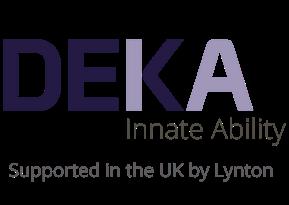

• Faster recovery time – Reduced trauma, minimised bleeding, less pain and minimal swelling lead to shorter initial recovery times.
• Innovative pulse shape design – Provides flexibility, allowing surgeons to choose the desired pulse shape for treatment.
As no scalpel is used, there is minimal damage to the skin, which leads to a reduction in swelling, bruising and scarring. Patients will need seven to 10 days of recovery time compared to two to four weeks with a traditional surgical eyelid lift.
A more convenient solution for younger looking eyes
The Madonna Lift procedure should be utilised in mild to moderate cases, and a laser blepharoplasty should be used for advanced skin and ageing issues for more youthful and rejuvenated eyes. Furthermore, thanks to the benefits associated with the DEKA SmartXide for laser treatment, the procedure can now be performed with added safety, comfort and more convenience to achieve a complete and natural-looking facial and eye rejuvenation.
The SmartXide series
The innovative new laser blepharoplasty
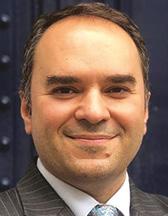
When the signs of ageing are advanced, it is now possible to avoid traditional scalpel blepharoplasty surgery. Instead, laser blepharoplasty uses a CO2 laser to offer all the benefits of surgical blepharoplasty without the side effects associated with going under the knife. Using a DEKA CO2 laser, which has already proven effective for addressing aesthetic issues such as wrinkles, scars and blemishes, plastic surgeons can now correct a variety of upper and lower eyelid issues, including:
• Drooping lower eyelids
• Under-eye bags
• Fine wrinkles around the lower eyelids
• Sagging upper eyelid skin
• Excess fat in the eyelids
Laser blepharoplasty offers many benefits over traditional blepharoplasty, including:

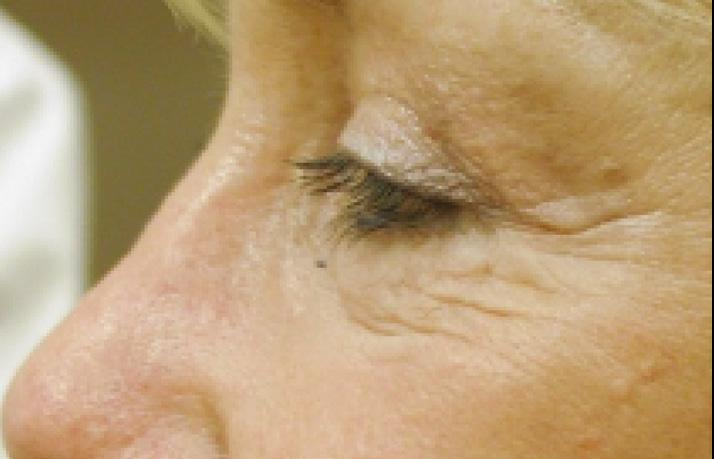
• Minimised bleeding – As the laser vaporises tissue, it seals small blood vessels. Reduced bleeding makes laser blepharoplasty surgery faster and easier for the surgeon.
The SmartXide platforms are highly versatile devices, allowing for precise treatments without damaging surrounding tissues. Alongside performing the Madonna Eye Lift and blepharoplasty, the new SmartXide Punto is also an affordable device for scarring, rejuvenation and minor surgical applications. Alternatively, the SmartXide Touch is the ultimate solution for advanced surgical, gynaecological and hair restoration applications.
This advertorial was written and supplied by
Before and after using the SmartXide Touch C02. Images courtesy of Dr Bruce Katz. Aesthetics | November 2021 56
Before After @aestheticsgroup @aestheticsjournaluk Aesthetics aestheticsjournal.com Advertorial Lynton
A summary of the latest clinical studies
Title: A Comparative Study of Efficacy and Safety of Autologous Fat Grafting Vs. Platelet-Rich Plasma in the Treatment of Post-Acne Scars
Authors: Shetty V, et al.
Published: Journal of Cosmetic Dermatology, October 2021
Keywords: Acne Scars, Fat Grafting, Platelet-rich Plasma
Abstract: Platelet-rich plasma is a useful adjuvant therapy in the treatment of acne scars. Fat is an ideal soft tissue filler. 24 patients were divided into two groups with 12 patients in each. One group subjected to a single session of subcision with autologous fat grafting. The second group was treated with subcision followed by intradermal platelet-rich plasma once monthly for three months. High resolution digital photographs were taken before and after every session. A single blinded physician assessment was also done. In quantitative acne scar assessment scoring, both group of patients showed a significant percentage of improvement in acne scars, 9.48% in patients treated with subcision followed by autologous fat grafting and 7.28% in patients treated with subcision followed by intradermal PRP. At the time of enrolment, 33.3% of patients had Grade A (mild) scarring, 50% had Grade B (moderate) scarring while 16.7% had Grade C (severe) scarring. After the completion of the treatment, it was found that 75% of patients were in Grade A while 20.8% of patients were in Grade B. Both the treatment modalities were effective and safe for the treatment of acne scars and results in each group was significant, but there were no statistically significant differences between the two treatment groups.
Title: Long-term Effects of Repeated Botulinum Toxin Injection in Cosmetic Therapeutics
Authors: Crook J, et al.
Published: Annals of Plastic Surgery, October 2021


Keywords: Botulinum Toxin, Injections, Wrinkles
Abstract: Botulinum toxin (BT) has been used in clinical medicine since the 1970s for cosmetic and therapeutic purposes. Studies have consistently shown positive outcomes with a very limited adverse effect profile and a conventional understanding that results dissipate after three to five months. To examine the potential implications of these findings on cosmetic use of BT injections in reduction of lines and wrinkles, we needed to further our understanding of the current literature on long-term outcomes after repeated BT injections. A comprehensive review of the literature on long-term outcomes after repeated BT injections for cosmetic indications was performed. We evaluated the study designs, and results were compared. 22 publications met our inclusion criteria, of which 14 were clinical trials. Few studies extended outcome measurement past six months post-injection, and many were funded or supported by industry. However, the studies that extended followup saw changes after BT injection, in some cases as far as four years post-injection. The current body of knowledge on the long-term results after repeated cosmetic BT injections is limited, and available literature provides insufficient evidence on how prolonged effects could alter clinical use of BT. Further clinical studies with extended follow-up periods with inclusion of both subjective and objective measured outcomes of appearance and muscle function are required to understand the long-term impacts of repeated BT injections.
Title: Real-Time Ultrasound Imaging of the Tear Trough: Lessons Learned from Functional Anatomy
Authors: Calomeni M, et al.
Published: Aesthetics Surgery Journal, October 2021
Keywords: Injectables, Tear Trough, Ultrasound
Abstract: The tear trough is one of the most challenging facial regions for soft-tissue filler injections. A thorough understanding of the underlying fascial, muscular, and vascular anatomy is crucial to perform safe and effective tear trough injectable treatments. The aim of the study is to evaluate the location and function of the angular vein in the tear trough in three different facial expressions: repose, smiling, and max. orbicularis oculi contraction. 20 participants with a mean age of 48.3 years and mean BMI of 24.5 kg/m2 were investigated via functional ultrasound imaging. The diameter of the angular vein, the velocity, and direction of venous blood flow were analysed in repose, smiling and during max. orbicularis oculi contraction. The angular vein was identified in 100% of the cases to travel inside the orbicularis oculi muscle within the tear trough whereas the angular artery was not identified in this location. The distance between the angular vein the inferior orbital rim was (lateral to medial): 4.6 mm, 4.5 mm, 3.9 mm, and 3.8 mm. The caudally directed blood flow was in repose 10.2 cm/ sec and was 7.3 cm/sec at max. orbicularis oculi muscle contraction; no blood flow was detectable during smiling. The diameter and the venous blood flow of the angular vein varied between the three facial expressions. Based on these findings, the deep injection approach to the tear trough is recommended due to the intramuscular course of the angular vein.
Title: An In Vivo Model of Postinflammatory Hyperpigmentation and Erythema
Authors: Vellaichamy G, et al.
Published: British Journal of Dermatology, October 2021
Keywords: Hyperpigmentation, Trichloroacetic Acid
Abstract: Post-inflammatory hyperpigmentation (PIH) is a common disorder of the skin associated with quality of life impairment, especially in skin of colour individuals. Treatment for PIH is limited, due to a poor understanding of disease pathogenesis and lack of a representative disease model. This study is to further develop, update, and validate our designed in vivo model of acne-induced PIH/post-inflammatory erythema (PIE) using different concentrations of trichloroacetic acid (TCA). 29 patients with skin types I-VI and clinician-confirmed presence of two or more truncal acne pustules and PIH/PIE were included. On the basis of IGA, CPP, colorimetry, and skindex, we experimentally determine an optimum TCA-concentration and assessed our model’s ability to exhibit a dose-response relationship between inciting insult and severity of pigmentation. We performed differential microRNA profiling and pathway analysis to explore the potential of microRNAs as molecular adjuncts to our model. Application of 30% TCA produced lesions indistinguishable from acne induced PIH and PIE lesions on the basis of data without causing epidermal necrosis. Increasing TCA doses from 20%-30% resulted in concentration-dependent increases in CPP, IGA, and colorimetry scores at points during the study.
@aestheticsgroup @aestheticsjournaluk Aesthetics aestheticsjournal.com Reproduced from Aesthetics | Volume 8/Issue 12 - November 2021
Why focus on digital? In short, it’s where your patients are! Even on social media alone there are currently 53 million active users in the UK, which is 77.9% of the population.1
This shouldn’t be surprising, considering how websites, streaming, social media and online purchasing have changed, even in the last five years. It’s this increase in choice through better technology and availability of information which empower consumers, and why aesthetic businesses must take notice.2 This changing landscape can be a blessing or a curse, depending on how prepared you are to meet the challenge of presenting your brand and your business in the digital age.
Whilst word of mouth may still be an initial driver for many, your first impression with new patients will not be in person, but instead be likely through your digital presence. This is supported by Allergan’s 360 Report data from 2019 which looked at a survey of 14,457 aesthetic conscious consumers worldwide and found that 37% of consumers search online, 37% receive a recommendation from a friend/family/co-worker and 33% receive a recommendation from their existing physician.3
The impact of COVID-19
Another key driver of how quickly things can change has been the COVID-19 pandemic. Those early digital adopters that were conducting virtual consultations, receiving online reviews, and developing their email and social media channels before the pandemic may have benefited over those who focused more on traditional marketing activities. Insurance provider
Hamilton Fraser’s recent survey of 1,360 UK practitioners concluded that whilst the longterm effects of COVID-19 on the aesthetics specialty are unclear, practitioners should strive to offer a high level of service through their digital channels especially when social distancing may mean aftercare must be conducted virtually.4 This not only shows the importance of incorporating digital tools, but how to use them effectively.
The consideration stage
There has been an increase in openness in discussing aesthetic treatments on social media channels and review sites, with 82% of consumers believing that injectables are socially acceptable, and 71% willing to see a professional.3
Whilst in the past, a simple website and a consistent social media presence may have been sufficient, now businesses that are not investing more in their digital presence will fall behind.
The consideration stage of the patient journey is key because it’s when people start to develop their initial consideration set or evoked set of options. These can come from internal sources such as family, friends, co-workers and external sources such as search engines, websites and social media accounts. Nearly 70% of brand choices are made at this point, the beginning of the journey, when a consumer is first triggered.2 So where should aesthetic practitioners place their emphasis and what are a few of the key things to consider?
1. Stay front of mind with the Facebook Pixel
One of first very simple things you can do with your marketing team or agency partner is to implement a Facebook Pixel on your website.5 The Facebook Pixel is a small piece of code you can setup in your Facebook business manager account and place on your website.

manager is the ‘hub’ where you access all of your Facebook and Instagram pages and ad accounts. So, what does the Pixel do?
Imagine eight people have visited
Your
Facebook business
your clinic Initial consideration set Moment of purchase Trigger 1 2 3 4 Post-purchase experience Loyalty loop Active evaluation The consumer considers an initial set of brands Brands enter and exit the consideration set at any point up to purchase Ultimately, the consumer selects the brand Figure 1: A demonstration of the consumer decision journey Consumer re-purchases current brand without shopping for others Improving Your Digital Presence Digital marketing specialist Dave Baldwin explains his top insider tips for making yourself stand out online @aestheticsgroup @aestheticsjournaluk Aesthetics aestheticsjournal.com Reproduced from Aesthetics | Volume 8/Issue 12 - November 2021
left saying they would ‘think about it’. The Facebook Pixel helps to bring those potential customers back to your website by tracking actions taken on the site, such as browsing certain pages, or purchasing products. These actions are linked to users Facebook accounts and for up to 180 days after the action, meaning these potential customers could be targeted for up to six months. When setting up your Facebook business manager and Facebook Pixel make sure you remain the owner of the page, not the person managing it, as this may cause issues with account access if you change your staff.
2. Lookalike audiences for great first impressions
Another advantage of the Facebook Pixel is the audience data you collect can make your social media ads strategy more effective through a lookalike audience. How does a lookalike audience work? It uses Facebook’s algorithm to select people that have similar interests to those found in your pixel data.6 This means you are focusing your initial advertisements on potential patients that are more likely to be interested in your products or services. As you run Facebook ad campaigns over months or even years, this data gets richer and ultimately improves your click through rates and conversions. A key thing to note is that lookalike audiences can be used to reach people with specific content across all Facebook channels including Instagram. LinkedIn also has a similar feature which can be useful if you are trying to reach a business-to-business audience, for example aesthetic training academies.
3. Don’t be intimidated by video content
It’s a good idea to invest in a videographer or utilise a modern smartphone, a one or two-year-old iPhone or Android should do the trick. Capturing great content starts with you and your team, for example recording videos explaining the treatments and services you offer. Be sure to cover the key points of your ad within the first few seconds and keep videos short. Sharing results is a great way to engage potential patients, however Facebook will often block before and after photos from paid promotions so using patient testimonies is a great alternative. Once you have your footage, you can develop bespoke ads with a designer. iPhones are great for informal social media stories, but to achieve high-quality results in the right format a videographer or marketing professionals is a must. There are a number of freelancer websites such as
Fiverr.com or upwork.com which can help you choose a local videographer or designer with the right experience and fees for your budget.
4. Optimise your landing page
Have you heard of the three second rule? If your site doesn’t load within three seconds, you are likely to lose that customer.7 Furthermore, if your landing page isn’t attractive with engaging content (preferably video) and easy to navigate with clear calls to action then your campaign performance will suffer. Test your page with friends or coworkers to see if anything could be easier to use, and research A/B testing. This is where you create different versions of your pages to see what generates the most engagement. If you are interested to learn more, Hubspot’s blog is a great resource.8
We are all impatient when searching online so your site must be very fast, and mobile optimised. This means your website should be able to adapt to the screen size of a computer, tablet or smart phone, which two out of three of your customers will be using.9,10 Most site builders are now mobile ready, even the free ones, and you will also get no favours from Google in terms of search engine optimisation (SEO) if your site isn’t mobile optimised.
5.
Google likes your reviews
86% of people read reviews for local businesses, and 40% of consumers only consider reviews written in the last two weeks.11 This means potential patients will be looking for reviews, and recent ones. This can be easier to manage when they come from the guarantor review sites such as Trustpilot. They provide potential patients with useful information during that consideration stage when they are comparing their options, and now Google is getting in on the act.
Google ultimately exists to provide the user with the best results based on what they’ve searched. For a small fee, sites like Trustpilot, or RealSelf now have a useful piece of code you can include in your website to display your rating via the platform. Trustpilot provides a full overview on their features and pricing on their business site. Google will now consider reviews within the great many other facts that determine SEO.12 This can be used to your advantage, as these sites tend to have many visitors and strong SEO profiles.
By aligning your site and your reviews with the provider, Google will reward the site with a more favourable listing compared to
smaller review providers. An alternative to the subscription review sites, which I would highly recommend to clinics of all sizes, is a Google My Business page. This is free to setup with Google and will have a great SEO benefit whilst providing another outlet for patients to leave reviews on your services.13
Fail to prepare, prepare to fail
Almost everything that you do to enhance your digital presence can be tracked, measured, and optimised to improve performance. This is a big advantage over traditional marketing channels regardless of your clinic’s size and budget. But this is only the case if your tracking and campaign strategy has been planned and implemented correctly. If you are a solo entrepreneur or a smaller clinic with no internal marketing team, find a professional/agency who comes recommended who understands the market. This will allow you to prioritise budget, give your team more direction and develop a clear list of deliverables to be more successful in developing your digital presence.
Dave Baldwin is a chartered institute of marketing professional and digital marketing specialist with more than eight years’ experience in the dermatology and medical aesthetics sector. Baldwin is currently head of digital at Sinclair Pharma and is responsible for the implementation of global omni-channel digital activities across all Sinclair markets.
REFERENCES
1. Statista Research Department, 2021, The total number share and population of active social medi users in the United Kingdom (UK) In January 2021. <https://www.statista.com/ statistics/507405/uk-active-social-media-and-mobile-socialmedia-users/>
2. Mckinsey Marketing & Sales, 2017, Ten years on the consumer decision journey: where are we today? <https://www.mckinsey. com/about-us/new-at-mckinsey-blog/ten-years-on-theconsumer-decision-journey-where-are-we-today>
3. Allergan 360 Report, 2019
4. Hamilton Fraser Knowledge Centre, 2020, Impact of Covid-19 on the aesthetics industry, <https://hamiltonfraser.co.uk/ knowledge/covid-19-aesthetics-industry/>
5. Facebook, <https://www.facebook.com/business/ help/742478679120153>
6. Johnathan Dane, undated, Facebook Remarketing: Using Targeted Advertising Campaigns to Increase Sales <https:// www.bigcommerce.co.uk/blog/facebook-remarketing/#what-isfacebook-remarketing>
7. Akami, Mobile Load Time and User Abandonment, <https:// developer.akamai.com/blog/2016/09/14/mobile-load-time-userabandonment>
8. Hubspot, How to do A B Testing, <https://blog.hubspot.com/ marketing/how-to-do-a-b-testing>
9. Eric Enge, 2021, Mobile Vs. Desktop Usage in 2020 <https:// www.perficient.com/insights/research-hub/mobile-vs-desktopusage>
10. Rick O’Neill, Optimising Websites for Mobile, 2020, <https:// aestheticsjournal.com/feature/optimising-website-for-mobile>

11. Real Self Team (2019) Reviews. What the data says about why they matter <https://insightscenter.realself.com/reviewstats-2019/>
12. Google, Search Engine Optimisation (SEO) Starter Guide (2021) <https://developers.google.com/search/docs/beginner/seostarter-guide>
13. Rick O’Neill, Using Google My Business, Aesthetics Journal 2021
@aestheticsgroup @aestheticsjournaluk Aesthetics aestheticsjournal.com Reproduced from Aesthetics | Volume 8/Issue 12 - November 2021
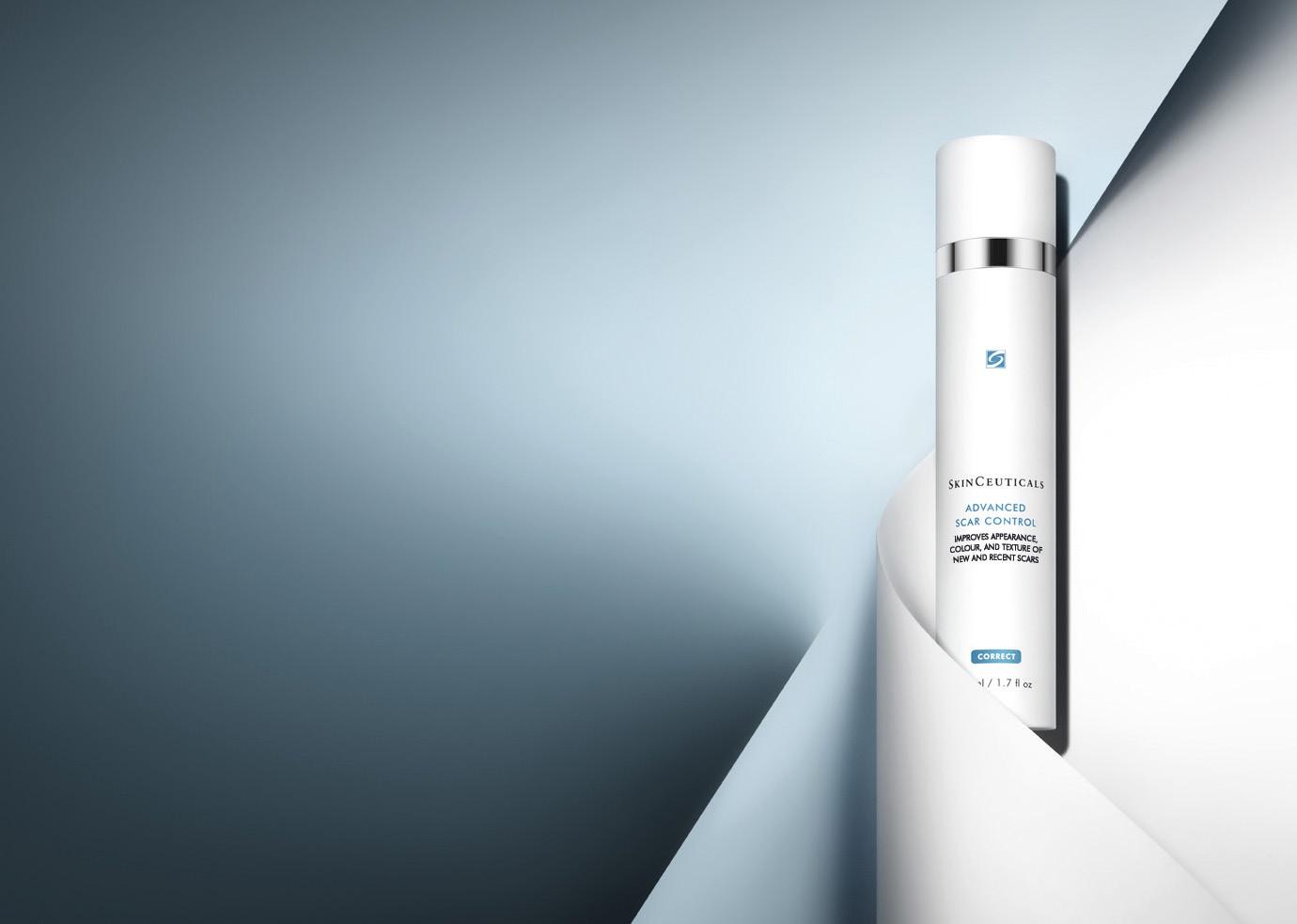
GOLD STANDARD PROTECTIVE TREATMENT HIGH-CONCENTRATION, INVISIBLE SILICONE GEL 93% AGREE OVERALL APPEARANCE OF SCARS LOOK IMPROVED * I NTRODUCING A D VA N C E D S C A R C O N T R O L SUITABLE FOR USE ON HEALED OR EXISTING SCARS SMOOTHES SCAR TEXTURE Gold standard protective ingredient in the medical community for scar care. Allows for versatile application since it can be used on the face and irregular skin of scar surfaces. 95% SILICONES A therapeutic ingredient known for its emollient properties, allantoin helps soothe and protect skin. 0.5% ALLANTOIN Naturally derived from sunflower seed oil, these fatty acids help modulate the expression of inflammatory mediators and improve skin moisturisation. 2.0% OMEGA-6, OMEGA-9 FATTY ACIDS An aerated form of silica to ensure a smooth, non-sticky texture for comfortable and versatile wear. 1.0% ULTRALIGHT SILICA *Self-assessment, 30 subjects REDUCES THE APPEARANCE OF DISCOLORATION FOR MORE INFORMATION, PLEASE CONTACT THE SKINCEUTICALS TEAM ON CONTACT@SKINCEUTICALS.CO.UK







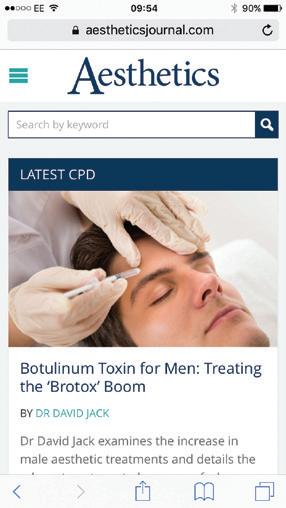
AESTHETICSJOURNAL.COM Keep up-to-date with the latest aesthetic developments and best practice guidance on your desktop, tablet or phone AESTHETICSJOURNAL.COM @aestheticsjournaluk Aesthetics @aestheticsgroup
Tackling Patient Complaints
Customer service professional Miranda Pearce outlines her nine-step complaints management formula on how to deal with patient dissatisfaction
As an owner of a medical aesthetic clinic for the last 13 years, and a former complaints manager at the predecessor to the Care Quality Commission (CQC), I know all too well the sinking feeling you get when a patient complains that they are not happy with the way they have been treated.
During this moment, many thoughts race through your mind. You worry that you are not good at your job, that the patient will leave bad reviews all over the internet, or worst-case scenario that you will be sued and lose your licence to practice. This gut-wrenching feeling is perfectly normal but thankfully there is a solution. In this article I’m going to share the nine steps in the complaints management formula I have developed over the last 13 years that, if followed correctly, will help you resolve patient complaints and will mean you will rarely need to involve your insurers, let alone any lawyers.
1. Accept the complaint
You might not want to hear this, but you will receive complaints when you enter into business in aesthetics. Common complaints can range from unmatched expectations about treatment efficacy and longevity, right through to the impact of unexpected side effects. If you come from an NHS background, your exposure to patient complaints has been shielded by the complaints department, but you are in private practice now and must be ready to accept that some people will complain about aspects of your service. This does not necessarily mean that you are lacking in good bedside manner, have poor customer service, or are flawed in your clinical skills, nor does it mean that patients are ‘out to get you’. It is simply inevitable that if you perform a significant number of aesthetic treatments per
3. The vent call
year, a fraction will result in a complaint. Once you learn to accept the inevitability of complaints you are less likely to take your ego into the situation.
2. Acknowledge your role
As a healthcare professional instead, the number one characteristic you are known for is your empathy.
Your relationship with your patients could be likened to that of a parent and child. You do everything in the best interests of your patient, as a parent would do for their child. But the tables can feel turned the moment you receive a complaint, and suddenly you feel like the child – vulnerable and exposed. However, the truth is that you are still the one with the power. The complainant is by far the more vulnerable party, and what do children do when they feel vulnerable? They act up and throw a tantrum. Your complainant is no different, so it is time to use your best skill –your empathy.
The more you take the time to step into their shoes, the more likely you are to make them feel heard. In my experience, people who feel listened to are far less litigious and dangerous to your business. If you approach the situation defensively then it will more readily escalate to involve legal proceedings.
Do not be tempted to try and manage a complaint via text message or email, even if the complainant initiated the grievance on a messaging platform; you need to speak to them so you can empathise, let them vent, and listen to their side of the story. Reassure them that their complaint is important and arrange a good time to discuss it over the telephone, either with you or your practice manager for larger clinics.
When you speak to them – exchange pleasantries and acknowledge their need to complain – start the conversation with a statement that lets them verbalise their problem – “Tell me everything.” Your job now is to listen, do not interrupt, until you really understand their complaint. You can ask more open questions if you need more clarity, but above all, listen and take detailed notes for your records and to help jog your memory later.
4. Summarise the complaint
Your empathy is worthless unless the complainant hears that you have understood them. You do not need to agree with them, but once they have finished airing their complaint, it is paramount that you summarise it back to them; for example, “Thank you for sharing that with me. So, if I’m hearing you right, you felt that [Insert issue] and that affected you because you felt that [Insert effect it had on them]. Does that sound right?” Give them a moment to acknowledge if you have interpreted things correctly and be silent. If they respond in the affirmative, then you can move on to the next stage. Repeat the process if they start going over their complaint again.
@aestheticsgroup @aestheticsjournaluk Aesthetics aestheticsjournal.com Reproduced from Aesthetics | Volume 8/Issue 12 - November 2021
Dual Power World leading specification 125W Alexandrite and 180W Nd:YAG lasers combined with a 30mm spot size provides unparalleled power and speed.
Moveo Technology
Exclusive DEKA technology for virtually pain free treatments for all skin types.
What The Market Needs
This flexible dual-wavelength system treats a wide range of indications including spider veins, leg vessels, pigmented lesions, and skin laxity.
GAIN power in your practice
Visit Lynton.co.uk to find out more @dekalaseruk
 Supported in the UK by Lynton
Supported in the UK by Lynton
5. Do not rush the complaint
The vent call is not the same as the solution call, so do not think you have to resolve everything in one conversation. Explain that now you understand their concerns, you need to take some time to review your consultation and treatment notes if applicable. You may also request their permission to discuss the complaint with others, such as a training mentor. Do not tell them that you are going to talk to your insurance company as this is a sure-fire way to escalate the complaint.
By following these steps, in 13 years we have only ever had to refer two complaints to our insurers. Conclude the call and inform them that you will ring them back – ideally within a 24-hour period – and stick to it.
6. Plan your solution call
It is vital to establish what the complainant truly wants from this process, because if you get that wrong and offer a voucher to someone who wanted the system changed, you could offend them. You will be clearer on their goals after the vent call, but they tend to fall into one of these categories:
1. Fix me – most patients are seeking a means by which you can rectify the perceived shortcomings from their treatment.
2. Hear me – in some cases it is simply about being heard and seeking reassurance that you understand how the events have impacted them.
3. Refund me – they may seek a full or partial refund, or a gesture of goodwill such as a voucher or additional treatment session.
4. Protect others – some may be seeking reassurance that other people will not suffer in the same way and want you to change operational aspects of your business.

You should also consider your goals so the solution you offer will not make you resentful later. Are you primarily focused on safeguarding or your reputation? Are you focused on avoiding financial loss, for example, by giving away freebies? You also need to consider contagion to ensure that any goodwill gesture does not lead to the complainant’s friends targeting you. If you are considering a refund, then you should consult your insurance provider.
7. The solution call
You are ready to call them back and offer a solution. Here is my proven framework to follow:
Step 1: Thank them – start the call by thanking them for sharing in the previous call.
Step 2: Tell them what you have done – it is essential that they feel valued and that you have taken their complaint seriously, so explain the efforts you have spent on your investigations.
Step 3: Hint at a solution – keep them engaged at this early stage by expressing that you have a way forward that you believe will work for them.
Step 4: State your side and acknowledge the complainant –clinically speaking, you may not have done anything wrong, so it is reasonable for you to diplomatically acknowledge this by referring to a side effect previously discussed during their consultation unfortunately being one of the possible outcomes of treatment, for example. If you have also learnt something from this complaint, such as your communication could have been better, acknowledge this too. Do not hide from your mistakes because it will only anger
the complainant more. If you realise that you have fallen short clinically, seek guidance from your insurers before the call.
Step 5: Preface your proposed solution briefly by explaining the reasoning – if you have chosen to offer a gift, refer to it as a goodwill gesture, so they understand it is not an admission of liability. For example, ‘I value you as a patient, so I’d like to offer you….’
Step 6: Offer the solution – explain the solution and the next steps to action it – for example booking a follow-up appointment, sending a voucher, or an explanation of how your procedures will be changing.
Step 7: Get their commitment – ask them if the solution works for them. If they do not respond in the affirmative, you can repeat steps four to seven until you reach an agreement.
8. Implement the solution
It may seem the obvious thing to do; however, it is very easy to procrastinate and fail to implement the solution that you have agreed upon. This could put you back to square one and break the hard-earned trust that you have just built up.
9. Reflect
As medical professionals, reflective learning is habitual in clinical practice, so ensure you use this skill in your business practice. Reflect upon each complaint, with your wider team, and what you can learn from it. It is important to have your complaint process written down and ensure it is followed in the same way each time by applicable team members. Learn to value the experience and use it to your advantage for next time, because let’s face it, there will be a next time.
You can now manage complaints like a pro!
Remember, you will get complaints now that you are in private aesthetic practice. Do not fear them, and instead own them. The more you can see the complainant as vulnerable instead of a threat to you, the better you will be able to empathise and make them feel heard, the more bespoke your solution will be to theirs and your needs, and the less likely the situation will be to escalate.
Miranda Pearce co-founded SkinViva Clinic in 2008 with her husband Dr Tim Pearce, and the team’s customer-first approach is reflected in more than 1,200 five-star reviews online. In 2013, the SkinViva Academy was born, and so began Pearce’s deep bond with other aesthetic business owners. She is now dedicated to helping clinicians grow their aesthetic businesses through social media marketing.

@aestheticsgroup @aestheticsjournaluk Aesthetics aestheticsjournal.com Reproduced from Aesthetics | Volume 8/Issue 12 - November 2021
Reflect upon each complaint, with your wider team, and what you can learn from it
Choosing a Device for Your Clinic
floor room with a concrete floor, because the device will not work if the floor is unstable due to the intricacies of the work it does with hair follicles. Is the treatment noisy? If so, consider where you could locate this device to ensure it does not disturb patients in other treatment rooms. If you have a laser, will it need its own room with a specialist power socket as advised by the laser company? If so, you will need to work around that when booking patients in and ensuring you have enough space in the room.
Who will carry out the treatment?
If the treatment can be delegated to a therapist, for example HydraFacial or radiofrequency skin tightening, this may be more cost-effective depending on the prices you are charging. However, if it can only be carried out by a medical professional, you should take into consideration how much the treatment costs, and factor in whether you have the time to spend carrying out an hour-long treatment when you could be earning more in that hour doing injectables. Of course, selecting a device that can only be used by medical professionals may give you an advantage over non-medical practitioners, so it’s something to weigh up during your search for a new device.
How to source your device
Investing in a new device for your clinic can be a protracted process as so much is at stake. Selecting the right technology or device can deliver excellent clinical results, expand your treatment menu, attract new patients to your clinic, deliver a rapid and healthy ROI, set you apart from your competitors, increase revenue, and create very happy patients. However, selecting the wrong technology can also damage your reputation if it fails to deliver the results promised, trigger exorbitant running costs if you failed to weigh up the expenditure on consumables, be a threat to patient safety, and be a very expensive learning curve.
What DO you need?
The first thing to consider when choosing a device is the type of treatment you wish to provide. You cannot, and should not, even begin to go shopping until you understand what it is you want to offer. When thinking about what might benefit your clinic and your patients, it’s worth considering some of the following:
What is there a demand for?
You may want to introduce muscle building at your clinic, but if your patients aren’t the right demographic (perhaps because of cost, medical history, preferences, or because they have too much body fat to see results from muscle building treatments), then it would be a risky investment. That’s not to say you can’t bring a new treatment on board to attract a different demographic, but you must understand that working this way involves a lot more effort on your part and will also have a slower return on investment as you take time to promote the treatment to attract new patients.
How adaptable and versatile is the device and/or clinic?
Can the device be moved from room to room or does it have particular room requirements such as certification from the Care Quality Commission, concrete floors, non-standard power sockets etc. For instance, if you are considering hair restoration you must have a ground
Once you have taken into consideration the above, it’s time to make a start researching what’s out there. To help find new companies, it can be a good idea to go to big conferences and exhibitions like CCR or ACE, where all the latest devices are under one roof! Be warned; it’s a crowded marketplace with new devices popping up constantly, so stay focused and try not to get your head turned by the latest ‘shiny new device’ if it doesn’t fit your demographic, budget, or business plan. For those devices that do tick the boxes, gather as much information as possible.
Conduct safety research
When looking into a device, you should ask for clinical studies and peer reviewed papers from the device provider, and also take a look into who sponsored the study. Is it specific to this brand and device or is it a generic study for the technology? Are the results measurable and replicable for most patients? Is it cleared by the US Food and Drug Administration (FDA) and if so, is it specifically this device and for the treatment you wish to carry out? Sometimes an FDA attached to a device is for something else rather than the
@aestheticsgroup @aestheticsjournaluk Aesthetics aestheticsjournal.com Reproduced from Aesthetics | Volume 8/Issue 12 - November 2021
Business consultant Vanessa Bird explains the best way to navigate through the process of selecting a new device
intended treatment, so be sure to check. It also goes without saying you should check the safety profile of any device, looking into whether there are any adverse reactions listed for the device publicly. Ask the device company whether they’ve had to log any from other practitioners, and also look into any contraindications that would limit who you treat.
Conduct treatment research
You should also take time to look into the treatments available with the device. Is there any downtime and if so, what aftercare and follow-up is needed? You may need to consider the cost of any emollients, dressings or skin creams that the patient should use post-procedure to aid recovery and protect the skin.
It’s also worth considering whether this is a single treatment protocol or a course of treatments. If you have a lot of patients who travel many miles to see you, how practical and cost-effective is it for them to return each week for a course of four or more treatments? If they can’t adhere to the treatment protocol, then the results will be compromised, and you will have unhappy patients complaining that they didn’t see results. So, in this instance, you may be better looking for a single-protocol device over a device that necessitates a course of treatments. An often overlooked yet important consideration is the running costs. How much is spent on consumables per treatment? Some treatments can be sold at £3,000 upwards, however if half of this is spent on consumables then it isn’t quite the money-spinner you need it to be. So, be sure to calculate the cost per treatment to see whether it’s financially worthwhile. Ask your device provider for the costs of any ongoing consumables and also the recommended pricing structure for the treatment. From that you can work out whether this will have a more rapid return on investment or not.
Check the reputation
As well as looking into the device itself, it’s always important to know who you are buying the device from. Is it a manufacturer or a distributor, as often this may affect the support and aftercare you receive, especially if distributors are coming to the end of their contract. There have been instances where a distributor for a particular device decides to end their contract with the manufacturer before a replacement has been found, leaving their install base without
any UK-based aftercare or support. This is extremely problematic should your device break down or you need additional training for new staff. Ask how long their contract with the manufacturer is running before you make your decision.
You should also ask your peers what they say about a particular company. It’s great if they say a company is always going the extra mile, supporting customers and helping them maximise profits from their investment, however alarm bells should sound if they say the company they purchased the device from had little interest in them after the sale and they could never get hold of their rep. You need a company who responds in a timely manner to any service, training or business support queries you may have. You may have the best technology available and purchase it at the best price but if you cannot get hold of someone when you need help, advice or support you’ll soon wish you purchased elsewhere.
I also recommend searching online for reviews about the treatment and finding out what patients are saying about it, as this is where you’ll find the unfiltered truth about whether they feel it’s worth the money and if it delivers the promised results.
Shortlist and demo
Once you have shortlisted your devices, it’s time to request a demo. In most instances a company will be happy to oblige and either arrange to bring a device to your clinic for a demo or arrange for you to visit another clinic or their training center. If they refuse to demo, ask yourself why this might be. Perhaps the results aren’t as promised, and they don’t want you seeing that. During the demo ask if you can carry out a supervised treatment on a patient so you can feel how difficult or easy the applicator is to use, then get on the treatment couch and experience it for yourself. Get your team involved and encourage them to ask questions and try it for themselves so you can get a variety of opinions and feedback to help you make your decision.
Research the package
Once you’ve chosen your device it’s time to negotiate. It’s not just the sale price you should consider but what comes with it. Key things that you need to look at include the warranty and service package, how much training is included, what marketing materials you receive, what their upgrade policy is should a newer device be released, what
the call-out response time is if you have a problem, if they have courtesy machines if yours needs to be fixed, and the ongoing service costs once the warranty has expired. The package is almost as important as the device purchase itself because extras like a warranty, a service package or training all cost money when paid for separately outside of the package. Ask the device company how much their annual service package is each year and how much it will cost you each time you need new members of staff trained up. If it is expensive then negotiate a longer service package or more training as part of the deal. Don’t just be swayed by a good price on the immediate sale as this is the start of a long partnership and you need to ensure what you receive afterwards is going to meet your needs. Sometimes it is better to forgo a discount on the device and get a longer warranty and service package, as they will be worth more over a longer period of time and give you peace of mind.
Start searching!
Buying a new device is a huge investment and there are many things to take into consideration before making a choice. If you take your time and follow the points outlined in this article you should greatly improve your chances of selecting the right device for your clinic. Remember, your professional reputation is based on the results you deliver and the safety of the treatments you provide so take steps to preserve it by carrying out due diligence when researching and selecting new devices.
Vanessa Bird is the founder of The Aesthetic Consultant. She has more than two decades of experience working in sales and selling capital equipment before starting her consultancy business. This experience has given Bird valuable insights into the aesthetics industry, allowing her to recognise key areas for partnership development between device companies and the customer.

@aestheticsgroup @aestheticsjournaluk Aesthetics aestheticsjournal.com Reproduced from Aesthetics | Volume 8/Issue 12 - November 2021
As a consultant psychiatrist, Dr Max Malik believes that the psychological aspects of aesthetics are vital when consulting and treating patients. Starting out in aesthetics 13 years ago, Dr Malik completed his post-graduate diploma in Practical Dermatology from Cardiff university. His training took him around the world and eventually led him to become a hair restoration surgeon. He comments, “I have always had a strong interest in aesthetics, as well as dermatology. My post-graduate dermatology training was challenging, but I believe that the skin is one of the most important features to us and I have often found patients tend to become less confident if their skin becomes disrupted with conditions such as acne or melasma. It’s a similar situation with hair loss, and my training to become a hair restoration surgeon was carried out in a variety of countries with numerous intensive courses and training opportunities.”
Opening his clinic Dr Max & Associates, Dr Malik began working in Birmingham during 2008, where his clinic slowly grew, and he re-located to Edgbaston Medical Quarter. “I decided to convert a listed building into a purpose-built clinic and wanted to devote my time into making the clinic the best it could be. The new premises allows patients to continue to seek facial aesthetics, dermatology, hair surgery and psychiatry services, as well as new wellbeing opportunities including yoga and relaxation techniques.” Alongside his own clinic, Dr Malik has worked on Harley Street and continues to work at the Dr Rita Rakus Clinic in Knightsbridge, London, one to two days a week. He returned as a consultant psychiatrist for the NHS, after the pandemic to assist, which he enjoys alongside his aesthetics work. He adds, “I’m proud of being able to change the way my patients feel about themselves, giving them great results
and psychological support, so I can help them improve their confidence.”
Dr Malik also trains medical practitioners at a one-to-one level, in all facets of aesthetic medicine. Dr Malik notes, “I believe that we should not be ‘normalising the abnormal’, as faces that have been treated and appear outside of the normal anatomical boundaries, whether they be overfilled, asymmetrical or an abnormal shape are all poor results. You don’t need to be a specialist in medical aesthetics to know when something does not look correct on someone’s face.”
Throughout his career, Dr Malik has been a member of numerous associations including the British Association of Hair Restoration Surgeons (BAHRS), the International Society of Hair Restoration Surgeons in the US, the British College of Aesthetic Medicine (BCAM) and The Royal College of Psychiatrists. His new role as a Merz Innovation Partner allows him to extend his expertise and knowledge to other practitioners within the field. “My role within Merz is to help practitioners develop their skills with training, which includes offering advice on how to talk to patients from a psychological point of view. As well as speaking about the wide range of Merz products, I have recently hosted a webinar arranged by Merz, on the psychological aspects of wellbeing within aesthetics, which was a great success! I love to help other practitioners with their consultation and patient follow-up, as ultimately it is about longterm patient care and helping to develop ongoing confidence within patients, as well as a successful aesthetic result. Merz has helped in this aspect and share a similar ethos to my own values as an aesthetic practitioner. It is particularly crucial in an industry such as aesthetics, considering the current situation regarding unregulated practitioners.”

Being a medical practitioner today, Dr Malik insists that safety is key in aesthetics. He explains, “The most frequent complications
in aesthetic medicine are the psychological ones. These can persist potentially for longer, which damages the patient’s mental health. It is important to set realistic expectations to patients as this prevents dissatisfaction with the end results. As well as this, body dysmorphic disorder is often missed, so it’s important to understand this when consulting patients and discovering the true reasons they are seeking aesthetic treatments.”
Reflecting on his career thus far, Dr Malik advises practitioners to gain expertise within aesthetics. He reflects, “Aesthetic medicine is a specialty, with many branches to it, similar to any other speciality in medicine. Throughout my career, the fact that I have achieved knowledge in facial aesthetics, dermatology, as well as become a hair restoration surgeon and psychiatrist is pleasing. I now wish to concentrate more on facial aesthetics, because that is what I enjoy the most.”
Favourite treatment to perform… I love performing full-facial enhancements with injectables whilst achieving a natural result.
Biggest achievement in aesthetics… Being able to treat the whole face safely for both men and women, helping to restore or improve their self-image and confidence.
Best piece of career advice… Don’t try and be all things to all people, know and practice your special area of expertise to the highest level!
Date of Preparation: October 2021
M-MA-UKI-1658
This article is sponsored by Merz Aesthetics
“It is important to set realistic expectations to patients as this prevents dissatisfaction with the end results”
Aesthetics | November 2021 68 @aestheticsgroup @aestheticsjournaluk Aesthetics aestheticsjournal.com Advertorial Merz Aesthetics
Dr Max Malik discusses his new role as a Merz Innovation Partner and how psychology plays an important role in aesthetics
In The Life Of Dr
Stefanie Williams
Dermatologist and clinic owner Dr Stefanie Williams discusses her working day and the development of her new skincare range

A day at the clinic…
On a clinic morning, I would wake up at 7am and do a quick sun salutation or yoga exercise in front of the open window. I will eat breakfast with my husband and two of my children (the third one is at university in Leeds) before they head off to school. I get ready for work and aim to leave the house between 8-8.30am to catch the train to Vauxhall in London, where my clinic Eudelo Dermatology & Skin Wellbeing is located. I usually arrive at the clinic around 9:30am. Before we start seeing patients, my team will have a daily huddle where we congregate to discuss our plans for the day. This allows everyone to understand if there is anything important to know or be aware of throughout the working day. As we have around 25 staff members, it is also a good opportunity to see who is working that day.
Throughout a typical clinic day, I’m usually back-to-back seeing patients until the evening. Every day is different, with a variety of medical and cosmetic patients to see, which makes every day varied and exciting. All my patients are booked into the same diary, so I don’t have specific slots which are reserved for a certain type of medical or aesthetic enquiry.
I never work alone, and I always have an assistant in the room with me throughout the day. In the clinic, there might be another dermatologist or doctor in, so we often exchange knowledge and medical experiences. For example, recently I had a complex pregnant medical patient come to see me, so I consulted with another member of the dermatology team to get a second opinion. We naturally needed to be sure that the treatment we are recommending is safe for the baby as well as for the mother.
I usually arrive home around 8pm and may spend some time on my art as I’m currently completing a part-time master’s degree in Fine Art. It is a two-year course and I’ve already finished one year. I feel that the Fine Art degree also helps with my aesthetic work, as it adds a different level of keeping the eye trained to perceive.
My new skincare range…
As well as completing my master’s, I have been developing my own skincare range Delo Rx for the past two years, which is so exciting! I created the range from scratch, together with a cosmetic chemist, as I’m incredibly specific in what I want. It has taken a long time to develop as it is aimed at a problematic target audience. It is an advanced antiageing range, but with the products specifically tailored to be suitable for adult women with breakout prone skin, including adult acne, rosacea and periorificial dermatitis.
It’s a niche product range that resonates with my expertise as a dermatologist with special interest in acne and rosacea. We are
Favourite aspect of my job…
Seeing my patient’s skin improve makes my job so rewarding.
My hobbies include…
As well as fine art, I really enjoy meditation and I’ve started a nineweek online breathwork workshop.
Career if you weren’t a dermatologist…
Cosmetic chemist! I’ve loved developing my skincare over the past two years and have found it such an interesting project. Before this, I would have said a midwife.
developing seven products in total, making it a ‘capsule wardrobe’ of skincare which will be available in cosmetic clinics and very selected retailers. The range contains everything our patients’ skin really needs with regards to antiageing and maintenance. That’s particularly important for breakout prone skin, as one of the key problems with this skin type is that you don’t want to overload the skin with products, as this can lead to clogged pores and more breakouts as a result. All products are very lightweight in base formulation and not only low in oils, but also silicone derivatives, which is a huge formulator challenge. The range will include a cleanser, an innovative retinoid, a lightweight anti-inflammatory moisturiser, an antioxidant serum, SPF, anti-pigmentation serum and an eye cream. The products will be released in intervals with the first product, the Delo Rx Hybrid Cleanser out now. I started with the cleanser as this is arguably the most important step in a skincare routine for breakout prone skin! The Delo Rx Hybrid Cleanser contains the highest level of active ingredients on the market. It clears pores thoroughly, while at the same time being suitable even for very sensitive skin.
Most memorable day in my career…
The most memorable moment I can think of to date was back in spring 2020 after the first COVID-19 lockdown in the UK. After a few months of the clinic being closed, me and my team were finally ready to reopen again; we were all very excited. However, on the Sunday evening, before the Monday reopening was scheduled to happen, myself and my husband Jay went into the clinic for a final check to ensure everything was ready. But we arrived at a flooded clinic! It was the most heart-sinking feeling ever, and I cried in frustration. Together, the two of us, a cleaning team and Thames Water (who arrived at 2am!) managed to get the clinic dry and disinfected overnight – hours of work, sweat and tears later – we finally were able to open the clinic the next day after all. It was a very memorable moment, albeit not in a good way!
@aestheticsgroup @aestheticsjournaluk Aesthetics aestheticsjournal.com Reproduced from Aesthetics | Volume 8/Issue 12 - November 2021
The Last Word
As the 2021 United Nations Climate Change Conference (COP 26) commences, taking place between October 31 and November 12, I have been reflecting on what I am contributing to the Earth’s health. 78% of the earth’s surface is covered in water and as a result, a majority of our plastic ends up in the ocean with plastics consistently making up 80% of all marine debris studied,1 polluting and destroying our ecosystem. Everything we use has an environmental impact on the climate. Sustainability consulting firm Zero Waste reported that 120 billion units of packaging is produced by the global cosmetics industry annually and a majority of this is not recyclable. However, of the recyclable packaging less than a third of all plastic in the UK is recycled2 and worse still, it is shocking how much of what we believe to be recyclable is not ― just ask the oceans! In 2016, a study estimated that 12 million metric tons of plastic was dumped in the ocean every year.3 Plastic production is forecast to grow by 60% by 2030 and to treble by 2050.4 Were you aware that it takes almost 1,000 years for the average plastic pot of moisturiser to decompose?
On reflection, at home, I am very environmentally aware ensuring we recycle where possible, purchase as minimal single use plastic and years ago, I made the decision to drive an electric car. I encourage my daughter to be aware of the planet and the effect of our actions on it, yet at work I unfortunately do very little at present. We have no environmental or recycling protocols and the only obvious effort we make is to recycle our cardboard boxes.
The above statistics show it’s important that my clinics, as well as the rest of the aesthetics industry, make a conscious effort to change and aid environmental issues.
How clinics impact climate change
Climate change and the environment is increasingly becoming a pivotal topic in the cosmetics industry, with companies transferring towards greener packaging and incorporating environmentally friendly ingredients in their products. The ban on
microbeads in beauty and personal care items was a positive step and this is driven by both the industry and green consumerism.5 At present, I can see less of this movement in the medical aesthetics specialty. So, what is the impact of the aesthetics industry on the planet? In medicine we cannot change the number of single use products that we wield but we could recycle the paper, plastic and cardboard packaging. What can we do as a clinic? This is even more important now with the increase in demand on our clinics with the recent COVID-19 pandemic and the need for additional personal protective equipment (PPE) and cleaning products.
Simple steps to becoming environmentally friendly
I believe the first step in becoming more environmentally friendly in your clinic is to analyse the areas where we can make impactful changes. Mobile apps such as Klima can be used to assist with this process, as it can help us to track our carbon footprint and learn how to reduce our impact. The easiest step to begin with is recycling. Clinics will have many cardboard boxes containing deliveries, and paper packaging for our consumables. In my clinic we have a clinical waste and general waste bin in the clinical rooms, but I plan to add an additional recycling bin in order to encourage the recycling of day-to-day packaging. However, it is not as simple as placing packaging into a recycle bin as this may not result in the items being recycled. Programmes, such as TerraCycle or Return to Origins, offer free recycling for all beauty product packaging. Apps such as Horizon can also be used to scan product barcodes and learn how to recycle them in your area. This requires little effort with no increased costs and in my opinion, the resulting improvements are worth the extra dedication. I plan to ensure that the bags we use for cosmeceutical purchases will be recyclable, reusable and not contain plastic, so that these are easily recyclable for our patients after use and can cut down the amount of waste that our clinic contributes to.
In addition, I’m implementing a new protocol in my clinic that all staff will have reusable
non-plastic water bottles, and there should ideally be no single use plastic bottles in clinic at all. For sparkling water, I would advise that clinics purchase a machine which will produce carbonated water rather than buying bottles. We have world class running water, so why buy bottles at all!
Cleaning supplies, where possible, should be changed to environmentally friendlier chemicals that have more sustainable packaging such as fatty acids C8-18, denatured alcohol and lactic acid. Many manufacturers also now have refillable containers reducing plastic waste and there are more eco-friendly chemical products available for the general clinic cleaning.
Clinics can also reduce the temperature of the washing machine and dishwasher to reduce the amount of energy we use. As a bonus this reduces costs too. Educating staff and encouraging them to save water by working as a team and communicating about when we need to use and save energy is also integral. Clinics should also start analysing electricity and gas suppliers to investigate if there are more environmentally friendly suppliers available, such as OVO energy, and at what cost. Governments have targets as to the production of renewable energy, so we can push ourselves towards the consumption of natural power.
Get started!
I believe we all have a responsibility to do our part to protect the environment. If we start to become more aware of our environmental impact, we can create a positive movement towards a greener future for both the industry and the planet. We can be leaders in a world where so many people look to us for solutions. We can set a wonderful example to our patients and our colleagues to make as much effort to preserve our planet as we do in preserving ourselves and our patients.
Dr Heather Muir qualified as a dentist from Glasgow University in 1998 and went on to complete a master’s degree in non-surgical facial aesthetics at the University of Central Lancashire in 2013. Dr Muir is now lead clinical practitioner and director of Your Face Aesthetics.

Qual: BDS, MSc
REFERENCES
1. Eunomia, 2016, <www.eunomia.co.uk>
2. Plastics Europe, 2020, <www.plasticseurope.org>
3. IUCN, 2020, <www.iucn.org>
4. Center for International Environmental Law, 2019, <www.ciel. org>
5. Shannon Kilgariff, Microbeads in Aesthetics, 2016, <https:// aestheticsjournal.com/feature/microbeads-in-aesthetics>
With climate change and sustainability becoming a vital topic, Dr Heather Muir outlines how clinics can become more environmentally friendly
@aestheticsgroup @aestheticsjournaluk Aesthetics aestheticsjournal.com Reproduced from Aesthetics | Volume 8/Issue 12 - November 2021





www.venusconcept.com +44 (0) 208 748 2221 | info.uk@venusconcept.com INNOVATIVE, NON - INVASIVE TECHNOLOGY FOR YOUR MEDICAL PROCEDURES

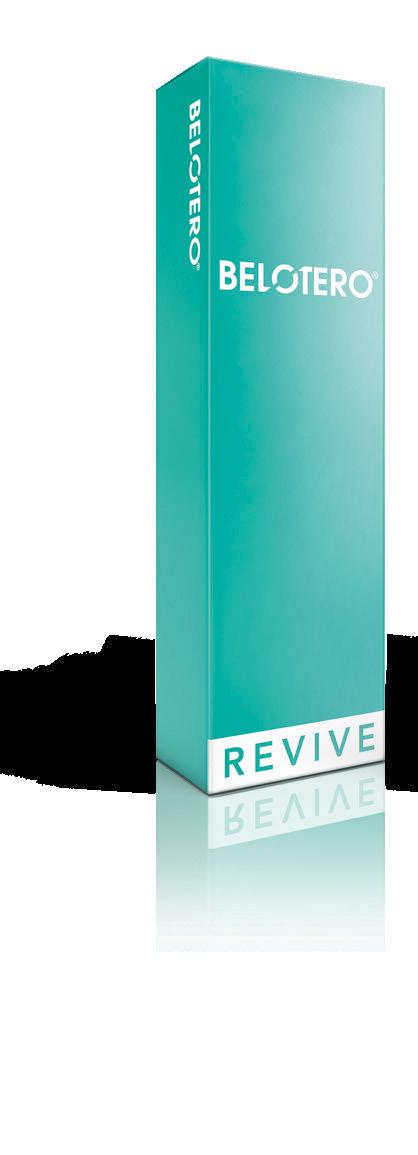

NO FILTER. JUST YOU. @merzaesthetics.uki merz-aesthetics.co.uk Merz Aesthetics UK & Ireland Adverse events should be reported. Reporting forms and information for United Kingdom can be found at www.mhra.gov.uk/yellowcard. Reporting forms and information for Republic of Ireland can be found at https://www.hpra.ie/homepage/about-us/report-anissue/mdiur. Adverse events should also be reported to Merz Pharma UK Ltd at the address above or by email to UKdrugsafety@merz.com or on +44 (0) 333 200 4143. 1. Belotero Revive IFU 2. BELOVE 2019 Facial skin revitalization with CPM-HA20G an effective and safe early intervention M-BEL-UKI-1215 Date of Preparation August 2021 BELOTERO® Revive is the newest product in the BELOTERO® portfolio of fillers indicated to revitalise the signs of early onset photodamaged facial skin. • Improves skin hydration1 • Increases skin elasticity and firmness1 • Smooths skin texture1 • Reduces pigmentation2 NEW





























































































































































 Daron Seukeran
Daron Seukeran


 Figure 2: Classical plaque psoriasis
Figure 3: Classical nail changes as seen in psoriasis
Figure 2: Classical plaque psoriasis
Figure 3: Classical nail changes as seen in psoriasis


























































































 Supported in the UK by Lynton
Supported in the UK by Lynton



























